
Canada in January 2024: Guide to visiting Canada in winter
Love it? Share it!
Planning a trip to Canada in January? You will find our complete guide useful in preparing for an awesome winter break in the Great White North.
January marks the coldest month in Canada . Most of Canada is blanketed in snow, making it the perfect time to enjoy winter activities such as skiing and snowboarding.

However, if you’re not a fan of the cold weather, don’t worry! There are plenty of indoor activities to enjoy as well. Check out our guide for everything you need to know about Canada in January.
Visiting Canada in January: Guide to visiting Canada in winter

Disclosure: This post contains affiliate links. If you click one of them, we may receive a small commission at no extra cost to you.
Top 8 places to visit Canada in January
- Banff and Jasper National Parks – for winter activities, ski resorts, wildlife
- Niagara Falls – perfect for every season (+ Ice Wine festival)
- Ottawa – capital city, and ice skating at a bucket list destination
- Quebec City – for a slice of Europe in Canada (+Winter Carinal)
- Toronto – perfect for a weekend trip with lots of seasonal activities
- Montreal – city break (+ getaway to Hôtel de Glace aka the Ice Hotel)
- Whistler – ski destination
- Victoria – mild winter destination perfect for a city break/slow travel
What season is January in Canada?
January is winter in Canada . The weather is cold and most of the country is covered in snow. If you’re planning on visiting Canada during this time, make sure to pack your warmest clothes!
January is the coldest winter month in Canada. The average temperature in Canada in January is -15.5°C (59.9 F). However, temperatures can vary depending on which part of the country you’re visiting.

For example, if you’re planning to visit Toronto during this time, the average temperature is -4.9°C (23.18 F). If you’re heading to Vancouver, the average temperature is a milder 6.3°C (43.34 F).
When is winter in Canada?
The months from December to February are the official winter season in Canada.
Canada seasons: Canada has four distinct seasons: spring, summer, fall, and winter. The monthly breakdown is as follows
- Spring: March , April , May
- Summer: June , July , August
- Fall: September , October , November
- Winter : December , January, February
Canada in January weather and temperatures
January in Canada is in the middle of winter. There is snow in most parts of the country, even the west coast which is usually warmer than the rest of Canada will experience some snow showers.

The weather in January is cold and gloomy and the wind chill makes it difficult to venture outdoors without proper gear. On the other hand, this is a great time to hit the valley for skiing and snowboarding-related activities.
Here is what temperatures look like in various places in Canada in January,
What to pack for a trip to Canada in January?
Canada is quite cold during this time, so make sure you pack plenty of warm clothes.
A few items we recommend packing for Canada in January are:
- Long sleeve tops and T-shirts: Pack long sleeve tops and blouses so that you remain comfortable all day long. These are great for layering on
- Sweater or knit dresses and skirts : Pack knitted dresses or warm skirts for indoor events and activities
- Bottoms : Carry warm leggings, jeans, and snow pants
- Long Johns: Top and bottom thermal wear
- Loungewear: For use in the hotel/resort
- Warm and waterproof parka: This outerwear is important as you will be out and about exploring
- Sweaters and cardigans : Here is a cute one
- Snow boots: Ensure you are lined with warm material and have a thick and sturdy outsole . Click to view my favorite one
- Warm accessories: Pack gloves, beanies, scarves, etc. My favorite (colorful) beanie, is super warm too
- Moisture-wicking socks
- Travel documents: Ensure you have your tourist visa, tour, and hotel bookings, insurance, etc. in place
To stay warm and comfortable in Canadian winters, it is important to layer your clothing. Wear long-sleeve tops and bottoms with fleece lining (called thermal baselayers or long johns). This layer is meant to provide warmth while keeping moisture at bay.

The next layer is a lightweight jacket or cardigan which acts as a mid-layer. This is perfect for indoors, or when you get inside a restaurant or your vehicle.
The outerwear is a waterproof and warm jacket such as a parka . These jackets are insulated with (responsible) down feathers that provide you protection against winter elements.
When you are out and about in the city or at a national park, you do need to wear a warm jacket. Opt for one with a hood that you can use to cover your ears and head.

Winter accessories not only protect you, but they also make you look cute and nice against the snowy backdrop (or all-black outfit). Pack gloves, colorful beanies, and scarves to style your look!
All of the items listed above are available on Amazon Prime so they can be at your door in two days or less!
And last but not least, don’t forget your camera to capture all the beautiful scenery!
What is the best way to get around Canada in January?
In Canada, the best way to get around during winter is by car. This is because public transport can be unreliable due to the weather conditions, and many attractions are located at a distance.

Winter road trips are a fun way to explore the winter wonderland that is Canada, without having to step outside in the cold!
If you’re renting a car, make sure to have winter tires and an emergency kit with you in case you get stranded.
Driving in Canada in winter can be challenging, so make sure you’re prepared before setting off on your journey.
What can you expect to see in Canada in January?
January is a great time to visit Canada, for winter sports lovers. Yes, the temperatures are cold, but everything is also quite beautiful and lovely under the white wintery snow – like Narnia of sorts!

Winter is the next peak season after the summer months . But still, you won’t see HUGE crowds in indoor attractions like museums, restaurants, or shopping malls.
Skiing resorts and parking at the nature parks might be a challenge – partly due to the weather, and crowds, but you can plan ahead, and make reservations for an effortless getaway.

In the winters, particularly in January, you can experience shorter days, and the possibility of northern lights is also great in places like Yukon, Alberta (north), and NWT.
Cities celebrate New Year with a great show of fireworks on the night before. But keep in mind many restaurants and attractions might be closed on January 1.

Here are some of our favorite winter activities to do in Canada,
- skiing and snowboarding
- ice skating (indoor and outdoor)
- snowshoeing
- cross-country skiing
- visiting museums and art galleries and,
Festivals in Canada in January
Here is a list of popular festivals in January across the country

- Snow Days Festival in Banff National Park (Banff, AB) : Don’t miss this winter festival that has been ongoing for 9 decades in Canada’s oldest national park. This event brings in activities like ice-skating, ice hockey, ice statues and related exhibits, theater shows, etc to visitors!
- Ice Magic Festival (Lake Louise, AB): This free event takes place in Lake Louise, where you can see world-class ice sculptors showcasing their best creations on display at the frozen lake.
- Fete des Neiges Montreal Snow Festival (Montreal, QC): This winter festival takes place in downtown Montreal every year at Jean-Drapeau Park. You will find ice skating, snow games and amusements, ice hockey, and various cultural shows, at this paid festival. Note that it’s an open-air event, so make sure to dress warmly.
- The Toronto Fringe Next Stage Theatre Festival (Toronto, ON): Indoor theatre festival in the largest Canadian city, Toronto.
- Winter Festival of Lights (Niagara Falls, ON): Organised on multiple days in Niagara Falls, this Winter Festival of Lights is a delightful event to participate in with snow and lights! Don’t miss out on the Niagara Ice Wine Festival in January.
- Coldsnap – The Prince George Winter Music Festival (Prince George, BC): Join Coldsnap, a music festival that takes place in the province of British Columbia. It takes place in multiple locations in Prince George so do check out the listing before you go.
- Winnipeg New Music Festival (Winnipeg, MN) : Another music festival, and this time it is Classical music which is organized in the province of Manitoba. This event features a week of live performances, panel discussions, art, food, and more.
- Igloofest (Montreal’, QC): A premier outdoor dance party, considered to be the world’s frigid dance party. This music and dance event is completely held outdoors, under the stars in Montreal’s ‘Vieux Port’. Isn’t it wild (and freaking cool)?
- Whistler Pride and Ski Festival (Whistler, BC) : Enjoy a week of fun, pride, and skiing at one of Canada’s premier ski resorts. Whistler and Blackcomb are two majestic mountains that provide the perfect setting for an epic winter getaway!
Where to go in Canada in January?
If you are visiting Canada for winter activities, we have a list of resorts and national parks that we highly recommend. Keep in mind that it will be busy, so make preparations in advance.

But don’t forget the cities. Cities are not super crowded in January. In fact, you might get lucky with hotel deals, near-empty museums, and malls.
Most cities will have one to two festivals (winter lights, snow, music, wine/food related) in January, so definitely check out local listings prior to your visit.
Some of the best places to visit in Canada in January include Banff National Park, Whistler, Niagara Falls, Toronto, and Vancouver.
We have all the sightseeing and festival-related information compiled below.
Alberta: Banff National Park, Lake Louise, and Jasper National Park
Alberta is well-known for its winter festivals and activities, and stunning landscapes including the epic Canadian Rockies .

Alberta is cold in the winter, which makes it ideal for a snowy getaway, winter sports, and other activities.
Banff National Park and Lake Louise are the major crowd pullers to Alberta. Crowds arrive there to soak in the snowy landscape, winter hikes, wildlife sightings, and skiing, and skating opportunities.

Lake Louise is frozen this time, and yes you can walk, and skate here. Just ensure you dress right, and wear winter boots with cleats. For skating, you can rent equipment from the nearby Fairmont Lake Louise.
Lake Lousie Ski Resort is also one of the popular resorts in the country and one that shouldn’t be missed.
Other than skiing, you can go snowshoeing, or enjoy winter hikes. Ice walks in Johnston Canyon are also popular.

Apart from these two iconic areas, you can surely hit Jasper National Park in winter and hit the trails, or go skiing at the Marmot Ski Resort.
In the winter, you can chase the northern lights in Alberta in places like Jasper, or Vermillion Lake in Banff.
British Columbia: Vancouver, Victoria, Whistler, and others
British Columbia on the west coast has milder winters as compared to its Alberta neighbor. But you can still enjoy winter sports in places like Whistler, Squamish, Revelstoke, and Yoho National Park.

Whistler is ideal for skiers. The resort town of Whistler is only 2 hours by car from Vancouver and it hosted the Winter Olympics in 2010. You’ll like Whistler if you love winter sports.

Vancouver and Victoria are spectacular getaways if you wish to escape the snow. For the holiday season, the Capilano Suspension Bridge is illuminated, making it a must-see. You will be able to witness this event in January as well.

Victoria is home to Canada’s oldest Chinatown and the second oldest in North America, and you can enjoy some fantastic food here. You will also love it if the Chinese New Year is in January.
Don’t miss the Butchart Gardens that are illuminated during this time as well.
Ontario: Toronto, Niagara Falls, Blue Mountains, and more
Toronto is a massive city, Canada’s largest and most populous. If you like city travel, don’t miss out on Toronto.

During winter, indoor attractions like art galleries, castles, and museums won’t be crowded. You can also book a movie or theatre show during your trip.
Do add a day trip to Niagara Falls, which is epic in the winter too! Plan to check out the Winter Lights as well as the Ice Wine Festival during your visit. Read our full guide to Niagara winter activities here

Ontario is also home to Canada’s capital city – Ottawa. Ottawa is picturesque in winter and you can explore the Parliament buildings, museums, and more.
Plus go skating at the Rideau Canal! This is the longest skating rink in the world at 7.8 km or 4.8 miles and a UNESCO World Heritage Site – now don’t miss this! The popular Winterlude Festival takes place here in early February (in case you are extending your trip :))
In Ontario , there are numerous ski areas to select from. If you’re searching for a family-friendly ski resort, look no further than Mount St. Louis Moonstone in Barrie. This ski area is adjacent to Barrie and has over 35 runs that are suitable for all skill levels.

Blue Mountain Ski Resort is another popular spot for locals and visitors alike. No matter what ski resort you choose, you are sure to have a great time skiing in Ontario .
In addition to skiing, you can also go snow tubing, snowmobiling, ice fishing, and ice skating in Ontario.
There is no shortage of things to do in the province during the winter, including trying out ice wine. Ontario (and British Columbia) is known for its ice wine production, which is a dessert wine.
Quebec: Montreal, Quebec City
From fairytale cities to charming winter accommodations Quebec is a must-visit in Canada in winter.
For one, explore Montreal , which is a beautiful city in winter with its quaint streets and historic buildings. The outdoor ice skating rinks are a must-visit, and if you plan it well you can even join the IglooFest, which is an outdoor event held at the Old Port.

During the winters, visitors flock to Quebec City in droves. Although the city’s prime festival – Quebec Winter Carnival – takes place in February, the city is still beautiful in January, particularly the old town, with views of the iconic Fairmont Le Château Frontenac.
There are snowshoeing trails in and around the city, so you can have the best of both worlds – city sightseeing and snowy outdoors!
If you’re seeking a unique winter getaway that isn’t like the others, head to Gatineau. This city is located on the banks of the Ottawa River and has several parks and trails.

During the winter, you can cross-country ski, snowshoe, and ice skate in Gatineau.
Other than that, Quebec is home to the Hôtel de Glace aka the Ice Hotel, the only ice accommodation in America. This is a popular spot and is located about 2 hour drive from Montreal, so making reservations ahead of time is key.
Manitoba: Winnipeg
Winnipeg is the capital of Manitoba, and it is Canada’s coldest capital. You can enjoy winter activities like cross-country skiing, tobogganing, indoor skydiving, and more. For the adrenalin junkies, there’s nothing like dog sledding to get your heart pumping.
The Winnipeg New Music Festival takes place in January. Although Manitoba is known for Polar Bear Safaris (in Churchill), in January, the possibility of sighting them is rare.
More Travel Tips for Canada in January : FAQ
The answer to this question largely depends on what you’re looking for in a vacation. If you enjoy winter activities like skiing and snowboarding, then Canada is definitely the place to be in January! However, if you’re not a fan of the cold weather, you may want to consider visiting Canada at a different time of year. But one of the biggest advantages of visiting Canada in January is that accommodation prices are typically lower than they are during the peak season. So if you’re looking to save some money, January may be a good time to visit Canada.
January is the coldest month in Canada. On average, you can expect a high temperature of -2.3°C (27.9°F) and an average low temperature of -7°C (19.4°F) in January.
January is considered off-season in Toronto. If you love cities, you can expect fewer crowds, and also cheaper deals for hotels and other accommodations. Almost all the attractions (musuems, art galleries, etc.) will be open. Just like most of Canada, Toronto does experience colder temperatures. So do pack warm clothes and layer on when you head outdoors. Check public transit timings and alerts, so that you are not stranded in the cold. You can expect the temperatures to be similar to New York City in the United States.
Niagara Falls is amazing in the winter as well. In fact, as soon as summer and fall come to an end, crowds disappear from this popular attraction, making it perfect heaven for visitors to check out the falls, minus the crowds. The snow-dusted falls and the snowy landscape look epic in the winter. You can also check out the Winter Lights Festival in January at Niagara Falls.
Vancouver experiences milder temperatures as compared to most of the other popular destinations in Canada in January. Daily high temperatures are about 7 degrees C (44 F), with a low of 3 degrees C (37 F). There is some snow or showers, but it doesn’t last long.
Yes, Banff National Park is open in January. If you love winter activities, you will love visiting Banff in winter. It is the perfect time to hit the slopes, go skating in natural ice rinks, go on winter hikes, do ice walks, and go wildlife sightseeing. Although some of the hiking trails and road access might be closed, you can still enjoy winter drives from Lake Louise to Jasper via the Icefields Parkway , or in around Banff town as they will be still accessible in winter.
Here are some of our favorites for January, Quebec City Montreal Banff National Park and Lake Louise Vancouver Victoria Whistler Toronto Niagara Falls Ottawa Winnipeg
When is the best time to visit Canada?
The best time to visit Canada depends on what you’re looking for. If you’re looking to enjoy winter activities, then January is a great time to visit. However, if you don’t like the cold weather, we recommend visiting Canada during the summer months.
Canada is a beautiful country no matter what time of year you visit!
More Canada travel guides:
- Canada in the fall
- Canada in the spring
Pin: Guide to visiting Canada in January

Mayuri Kashyap is an Indian Canadian traveler, writer and photographer based in Alberta. She moved to Toronto as a student in 2009, and has been calling Canada home ever since. She started the blog - Canada Crossroads - to share her travel and living experiences in the Great White North!
A History graduate and an MBA, Mayuri is a destinations marketing expert. She loves traveling with her husband, Salil and soaking in experiences across Canada, India and Europe.
Similar Posts

Visiting Canada in June: Is it the best time to visit?
Canada is a country of great contrasts, from the sweeping prairies to the craggy coastlines. It’s also an incredibly diverse nation, home to people from all over the world who share their customs and traditions with one another. And Canada in June welcomes you to the best of sights, festivals, and natural wonders. In June…

70+ Best Souvenirs from Canada to take back home
Looking for the best souvenirs from Canada to bring back home? Or to give to a loved one? Among the many little pleasures of life, bringing home small souvenirs from our travels only makes the voyage more memorable. Even for the ones back home, it is truly a keepsake of something beloved that lasts a…

Visiting Canada in April: Things to do in Canada in April
Visiting Canada in April can be a great experience, as there are many things to see and do. The weather is usually mild, with temperatures ranging from 5 to 15 degrees Celsius, so it’s comfortable to explore outdoor attractions with little care. Several events take place in April so that you can enjoy various activities,…

100+ Interesting Facts About Canada
The world has been fascinated with the Great White North for hundreds of years, but there are still so many interesting facts about Canada that most people don’t know! We are happy to be calling Canada home since 2009, and in this article, we will cover some of the most interesting and fun facts about…

Canada in March: Epic Spring Break Destinations
Planning a spring break and wondering what it is like to visit Canada in March. March springs forward with longer days and warmer temperatures. But it still needs to be summer or full-on spring weather. March in Canada can be unpredictable, but with a little trip planning, you can have a great time here in…

40 Interesting facts about British Columbia Canada
We love British Columbia. It’s a beautiful place to visit, but it can be hard to find information about the amazing attractions in BC. We all know that Vancouver is one of the most beautiful cities in North America, and Victoria is an amazing capital city on an island by itself. But what else is…
Leave a Reply Cancel reply
Your email address will not be published. Required fields are marked *
Save my name, email, and website in this browser for the next time I comment.

Nina Out and About contains affiliate links and is a member of the Amazon Services LLC Associates Program. If you make a purchase using one of these Amazon links, I may receive compensation at no extra cost to you. See my Disclosure Policy for more information.
11 Best Things to Do in Canada in January From a Local
Table of Contents
Wondering if you should visit Canada in January? Let’s find out!
There’s no denying that January is cold. I was born and raised in Canada, so I know all about the freezing winter temperatures. I’ve walked my dog in -30°C when it was so cold my hair froze while dry!
But despite the cold weather, I actually really enjoy Canada in the winter.
And I’ve lived from Halifax to Toronto to Victoria, so I’ve experienced it across the whole country.
Canada becomes a winter wonderland in January, and there are so many things to do that you can’t find in any other season. It’s when it finally becomes the snowglobe that the rest of the world seems to think we are.
You can attend an ice wine festival, try some winter sports, and enjoy the gorgeous snowy scenery. Plus, you can find great deals on hotels and restaurants in January because it’s off-peak tourist season.
So, let’s dive into this guide and get you all set for an amazing trip to Canada!

Why Visit Canada In January?
Canada is absolutely breathtaking, and it’s a destination that should be on everyone’s winter travel list.
Believe it or not, Canada’s winter tourism is booming! The landscapes are transformed in the winter, with snow-capped mountains in the western provinces and bustling Christmas markets in the east. It feels like a fairy tale!
The ski slopes are world-class, the ice-skating rinks are plentiful, and you can even see the Northern Lights a short drive from the city.
Don’t let the cold deter you – January offers so much to do. Plus, you can save a lot of money, especially in popular summer destinations like Vancouver, Toronto, and Ottawa.

Weather In Canada In January
Canada’s weather in January is, as you’d expect, cold.
The temperature in January typically ranges from -15°C to 5°C (5 – 41 °F) and can even drop to as low as -27°C (-16°F) in some areas of the country, depending on location and altitude.
In fact, the further inland you go, the colder Canada’s temperature gets! Winnipeg is often the coldest major city in Canada!
Snowfall is also quite common in January, especially in Canada’s northern and central regions.

Seasons In Canada
Canada experiences four distinct seasons – winter, spring, summer, and fall. Winter in Canada is usually extremely cold and often snowy.
Winter begins in December and continues until March, with the coldest month typically being January. During this season, a blanket of snow covers most of the country, which is perfect for snow-related activities like skiing, ice skating, and sipping on ice wine.
Are you a Canuck or a Hoser? Test your Canadian knowledge now!
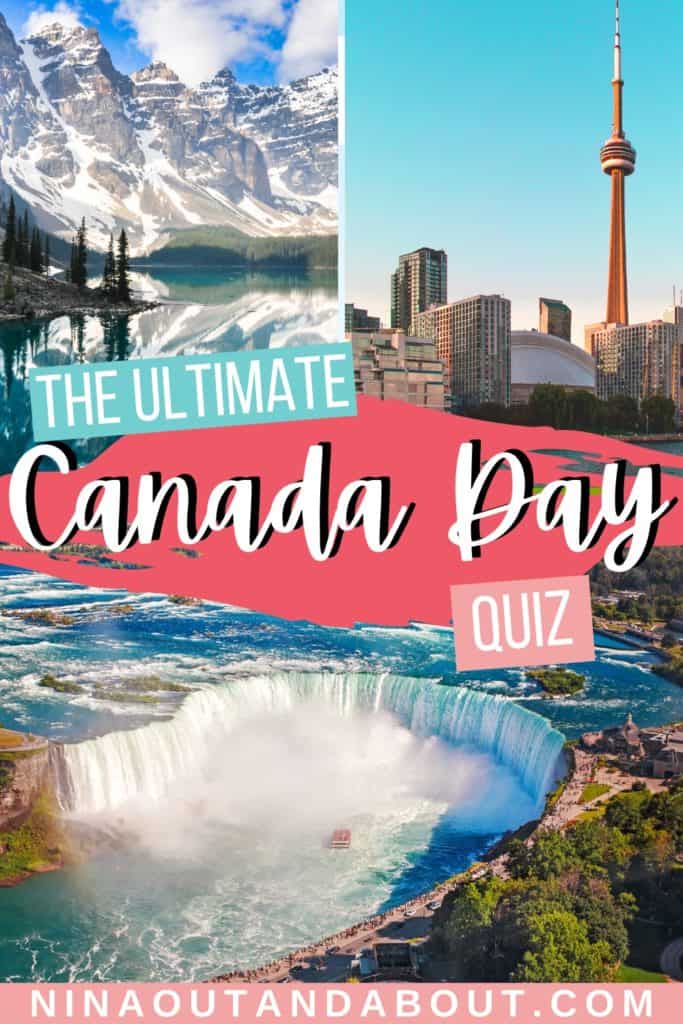
11 Best Places To Visit In Canada In January

1. Niagara Falls
One of the best places to visit is Niagara Falls in January . The scene is breathtaking and completely different than what you’d find in the summer!
Niagara Falls and American Falls both freeze over in the winter, and you can also experience the Winter Lights Festival at the Falls. There are even nighttime helicopter tours that allow you to see the light show from above!
While you should try to see the falls from both sides, the view from the Canadian side is what makes it one of the best places to visit in Canada during winter.
❄️ I love this Niagara Falls winter tour as it gives you a unique perspective of the Falls without all the usual tourist crowds!
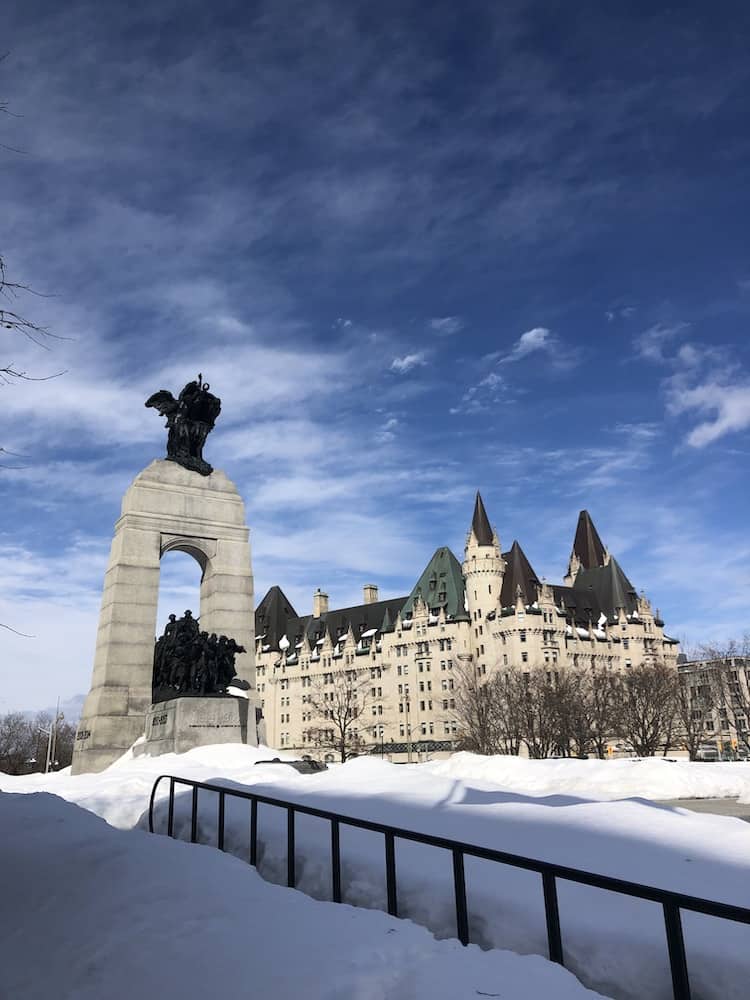
2. Ottawa In January
If you want a more unique winter experience, consider visiting Canada’s capital , Ottawa.
Although Ottawa’s winter temperatures can reach as low as -21ºC (-5ºF), the extra snowy landscapes offer the perfect conditions for snowshoeing, cross-country skiing, and ice skating!
The highlight of the season is undoubtedly the world-renowned Rideau Canal. The UNESCO World Heritage Site morphs into the world’s largest naturally frozen skating rink, spanning a whopping 7.8 km.
This natural skating rink is a magnet for locals and tourists, drawing nearly a million visitors annually. It’s one of the best Canada attractions in winter!
You can skate day or night, seven days a week, at no extra cost. So, lace up your skates and glide along the Rideau Canal Skateway, a true Canadian winter experience and a must-do when visiting Canada in January.
🐶 For even more winter fun in Ottawa, try this dog sledding tour – I love that the tours include a meal and hot chocolate to keep you warm!

3. Toronto In January
January in Toronto is one of the best times to visit the city. Toronto is usually expensive, but it’s much cheaper in the winter (off-peak season). This includes more affordable hotel rooms, discounted tours, and fewer waits at the city’s popular attractions.
Toronto is a great place to shop and take advantage of the post-holiday sales, too. Check out the PATH , Toronto’s underground walkway that hosts 30km of shops, cafes, and restaurants.
You’ll also find loads of world-class museums, theaters, art galleries, and entertainment complexes where you can escape the cold. Some of my favorite indoor activities in Toronto are The Royal Ontario Museum, The Art Gallery of Ontario, and Ripley’s Aquarium Of Canada.
🏫 If you need to warm up after wandering through the city in the snow, I recommend booking a hotel with a private hot tub !

4. Vancouver In January
Compared to other parts of Canada, Vancouver in British Columbia experiences a milder climate, so it’s less cold and snowy than other spots on the list!
With fewer tourists in January, you can fully appreciate the city’s attractions without the usual crowds.
If you can only visit one spot in Vancouver in January, make it the Capilano Suspension Bridge. Here, the Canyon Lights show illuminates the surrounding forest and makes for an epic Instagram photo.

5. Montreal In January
Montreal is Quebec’s largest city and home to a few of the best things to do in winter in Canada.
It’s actually one of the coldest cities in all of North America at this time, but surprisingly, most of the best things to do in January are outdoors.
One of the top things to do is spend a day at Cap-Saint-Jacques Nature Park , a large park just outside Montreal. There are a bunch of winter experiences at the park, like snow sports, sledding, and romantic carriage rides.
Also, the historic Old Town of Montreal is well worth exploring for an afternoon! It’s a charming neighborhood and looks even better in the snow. Trust me, it’s worth braving the cold!
6. Quebec City In January
If you’re heading to Canada in January, you will want to experience the heart of Eastern Canada, Quebec City.
Quebec weather in January is very snowy, making Old Town look like something straight out of a fairytale. The holiday lights are usually still up in January, adding to the city’s cozy winter vibe.
If you’re somewhat of an adventure enthusiast, you’ve got to check out Village Vacances Valcartier . They’ve got all sorts of exciting activities like dog sledding , tubing, and snowmobiling.
You can even turn your stay into an icy adventure by staying at the famous Hôtel de Glace , the coolest (literally!) ice hotel around.
Just outside the city, you’ll find the breathtaking Montmorency Falls. It’s well worth visiting by itself, but many people come in winter to watch daredevils climb up the frozen falls!
7. Banff In January
If you love the snow, then Banff in January is a dream! The region typically receives 8-12 cm (~3-5 inches) of fresh snow per week, transforming the landscape into a pristine, snow-blanketed paradise.
It’s one of the best places in Canada for winter sports, especially skiing and snowboarding, but you can find ice skating and snowshoeing opportunities, too.
You can even snowshoe across Lake Louise in January! The lake is frozen solid during this month. It’s also the site of the spectacular Ice Magic Festival , where renowned ice carvers from around the globe gather to craft intricate and stunning ice sculptures.
The sculptures are always super impressive and worth the trip from Banff to Lake Louise.
Once the cold becomes too much to bear, you can take a break and warm up with a hot chocolate at the beautiful Fairmont Château .
Towards the end of January, Banff also hosts SnowDays, a 12-day celebration of winter, where ice carvers create and display some cool works of art on Bear Street.
⛷️ For the most epic winter adventure, I recommend this 6-day Canadian Rockies tour, which includes stops in Banff National Park, Jasper National Park, and Lake Louise!
8. Whistler In January
January is a fantastic time to check out Whistler, one of the top ski resorts in Canada.
The snow is typically excellent around this time, so by mid-January, both mountains are fully open for skiing, along with all alpine lifts and backcountry access gates.
It’s not just for skiers or snowboarders, though. Whistler offers plenty of activities for non-skiers.
Take your pick from snowmobiling, dog sledding, tubing, or simply enjoy the winter scenery from the lodge with a cup of hot cocoa.
9. Winnipeg In January
Winnipeg is pretty awesome in January, especially if you’re into ice fishing.
Imagine chilling on Lake Winnipeg, ice fishing at one of the world’s largest freshwater lakes . You can catch perch, walleye, or even northern pike here!
The best part is that you can rent a hut so you won’t freeze!
Another super popular winter activity in Winnipeg is skating on the Nestaweya River Trail. It’s one of the longest naturally frozen trails and a great way to spend a sunny afternoon in Manitoba’s capital city! just perfect for some fun on the ice. Picture yourself gliding along while taking in all the gorgeous winter views.
10. Calgary In January
Have you considered visiting Calgary in January?
The weather in Calgary can be a bit of a mystery, as temperatures can swing from a frosty -30 degrees Celsius (-22 °F) to a more comfortable 10 degrees Celsius (50 °F). This variance in temperature is due to Chinooks , where warm ocean air comes over the mountains and can turn a snowy week into an Indian Summer overnight!
The best way to spend a day in Calgary is at the WinSport Canada Olympic Park , a world-class ski facility used in the 1988 Winter Olympics.
You can try your hand at a run down the bobsleigh track or get tickets for the 10-lane tube park (the largest in Western Canada). If that’s not exciting enough, some people even race down the giant luge track!
11. Halifax In January
If you find yourself in Canada in January, a stop-off in Halifax, Nova Scotia, can be an excellent addition to your itinerary.
Downtown Dartmouth, a vibrant neighborhood in Halifax, hosts the annual Ice Festival in January, where you can stroll through the streets enjoying live music, shopping, and admiring the beautiful ice sculptures and winter lights.
Halifax in January is also a culinary adventure. Everyone should try a bowl of the province’s best seafood chowder, but if you love seafood, you can complete the whole Nova Scotia Chowder Trail!
On this gastronomic trail, visitors collect stamps from participating restaurants to fill out a Chowder Trail passport , a fun souvenir to remember your adventure in Halifax !
Holidays And Festivals In Canada In January
There are some epic winter holidays, events, and festivals in Canada in the winter. Here are a few of my favorites that take place in January.
The Ice Wine Festival
Given Canada’s frigid temperatures, it’s no surprise that the country produces some of the best ice wine in the world.
The Ice Wine Festival is held every January in Niagara and celebrates this unique Canadian delicacy. Sample vintages from local wineries as you explore Canada’s winter wine country.
Igloofest Music Festival
Igloofest is a world-renowned event and is the coldest outdoor electronic music festival on the planet! It takes place in Montreal, bringing thousands of winter enthusiasts and electronic music fans together for an unforgettable show.
Montreal Snow Festival
The Montreal Snow Festival and Winter Carnival is an annual celebration of winter and snow.
As expected, the activities are all about snow and ice, from ice sculpting to ice skating and a giant snow slide. But there is also plenty of music, shopping, and entertainment for those looking to take a break from the freezing temperatures!

Winter Activities In Canada
From winter sports such as skiing and snowboarding to snowshoeing and ice fishing, there are tons of fun things to do in winter outdoors in Canada! Here are some of my favorites.
Ice skating is arguably the most popular winter activity in Canada. Many cities and towns have a public outdoor rink with skate rentals available!
Cross-country skiing is a great way to see Canada’s stunning backcountry, but it’s certainly a test of endurance. If you’ve never tried cross-country skiing, there’s no better place in the world!
Skiing and snowboarding are two major reasons people travel to Canada in winter . The Canadian Rocky Mountains offer some of the best skiing and snowboarding in the world. Many resorts also provide other activities, including tubing, snowmobiling, and dog sledding.
Dog sledding is an iconic Canadian activity that people enjoy throughout winter. It’s a great way to explore Canada’s frozen tundras and a unique experience for travelers!
Ice fishing is another popular winter activity in Canada, especially in some of the more rural areas. No matter which province you visit, a nearby lake/river is undoubtedly great for ice fishing.
Viewing the Northern Lights is only possible during winter in Canada. The natural light show of Aurora Borealis happens in many provinces, but Nunavut and Alberta are two of the best places to spot them.
⛷️ If you plan on doing any winter sports in Canada, then you’ll need insurance! I recommend World Nomads
How To Get Around Canada In January
The best way to get around Canada in January is by car .
Renting a car provides the freedom to explore destinations off the beaten path without worrying about weather conditions disrupting public transport schedules. However, in the winter weather, it’s important to come fully prepared for shorter driving days, road closures, and the chance of blizzards and high winds.
Challenges Of Traveling To Canada In January
Canada in January is cold, and the roads can sometimes be icy and dangerous. Therefore, it’s essential to check the weather and take extreme caution if driving after heavy snow.
It is also worth noting that many provincial and territorial parks will have limited access to visitors. Not all roads are open throughout the winter, and some roadside facilities, like visitor centers and rest stops, may be closed for the winter.
There is also a higher chance of flight delays or cancellations, so it’s always good to have a backup plan (or two!) when traveling around Canada in January.
What To Pack For Visiting Canada In January
Canada’s January weather is extreme, so you need to come prepared with winter clothes !
January is usually the coldest month of the year in Canada, so it’s important to be sure you bring along plenty of layers.
Pack a warm coat, gloves, and a hat (ideally one that covers your ears)! It’s also worth packing some waterproof boots and snow pants if you plan on doing any winter activities.
I also recommend getting some Hot Hands to put in your gloves or even tuck inside your boots to keep your feet toasty!
Is January a good time to go to Canada?
Yes, January is a great time to visit Canada! Despite the cold weather, there are plenty of winter activities and festivals that make this month a great time to enjoy the country. Plus, you’ll find fewer crowds at famous attractions in winter!
How cold is it in Canada in January?
The temperatures in Canada vary depending on location and altitude, but generally, the average temperature range is from -15°C to 5°C (5 – 41°F). However, in some areas of the country, it can drop as low as -27°C (-16°F).
Is Toronto worth visiting in January?
Yes, Toronto is worth visiting in January! Although the temperatures can be pretty low, there are plenty of exciting winter events and activities to check out.
When can you see the northern lights in Canada?
The northern lights are most visible from October to April. The best place to see them is the Northwest Territories, where they’re generally visible 240 nights a year.
Is it snowing in Canada in January?
Yes, it’s very likely to snow in Canada during January. This is true for every province in Canada, but some cities will experience significantly more snowfall than others.
When does it snow in Canada Toronto?
In Toronto, snow usually falls from mid-November until the end of March. The most snowfall occurs during January and February.
Canada in January is truly a winter wonderland.
Of course, it can get unbearably cold at times, and getting around is more of a challenge, but don’t let that stop you from visiting Canada in January because the country has some cool things to offer, whether you’re in Ottawa, Toronto, Vancouver, or Banff!
You’ll have an amazing time here as long as you’ve got the right gear and a taste for adventure.
Bundle up and witness jaw-dropping landscapes and more winter activities than you can shake a hockey stick at!
For more information and inspiration for spending winter in Canada, check out this guide on visiting Niagara Falls in winter and the ultimate Canada bucket list .
Read More About Canada!
- Canada Day Quiz: Are You a Real Canuck or Posing as a Hoser?
- 20 Common Misconceptions About Canada: Myths & Stereotypes
- Canada Cuisine to Try: Traditional Food Canada is Famous For
- 10 Delicious Canada Cocktail Recipes to Try
- 83 Bucket List Canada Things to Do from a Canadian
- 202 Fun Facts About Canada You’ve Never Heard
- 190 Best Canada Quotes and Captions for Instagram
- 13 Best Sunsets in Canada to See
- Spring in Canada: Best Places to Visit and Things to Do [Local Guide]
- Canada in Summer: Best Places to Visit and Things to Do [Local Guide]
- Canada in the Fall: Best Places to Visit and Things to Do [Local Guide]
- 13 Best Canada Northern Lights Tour and When to Go
- 65 Best Souvenirs From Canada to Gift
- Is Canada in America? + More Facts
- Does Canada Celebrate Halloween?
- Canadian vs American Thanksgiving: What’s the Difference?
- What is Santa called in Canada?
- Canada Name Generator: Creative Name Ideas from a Canadian!
- Canada Winter Months and Temperatures
- 65 Best Things to Do in Canada in Winter
- 27 Best Places to Visit in Canada in Winter
- What is the legal drinking age in Canada?
- Can You Drink in Canada with a US ID?
- Renting a Car in Canada: 41 Important Local Tips & Tricks
- Tipping in Canada: Do You Have to Tip in Canada?
- 100 Canadian Slang Words and Phrases (From a Canadian!)
- 10 Epic Canadian Spots to Celebrate New Year’s Eve
Canada Travel Planning Guide
🚑 Should I buy Canada travel insurance?
100% YES! — Canada has “free” healthcare but it’s only for citizens! Foreigners visiting need travel insurance in case anything happens on their visit. I recommend World Nomads – starting at just $5 a day!
💧 Can you drink the water in Canada?
Yes — In all major cities in Canada, you can drink the tap water. There are very few, rural areas that you can’t. However, you should never drink river or lake water anywhere in the country! I recommend a Brita Water Bottle for long hikes and backcountry camping to stay safe and hydrated.
🚙💨 Is it safe to rent a car in Canada?
Yes — Renting a car is a necessity in most of Canada! If you want to go on road trips or adventures outside of the major cities, you’ll need to rent a car. ( Read more )
📲 Will my phone work in Canada?
Maybe — Some American companies work in Canada, but many will not. If your phone doesn’t work in Canada, I recommend getting a Canadian SIM card so you can get around and stay in contact with loved ones. We don’t have a lot of free WIFI in Canada, so you’ll need your phone for maps.
🏩 What’s the best way to book my Canada accommodations?
My go-to for Canadian hotels is Booking.com . For hostels, I use Hostel World . If you want a home-y feeling, check out VRBO (which is cheaper and safer than Airbnb).
Or get free accommodations with Trusted Housesitters!
✈️ What’s the best site to buy Canada flights?
For finding cheap Canadian flights, I recommend Skyscanner .
🎫 Do I need a visa for Canada?
Likely Not — US, UK, and EU passport holders don’t need Canadian visas. However, some other countries do ( check here! ). And if you plan to stay for more than 4 weeks (an average tourist visa length), you will need to look into visas to live in Canada.
Nina Clapperton is the founder of Nina Out and About. She has lived in 18 countries in the past 10 years, explored more than 30 countries, and has done most of it solo. A Canadian native, she also shares her favourite things to do in the True North. She helps over 100,000 people per month plan their expat adventures and Canadian trips.
Want to move abroad, but don’t know how to start?
Get an expert’s tips & tricks, pick which country to move to – and do it.
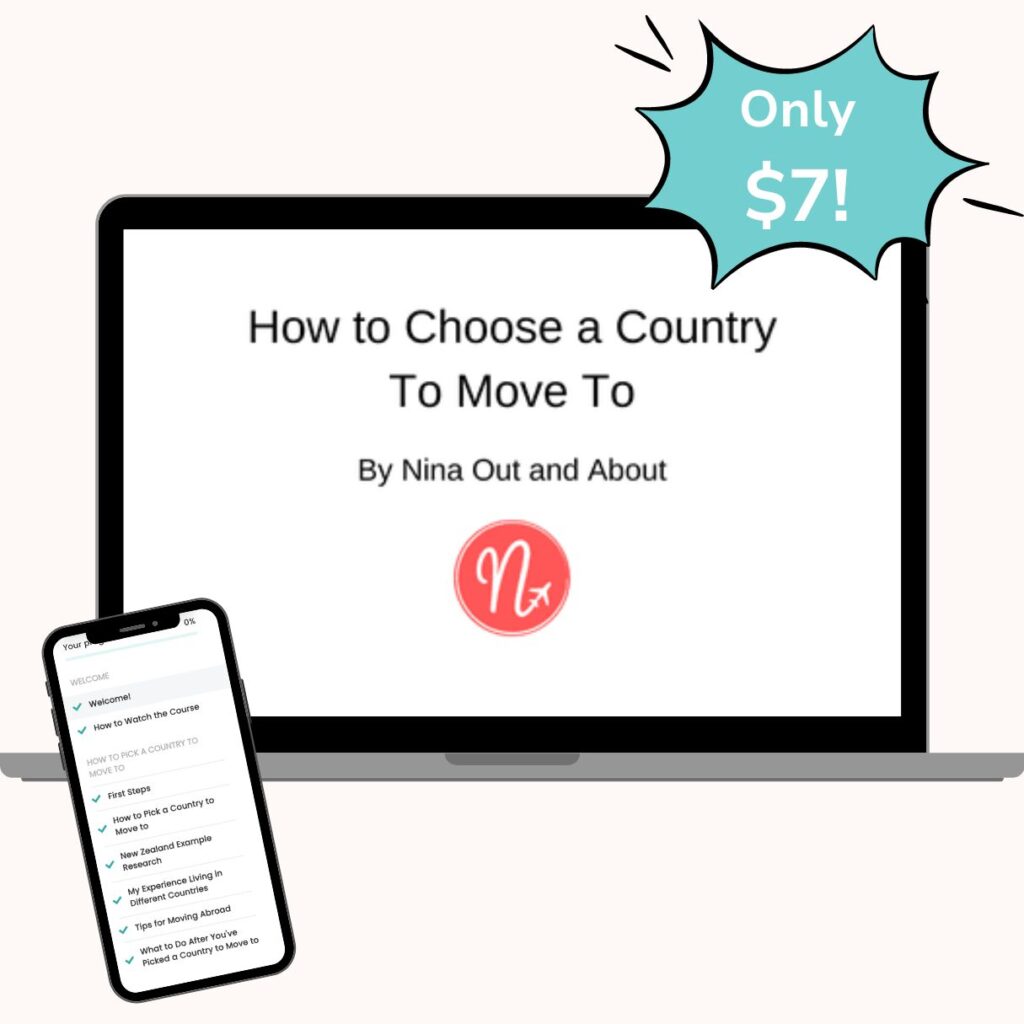

The Complete Guide to Travelling Canada in Winter
Travelling Canada in winter is beautiful and exceptionally rewarding. Few people take up the opportunity, leaving the winter wonderland of Canada untouched and uncrowded. Winter travel in Canada doesn’t come without challenges, however.
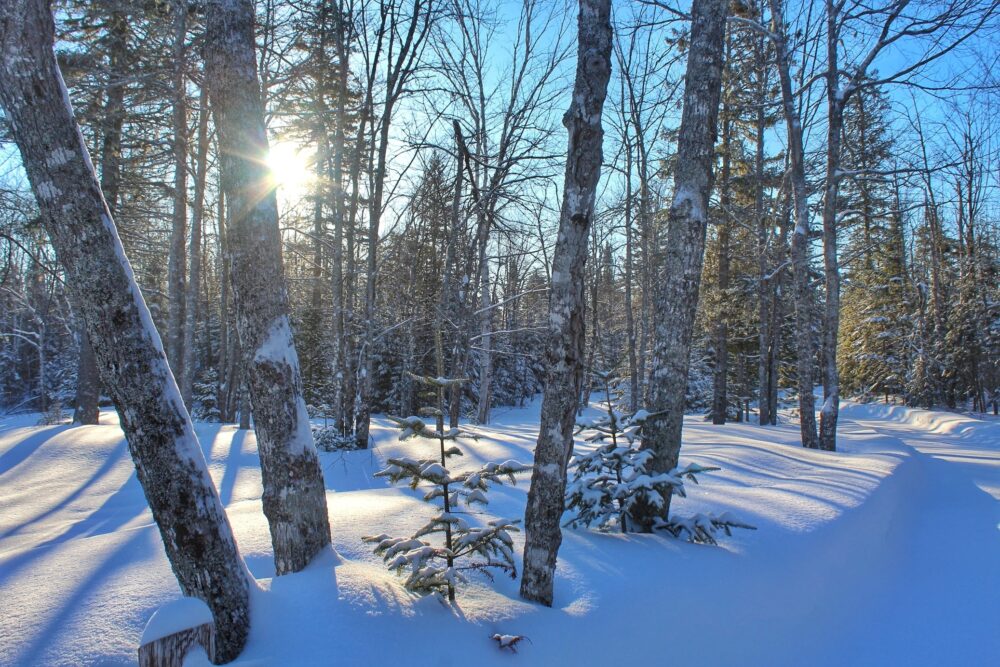
9+ winters in Canada have taught me a trick or two to avoid the main difficulties and this guide will help you enjoy the best this season has to offer as well.
Here’s what to expect:
Why visit Canada in winter?
- The best places to visit
- The best things to do
- Travel practicalities
- What to wear
- Winter driving
I’ll start with sharing some of many reasons why you should consider a winter getaway in the Great White North!
This post includes affiliate links. If you make a qualifying purchase through one of these links, I receive a small percentage at no extra cost to you. Thanks for supporting our site.
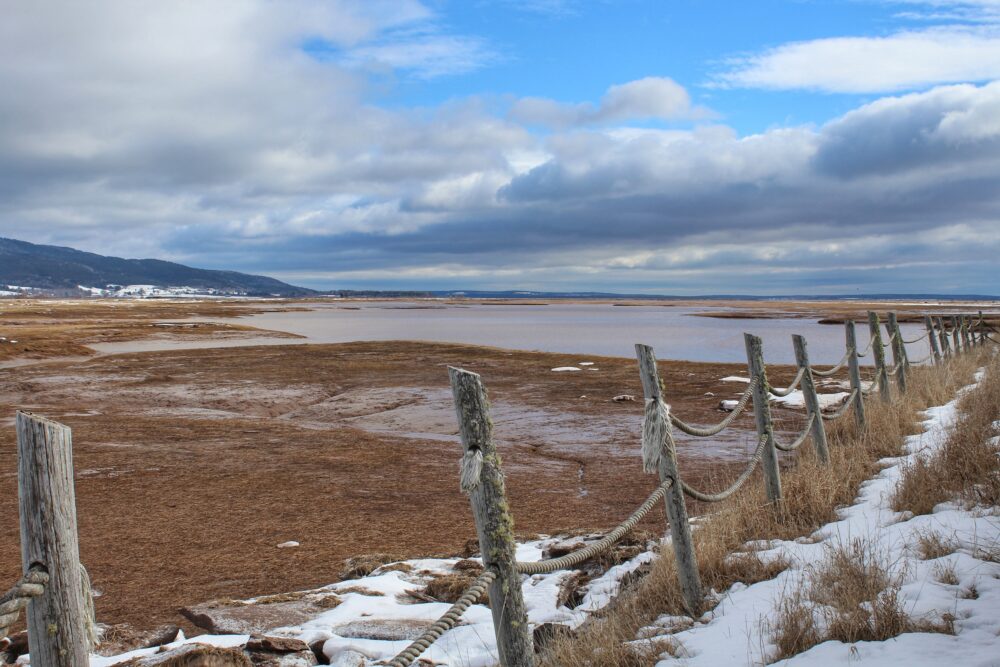
While world-renowned for its natural beauty, Canada doesn’t often feature highly on the top of winter destination lists. I think it should and here are just a few reasons why:
Outdoor activities
When most people think of visiting Canada in winter, it is likely that skiing and snowboarding is a consideration. There’s a good reason for this too, with some of the best powder in the world to be found in Canada, at ski resorts and also in the expansive backcountry.
But there’s much more to Canada in winter than just the skiing – consider ice fishing, skidooing (snowmobiling), snowshoeing, snow tubing, cross-country skiing, skating and more.
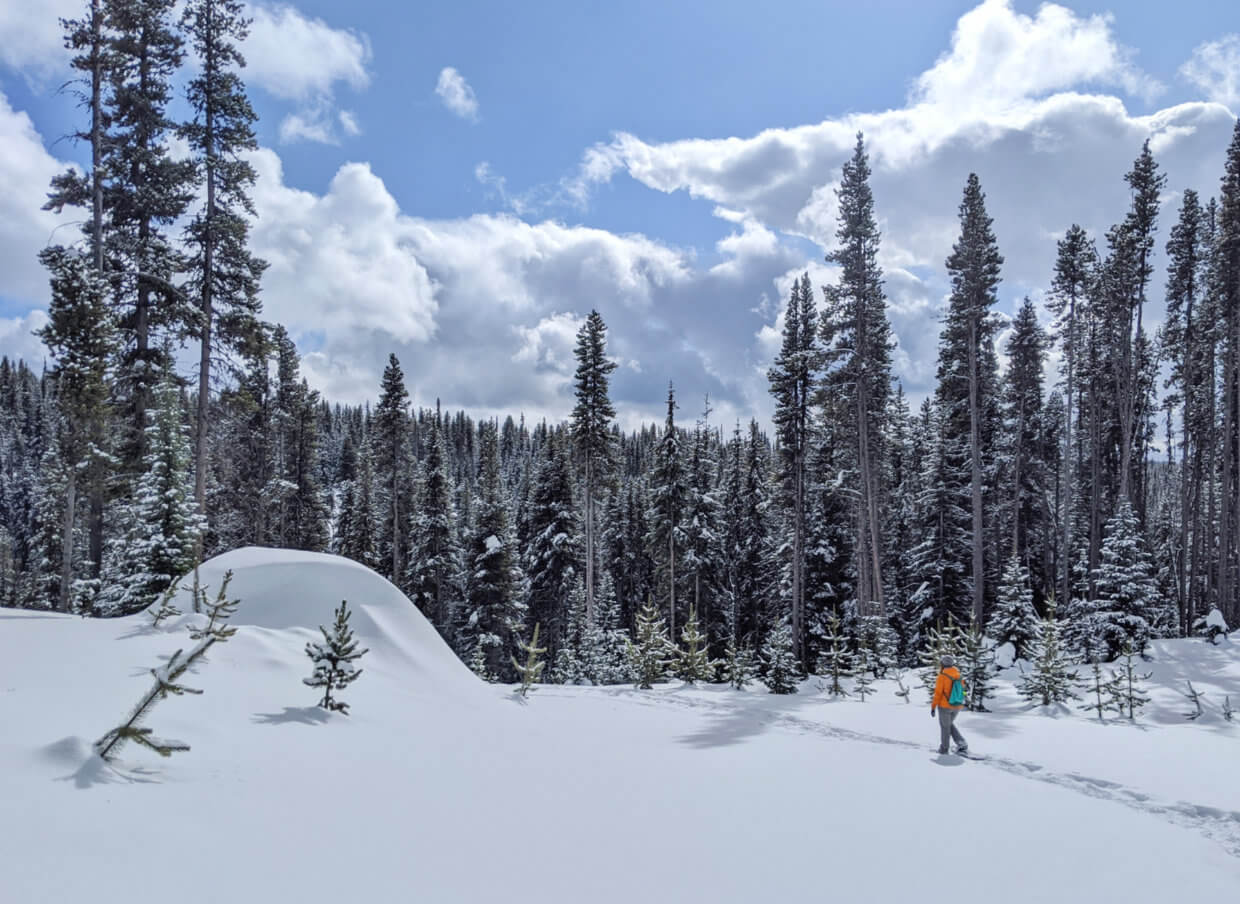
Festivals and events
Canadians know how to make the most of winter. Across the country, the winter schedule is full of festivals and events to celebrate the chill.
In comparison to those held in summer, winter festivals in Canada tend to be more on the imaginative side, highlighting some of the more unusual aspects to the season.
Not just for locals, the biggest winter festivals attract thousands of people from around the country and further afield.
The beauty of a Canadian winter
Walking in a winter wonderland is simply magical. The crisp powder underfoot, blanketed trees, frozen lakes, drifting snow, trickling icicles, the white silence.
Imagine a log cabin in the centre of it all with a wood burning fireplace, chimney puffing away above. It’s a picture-perfect scene most often seen on Christmas cards.
It is also a reality you can experience while visiting Canada in winter.
Read Next: How To Start Hiking in the Winter (Without Freezing!)
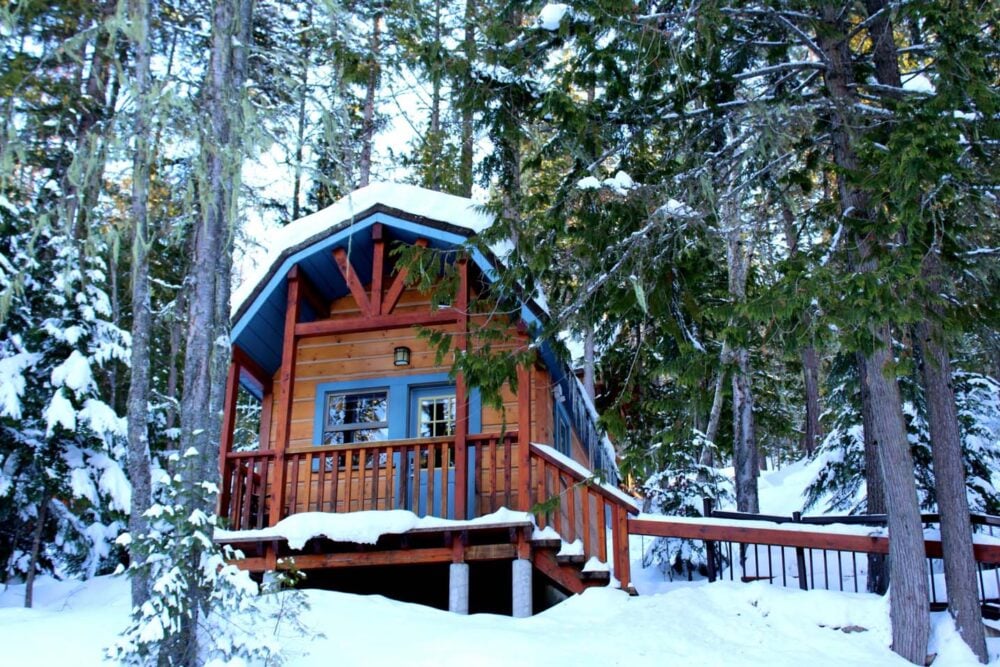
Cheaper accommodation and flights
There’s no question about it, travelling Canada in winter is usually cheaper than in summer. The main reason for this is the drop in accommodation and flight prices.
Responding to the lower demand, Canadian hotel prices in winter can be extremely cheap. This is particularly evident in the city of Niagara Falls. When we visited in December, we paid $69/night for a room that would typically have a nightly fee of $350 or more in the summer.
Wildlife watching
As the cold temperatures approach, many animals in Canada head south or go into hibernation. Some other animals, however, do the exact opposite and become more active in the winter.
Those visiting Canada in winter have the chance to see animals that are otherwise difficult to see during the rest of the year. The iconic moose does not hibernate, nor the caribou, bison, mountain goats or majestic lynx.
The Aurora Borealis – Northern Lights
Canada is one of the best places in the world to see the Aurora Borealis, more commonly known as the Northern Lights. The long, dark nights provide ideal conditions to see this amazing phenomenon.
Yellowknife (NWT) and Whitehorse (Yukon) are both in the ‘auroral zone’ and hence are popular winter destinations in Canada to see the lights. It is also possible to see them further south too, you just have to time it right!
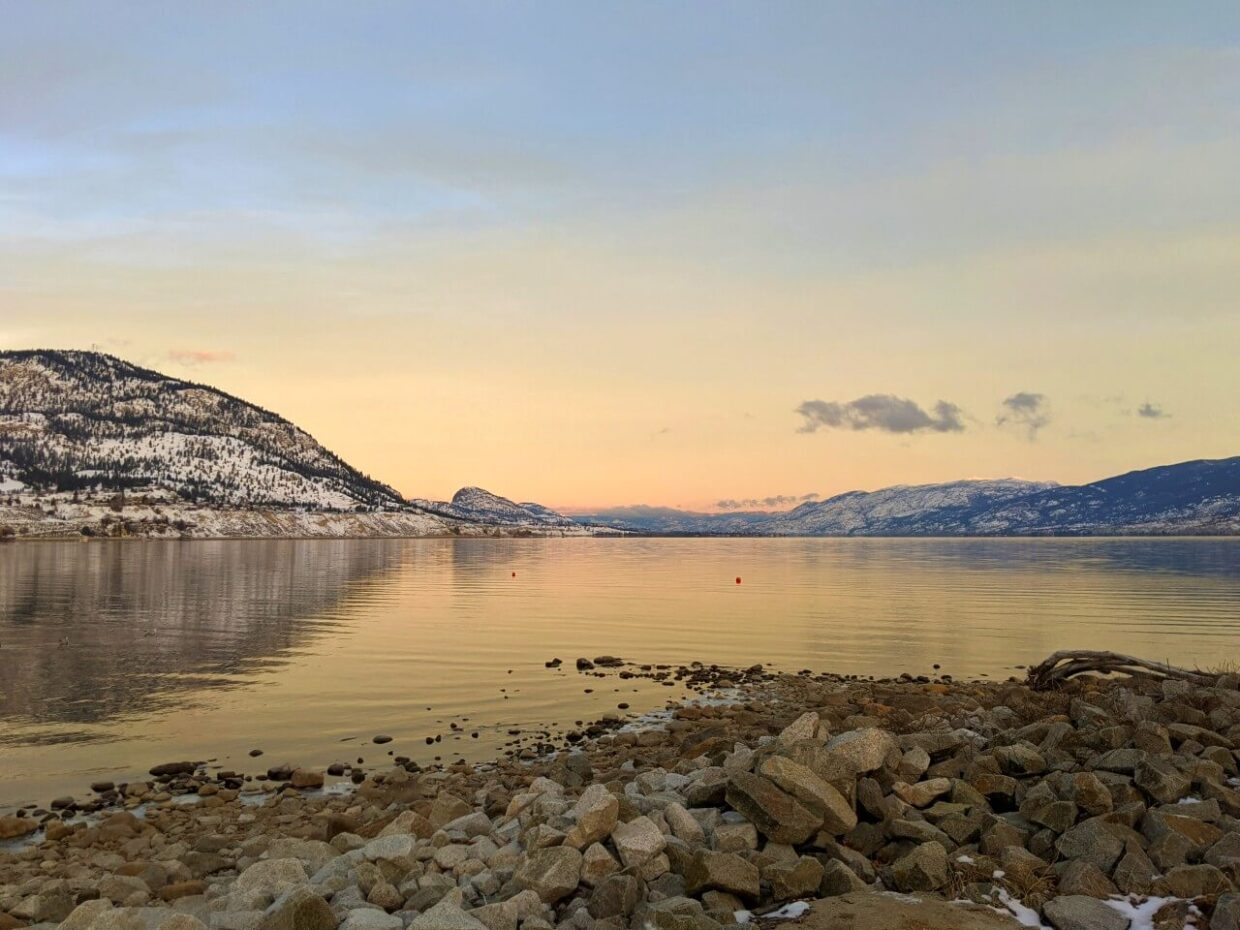
Lack of crowds
The busiest visitor season in Canada is, by far, summer. Parking lots are full, roads are busy, popular restaurants have a queue out the door and the most famous lakes in the Canadian Rockies are lined by bus tours.
Visiting Canada in winter is much quieter, offering a great opportunity to see the sights without the crowds. To use Niagara Falls as an example again, it was much more peaceful and relaxing to visit in December.
Bragging rights
Canadian winters are legendary the world over. Braving the elements and visiting Canada in winter is a unique experience that few travellers can claim to have.
Not only does it offer incredible opportunities to see popular destinations in a more unusual way, but winter travel in Canada always has some great stories to go along with it!
I’ll never forget the first time I felt my hair freeze or that epic sunset with -40c temperatures in northern British Columbia.
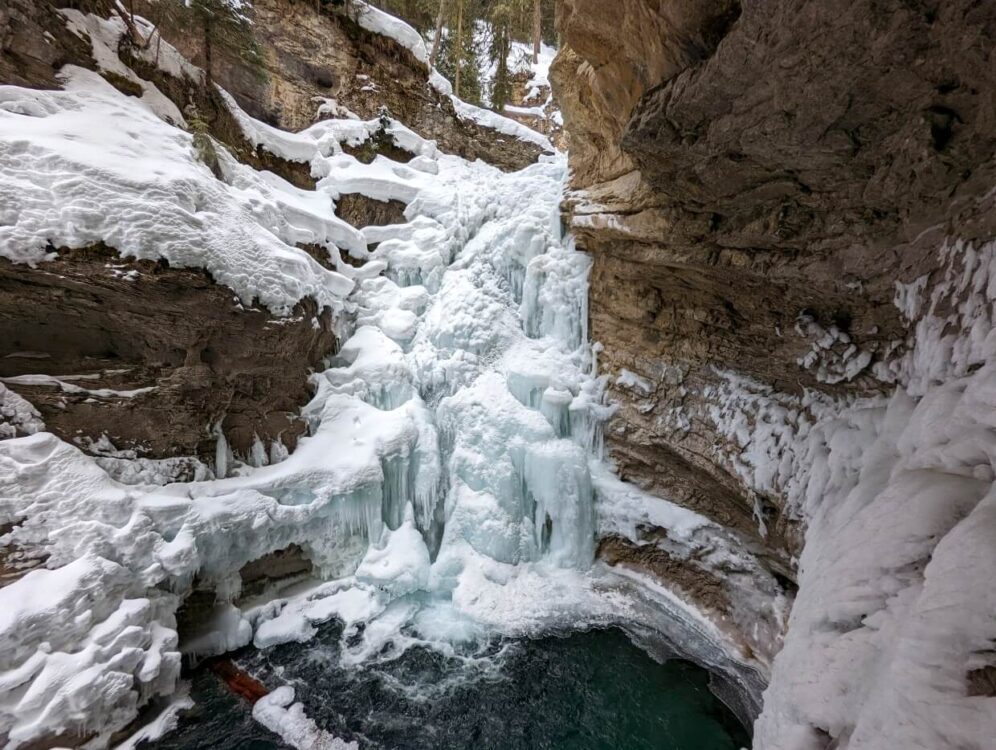
The Best Places to Visit in Canada in Winter
Winter wonderland experiences await all over Canada; it is hard to go wrong in this beautiful country.
After so many winters here, however, I do have some favourite spots for winter getaways in Canada. Here are my picks for the best places to visit in Canada in winter.
- The ultimate Canadian winter experience for many is a trip to a ski resort . Those looking for the quintessential full-service ski village experience should head to Whistler, Sun Peaks, Big White , Mont Tremblant or Blue Mountain. The picture-perfect mountain town of Banff in Alberta offers a choice of three large ski resorts nearby. Adventurous skiers should consider Revelstoke, Kicking Horse or a trip to a backcountry lodge
- Sitting in a natural hot spring surrounded by forest with snow falling from above is one of the most wonderful winter experiences in Canada. Commonly found in the mountain ranges of British Columbia and Alberta, there are also hot springs in Yukon Territory, Vancouver Island and, somewhat surprisingly, Saskatchewan. My favourites are Radium Hot Springs , Liard River Hot Springs and Hot Springs Cove
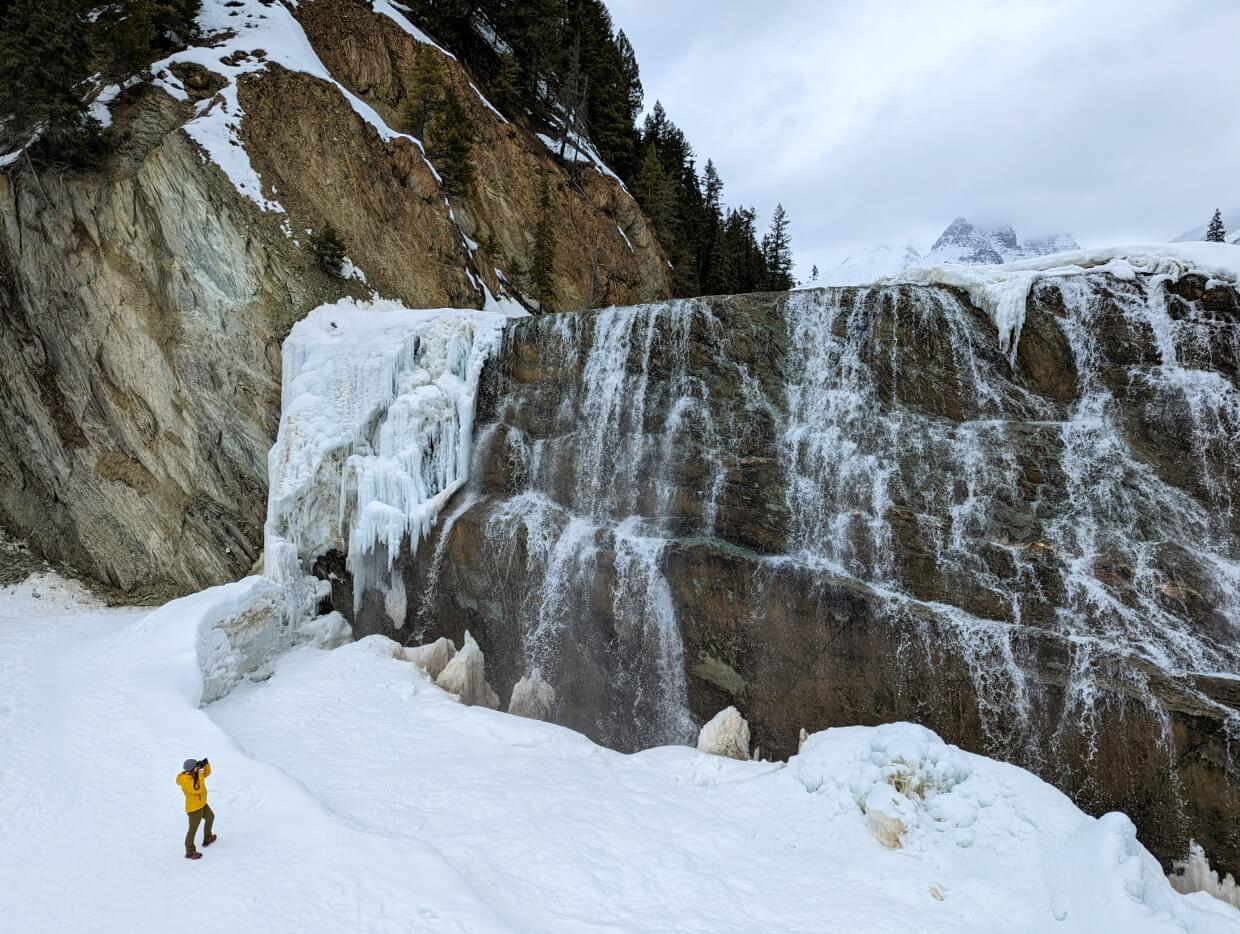
- Niagara Falls is one of Canada’s most popular attractions and it is just as beautiful in winter. In fact, some would argue that it is even more majestic with snowy surroundings. Viewing Niagara Falls is definitely a much quieter experience in winter, with it being possible to have entire viewpoints all to yourself at times
- The major cities (Vancouver, Calgary, Edmonton, Toronto, Montreal and Halifax) are ideal places to visit in Canada in winter. Each has a plethora of museums and other interesting indoor attractions to explore. Winter festivals and events are plentiful, with some examples being Quebec’s Winter Carnival and Winterlude in Ottawa
- British Columbia’s West Coast offers a great alternative to the snow elsewhere. Head to Port Renfrew, Tofino or Haida Gwaii for a winter getaway in Canada like no other. Breathe in the Pacific Ocean air and experience the full force of the winter storms battering the coast. If storm watching from an oceanside cabin isn’t quite exciting enough for you, have a go at surfing
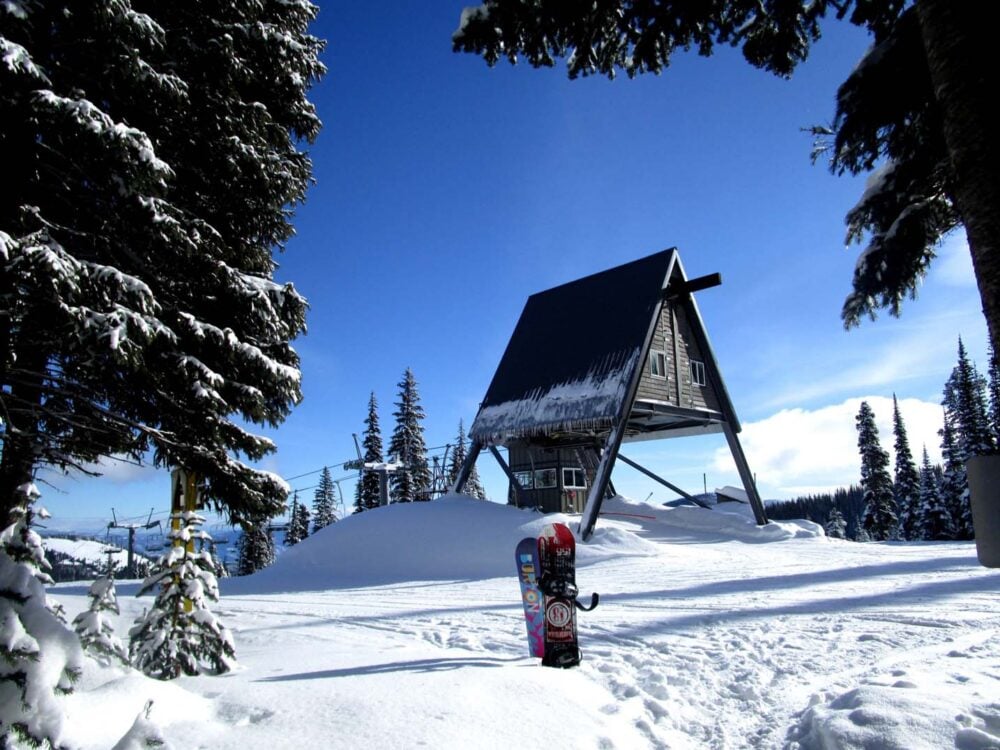
The best things to do in Canada in Winter
In addition to the specific attractions and locations mentioned above, there are amazing experiences to be had all over Canada in winter.
Some examples of interesting and exciting things to do in Canada in winter include:
- Glide through the snowy forest on a skating loop such as the one at Apex Ski Resort in British Columbia
- Try the European spa experience at Thermea in Winnipeg or Nordik Spa near Ottawa
- Watch can-can dancing and chainsaw competitions at the Sourdough Rendezvous Festival in Whitehorse, Yukon Territory
- Skate on the world’s largest naturally frozen skating rink , the Rideau Canal in Ottawa
- Discover frozen waterfalls in Johnston Canyon, Banff National Park, Alberta
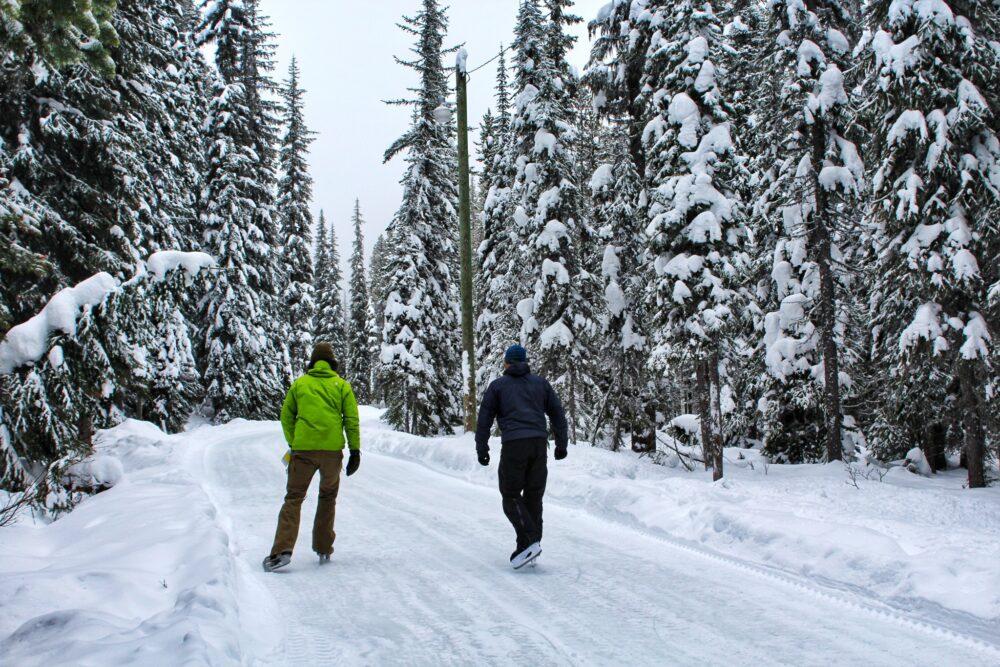
- Explore almost 1,000 kilometres of snowmobile trails including the tip-to-tip Confederation Trail on Prince Edward Island
- Try out the fastest ice track in the world at the Whistler Sliding Centre in British Columbia
- Sleep in North America’s only ice hotel at the Hôtel de Glace in Quebec City
- Snowshoe the Skyline Trail on Cape Breton Island, Nova Scotia
- See the frozen ocean in the Bay of Chaleur, New Brunswick (it is an incredible, almost unbelievable sight!)
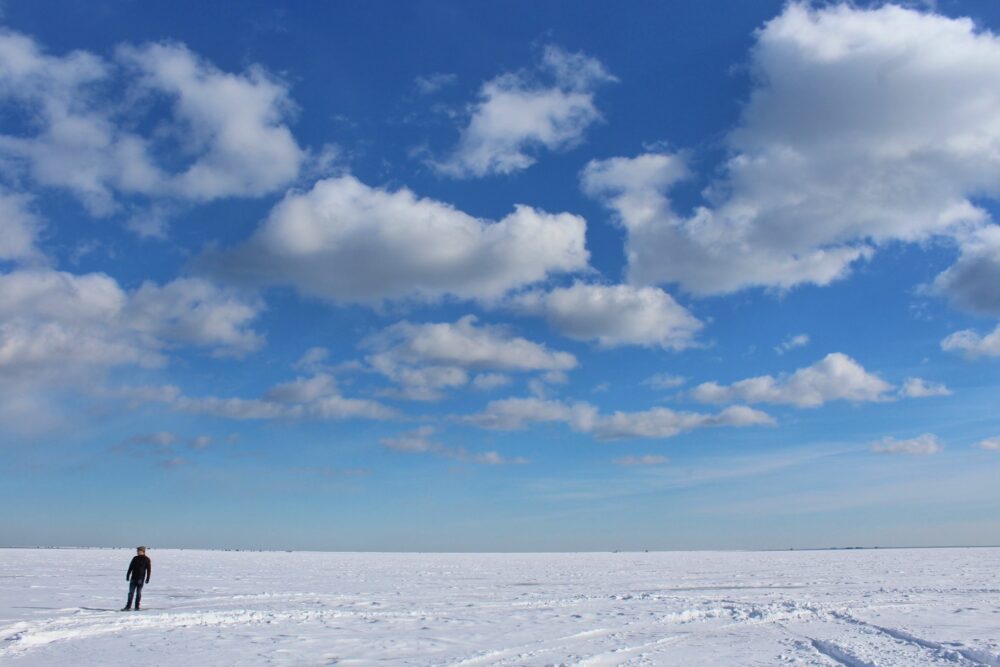
Travelling Canada in Winter: Practicalities
Travelling Canada in winter does not come without a few challenges. It is important to be aware of the following before setting out on any winter trip to Canada.
- Winter hours for tourist attractions and services are usually more limited in winter. Some places completely shut down after the summer and remain so until late spring. Always check opening times first before heading out.
- Have a reasonably flexible itinerary that allows for delays. With inclement weather in mind, things may not always run to plan while travelling Canada in winter. Purchase travel insurance (with cancellation coverage) before leaving – we use World Nomads. Getting an online quote from their website is quick and easy.
- Take your time while travelling in Canada in winter. Things move a little slower during this quieter season for good reason. Extreme winter conditions can sometimes make travelling Canada in winter dangerous.
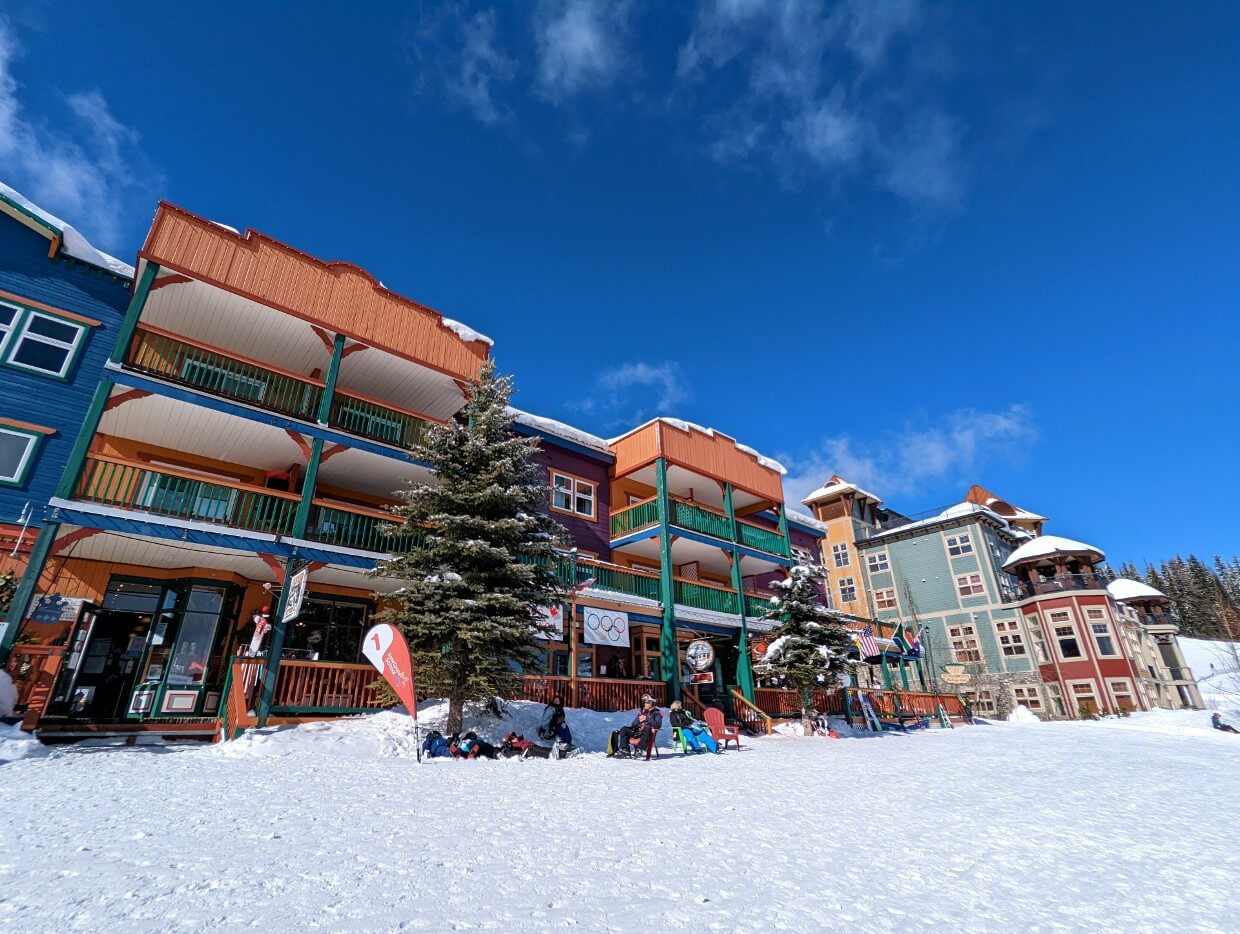
Winter Weather in Canada: what to expect
Being the world’s second-largest country, winter conditions are not the same everywhere in Canada.
When travelling in Canada in winter, be prepared for the local weather.
British Columbia: The western edge of British Columbia experiences the mildest winters anywhere in Canada. The average winter temperature in Vancouver and on Vancouver Island hovers around 5-8c. Southern BC is colder, with some snow expected December to February with more in the mountains. Winter sticks around far longer in the northern interior.
The North: Winter days in Nunavut, Yukon, Northwest Territories are short and cold. Snow is common but in smaller amounts than you may expect for such northern reaches. Blue skies and sunshine should also be anticipated.
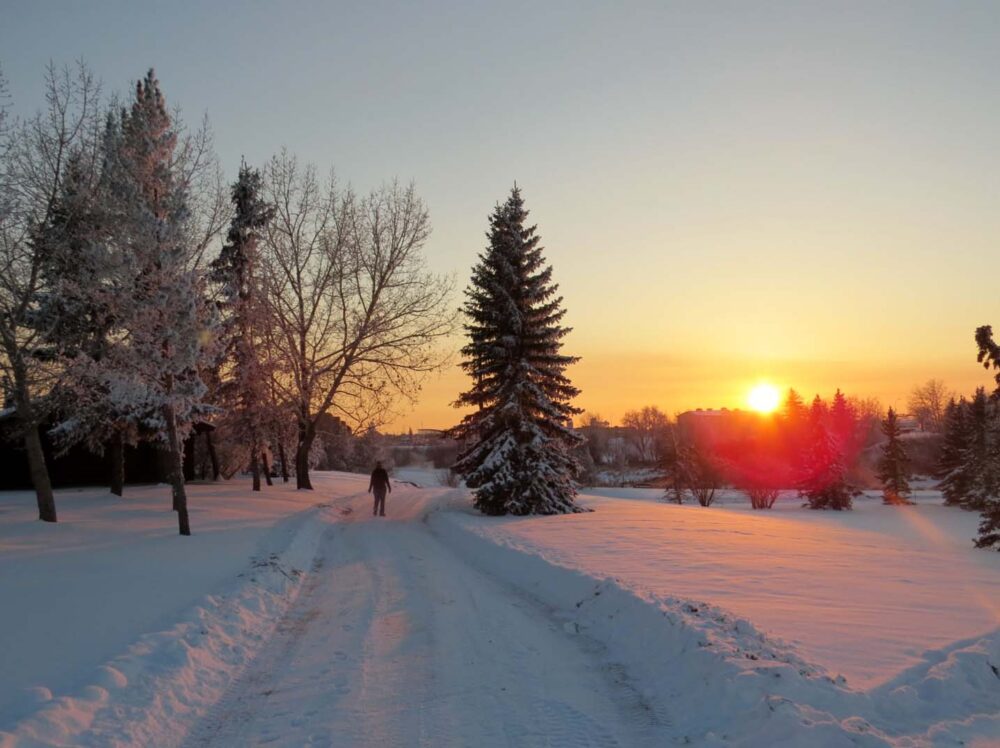
The Prairies: If you’d like to experience what -35c feels like, head for the Prairies. Temperatures in Alberta, Saskatchewan and Manitoba are blisteringly cold, especially with wind chill factored in. Winter in the Rocky Mountains are long; frozen lakes and snow in the mountains is common until June.
Central Canada: Ontario and Quebec have fierce winters, with plenty of snow and freezing weather. The average temperature in Toronto, Canada’s biggest city, hovers around 0c in January and February.
Atlantic Canada: The provinces of Atlantic Canada (New Brunswick, Nova Scotia, PEI and Newfoundland) are regularly hit by winter storms from the Atlantic, bringing heavy snowfall and plenty of minus temperatures.

What to wear while visiting Canada in winter
The key to dressing appropriately for travelling Canada in winter is to wear plenty of clothing layers.
The first reason for this is to allow for easy transitions between outdoors and indoors. You’ll also be warmer – extra insulation is created from warm air trapped between layers.
A warm jacket is essential when travelling Canada in winter. Down insulation is ideal (I use this jacket ) if you are travelling in drier regions while synthetic is better suited for environments with more snow and possible rain. Visitors heading to BC’s West Coast (Vancouver, Vancouver Island and Haida Gwaii) should prioritise bringing a waterproof jacket.
Next is some kind of mid layer. This primary purpose of this layer is to provide insulation. Mid layers for the top half of the body are most typically made of polyester fleece or wool, materials known for their insulating properties.
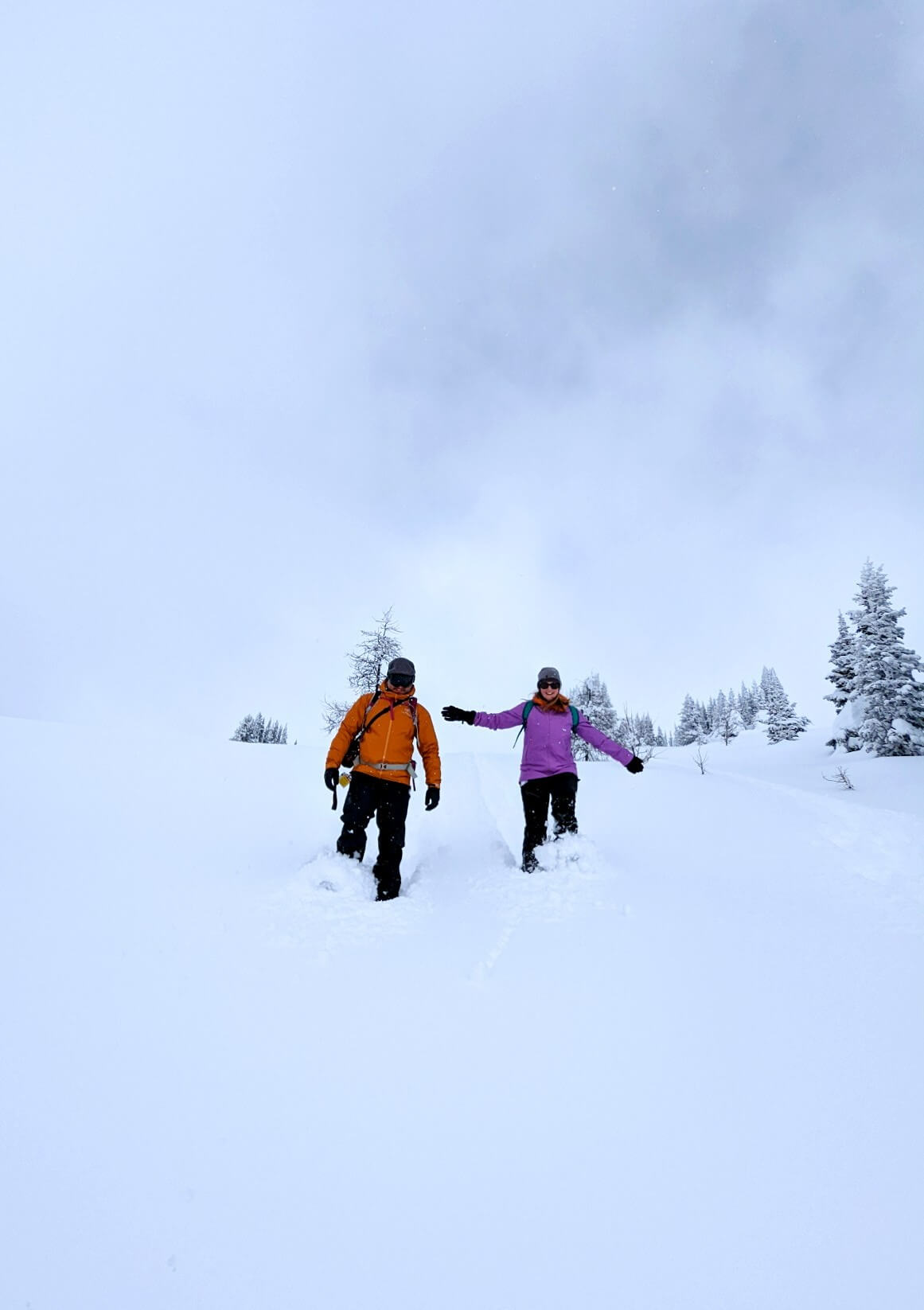
Closest to your skin is a base layer. Also known as ‘thermals,’ base layers are there to wick sweat away and keep your skin dry. Base layers are often made of polyester or wool. Personally, I prefer the latter , as wool has a better warmth/weight ratio and feels better next to the skin.
Covering the extremities of the body in winter is so important. Don’t forget a wool beanie (toque), gloves and a good pair of socks . I love I cebreaker socks for their unbeatable comfort and lifetime guarantee.
Ice grips or cleats to attach to the bottom of your shoes are always a good idea to carry for easier walking in icy areas. I like these ones by IceTrekkers.
It is easier to get sunburned in the winter than you may think – be sure to bring the sunscreen ! Sunglasses are also a good idea to avoid snow glare.
For more information about what to wear in Canada in winter, check out our dedicated clothing guide .
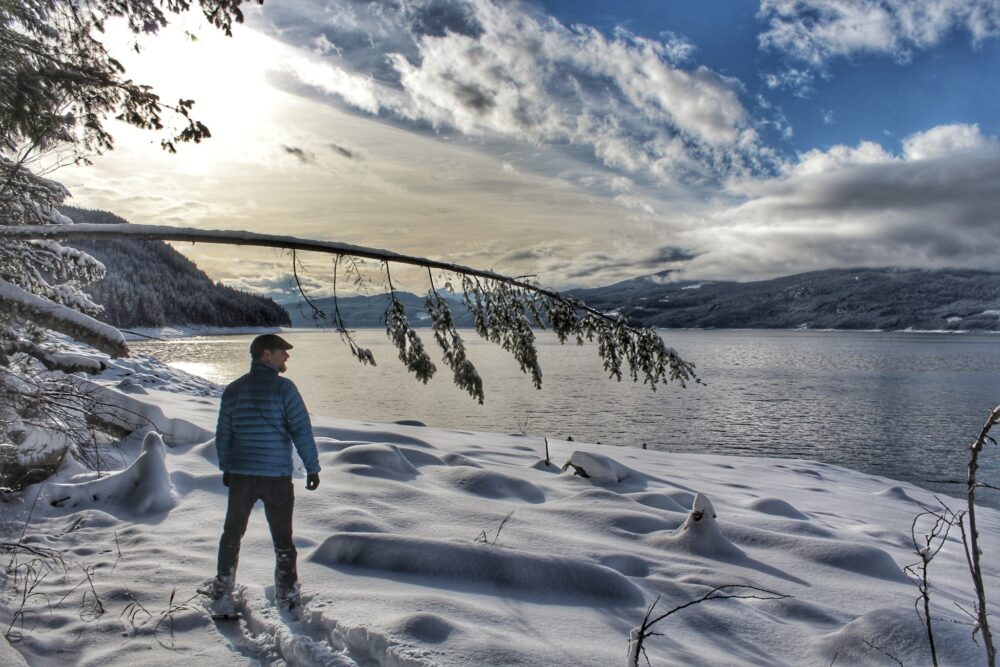
Driving in Canada in winter
With ice and snow on most roads, driving in Canada in winter should not be taken lightly. Visitors with zero winter driving experience should strongly consider the risks and potential stress of driving in Canada. It can be dangerous for the inexperienced driver as well as others on the road.
Here are some tips if you do decide to drive on a winter trip to Canada:
- Go slow. Driving in winter in Canada is a slower experience than in summer. You must be prepared for slippery roads, reduced visibility, heavy snowfall and black ice. Road closures are not uncommon. Days are shorter in winter so adjust driving times to make the most of the daylight.
- Be prepared. Roadside services in remote areas adore limited in winter. While driving across Canada in winter, we found a 200km section of Highway 1 with no cell phone signal and no open roadside facilities. Be sure to have an emergency kit with food, water, extra clothing and a first aid supplies.
- Bring appropriate equipment. In some provinces, the use of winter tires is mandatory. Tire chains are a good idea if heading into the mountains of BC and Alberta. Carry jumper cables , a shovel and tow rope. Keep an eye on windscreen washer fluid levels. Maintaining good visibility despite snow, ice, salt and grime while travelling Canada in winter is essential.
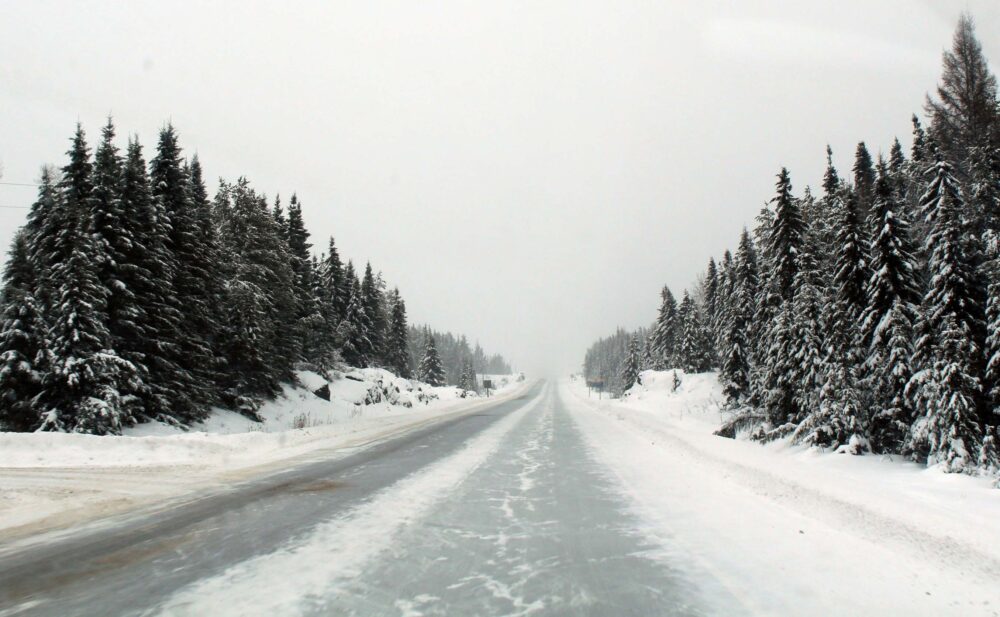
Related posts you may find helpful:
65 Cool Things to Do Across Canada in Winter
What to Wear in Canada in Winter: A Complete Guide
8 Must See Places On A Winter Road Trip Across Canada
Essential Travel Tips for a Winter Road Trip in Canada
Snowshoeing 101: A Beginner’s Guide
10 Ways to Explore Ontario’s Winter Wonderland
Like this post? PIN or save it for future reference with one of the below images!
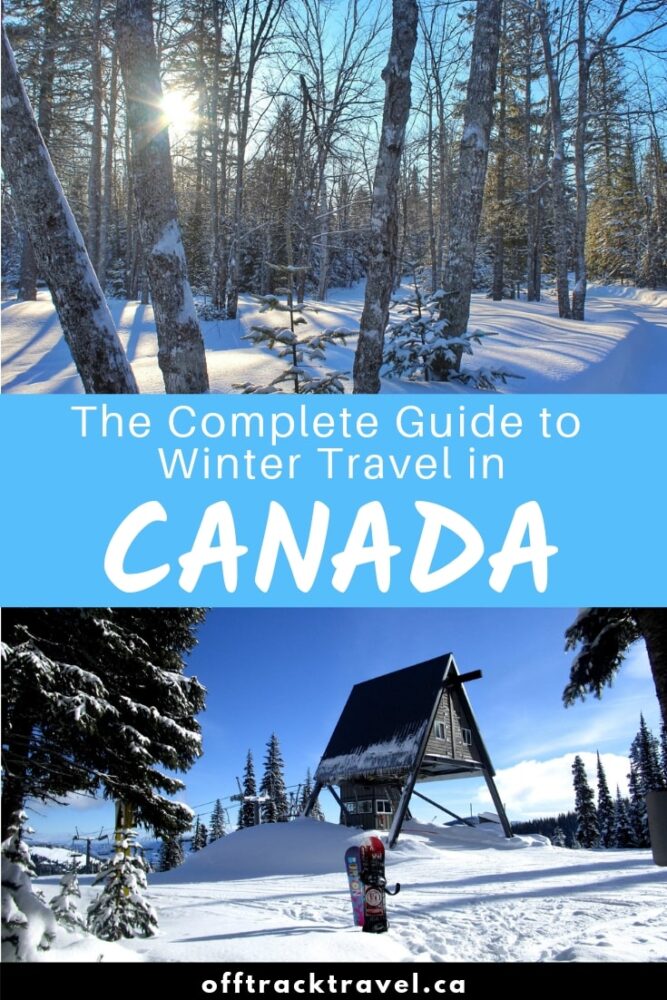
Adventure in your inbox
Subscribe to our monthly email newsletter and receive a round-up of our latest outdoor adventures plus other exciting beyond the beaten path destinations
We never share your information with third parties and will protect it in accordance with our Privacy Policy
Check out these recently published posts:
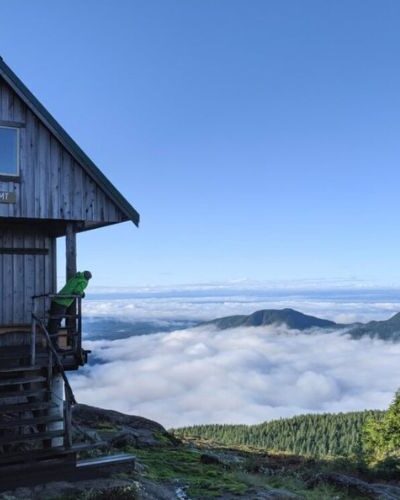
Sunshine Coast Trail Huts Guide: The Best Places to Stay
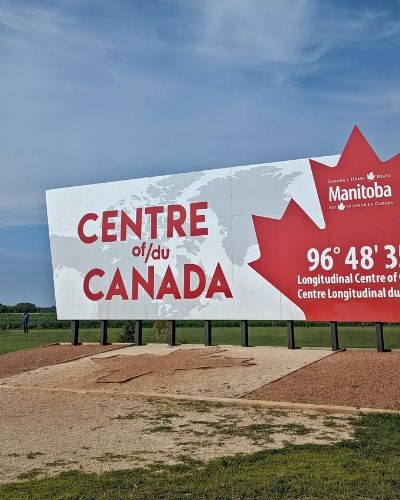
Toronto to Vancouver Road Trip: 24+ Great Places to Stop
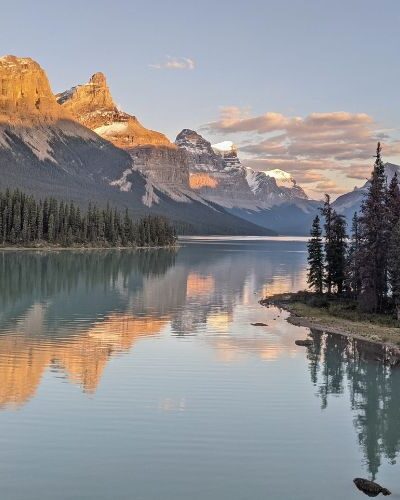
Spirit Island: Complete Guide with Map, Paddling Details, Boat Tour + More

One half of the Canadian/British couple behind Off Track Travel, Gemma is happiest when hiking on the trail or planning the next big travel adventure. JR and Gemma are currently based in the beautiful Okanagan Valley, British Columbia, Canada
Daniel Merino
Sunday 20th of February 2022
Hi, guys. My name is Daniel Merino. I'm twenty-seven years old and I live in Florida in United States. And my girlfriend is originally from Montreal. And what we love to fly to Canada in winter is we would love to go sledding, snow tubing, make snow Angel's, and have snowball fights. And her extended family members live in Quebec.
Tuesday 22nd of February 2022
Sounds like you'll have a fun trip Daniel!

- Where To Stay
- Where To Eat
- Plan Your Trip
- 514 437 1114
- [email protected]

- Blog , Plan Your Trip

Visiting Québec in January
- November 15, 2023
- By Stefan Mercier
When January arrives with its crisp winter air, Quebec City continues to be a captivating destination for travelers seeking a snowy escape. Nestled along the St. Lawrence River, Quebec City transforms into a winter wonderland during this enchanting month.
Quebec City in January presents a captivating landscape, usually covered in a thick, glistening blanket of snow. The city’s historic streets, charming architecture, and cobblestone pathways transform into picturesque scenes straight out of a fairy tale. Indeed, walking amidst Quebec’s centuries-old heritage buildings feels like stepping into a storybook.
For those who enjoy winter activities, Quebec City offers a plethora of options.
- Ice skating at Place D’Youville, the world-famous toboggan slide,
- La Luge , on the Boardwalk outside the Chateau Frontenac,
- Snowshoeing through serene forests, and downhill skiing at nearby Mont-Sainte-Anne or Stoneham,
- Spend a day at Village Vacances North America’s largest winter sports park and the home of Quebec’s world-famous Hotel de Glace (Ice Hotel) : skating, tubing and even a wave pool if you stay at the hotel
are just a few of the exhilarating adventures awaiting visitors.

Quebec City is also renowned for its winter festivals that fill the city with a festive spirit. The German Christmas Market at Place de l’Hôtel-de-Ville transforms into a charming winter market. The cozy stalls sell traditional crafts and delectable treats as you explore the market. Meanwhile, preparations for the Quebec City Winter Carnival are starting. One of the world’s largest winter carnivals, it begins in late January with parades, ice and snow sculpture competitions, its own Ice Castle, and an infectious sense of joy.
While Quebec City’s winter beauty is undeniable, its rich history and culture are equally captivating. The Musée de la Civilisation offers a deep dive into the province’s past. On the other hand, the Musée National des Beaux-arts du Québec showcases an impressive collection of Quebec’s historic art, through which much about the lives of Quebec’s original settlers, the “habitants”, is known.
Don’t forget while packing your suitcases that the weather in January in Quebec City can be remarkably cold, so winter attire is a must. Layering is essential, so be sure to pack warm coats, weatherproof boots, and scarves. And, don’t forget an appropriately warm hat to shield yourself from the cold.
Getting around Quebec City in January is straightforward. The city is small, and walking along Quebec’s centuries-old streets remains a delightful way to explore, allowing you to fully immerse yourself in the winter ambiance.
If you’re considering visiting Quebec City in January, it’s wise to plan your trip in advance. Accommodations can fill up quickly during this popular season, especially in late January and early February around winter around the Winter Quebec Carnival season, so make your reservations early. Additionally, check the event schedules for the winter festivals to make the most of your visit.
Visiting Quebec City in January is like entering a real-life winter wonderland. The city’s snow-covered beauty, combined with its festive atmosphere, offers an experience that’s both enchanting and unforgettable. From the charming streets of Old Quebec to the exhilarating winter activities and delectable cuisine. Bundle up, embrace the chill, and let Quebec City’s January magic weave its spell on you. It’s a journey that promises unforgettable memories and a deep appreciation for the beauty of winter in this North American gem.
Visiting Québec City in December
Visiting Québec City in February
Where to Stay in Quebec City

Popular Traditional Quebecois Dishes

Best Affordable Quebec City Hotels

Free Things to do in Quebec City

Sainte-Anne-de-Beaupré Basilica

Top Sugar Shacks Near Quebec City

The Sugar Shack Traditions of Quebec
Related posts.

The Music of French Canada

How many days should we plan to visit Quebec?

L’Entrecôte Saint-Jean

Quebec City School Trips

Top things to do in Quebec City

Quebec City Hotels Costs

What to Pack for a Trip to Quebec City, Canada: The Packing List

What should I pack for a trip to Quebec City?

The Quebec City Christmas Market

History of the Chateau Frontenac

Village Vacances Valcartier

Ice Hotel Quebec
Thinking of going to quebec but unsure, chat with us and get the info you need to make it a reality..
Book Quebec Tours and Attractions
Reset password.
- Canada Tours
- Canada Travel Guide
- When to Visit Canada
Canada in January: Weather, Attractions and More

- ~ mins read
Canada is a charming, diverse country to visit, and if you love winter scenes or are ready to battle the cold (Canada in January tends to be chilly), then it is the place to be! Cold temperatures, frequent snow, and vast natural regions make the country a haven for winter sports fanatics. From the majestic Niagara Falls to the quaint, historic Quebec City, Canada has something to offer everyone, from adventure-seekers to city strollers. Just remember to wrap up warm!
- Mr. Alessandra M.
Weather in Canada in January
January is the coldest month in Canada and as you keep going north, the temperatures keep getting colder. You can expect plenty of snow in most places (but not all!), with average temperatures usually around -15.5°C, although this can vary according to where you are visiting. For instance, eastern Canada has average highs of 7°C in January and lows of -6°C, coastal areas being warmer than inland. Vancouver is also milder with averages highs of 6°C and lows still above zero, at 2°C, with generally much less snow. Toronto , on the other hand, lies further inland and has a minimum temperature of -8°C and a maximum of -1°C in January. Western Canada with places such as Calgary is also cold and sees temperatures generally a bit colder than Toronto.
For a seasonal overview of weather in Canada, take a look at our guide on the best time to visit Canada .
Weather in Canada in January - Rainfall and Temperatures
Why visit canada in january.

January is a good time to take a trip to Canada if you love winter in all its glory. Explore the country by visiting heritage sites, hitting the slopes and discovering local festivals.
- Fewer crowds and better access to heritage sites: Although it is peak season in the ski resorts, it’s the low season almost everywhere else. Canada is currently home to 20 World Heritage sites, such as Dinosaur Provincial Park in Alberta or Miguasha National Park in Québec, and prices to visit these sites may be lower in January.
- Winter festivals: Winter festivals are a source of great pride in Canada, and they brighten up the wintry, cold landscapes. Quebec City’s Winter Carnival is the largest winter festival in the world, and Winterlude in Ottawa has awe-inspiring attractions.
- See the Aurora Borealis: See the Aurora Borealis, better known as the Northern Lights, shine in all their glory at Canada’s most renowned parks. You can watch the winter skies dance at Jasper National Park in the Canadian Rockies, Churchill in Northern Manitoba, near the city of Edmonton in Alberta, or anywhere northern!
- Niagara Ice Wine Festival: Niagara Falls is certainly a sight to see, so stop there in January to make the most of their Ice Wine Festival. Discover Niagara’s on-the-lake vines, taste their finest wines, and dig into some delicious food. It’s perfect for any foodie!
Where to go and what to do

Popular tourist destinations such as Quebec City, Montreal and Vancouver tours offer a plethora of activities to do in Canada in January. You can enjoy indoor activities such as a shopping spree at International Village Mall or visit museums and galleries to explore the country’s history. The Musée National des Beaux-Arts du Québec has over 42,000 works of art for you to see. Don’t forget to check out Musée de la Civilisation , which celebrates the achievements and progress made by humans throughout the years.
Old Québec is a World Heritage site that shouldn't be missed. Stroll along the oldest cobblestone in North America and explore the birthplace of French Canada. Visit Montreal – Canada’s second-largest city – and marvel at Old Montreal, with its Notre Dame Basilica , one of the most atmospheric places to be.
Winter sports lovers will relish visiting Canada in January. Enjoy skiing, snowboarding, sledding and ice skating, or discover the Ice Magic Festival that takes place at Lake Louise in gorgeous Banff, where ice sculptors from all over the world show off their skills. Lake Louise also becomes an outdoor ice-skating rink, perfect to try out some new ice-skating moves. However, as January is the peak season for winter sports, book your accommodation in advance and make sure to bring the right gear.

If hitting the slopes does not appeal to you, don’t fret! There are still plenty of things to do in Canada in January. The west coast city doesn’t usually see the freezing temperatures and hordes of snow like inland areas and boasts stunning parks like Stanley Park, where you can visit the Bright Nights event, where multicolored lights adorn the park. Another stop on your itinerary should be Saskatoon, where you can find the Winter Shines Festival. Everything is, of course, winter-themed! You can explore an Ice Park, admire the Ice Sculpture Garden and even enjoy a Winter Camp in the city.
What to bring
Make sure to pack winter clothes on your trip to Canada. Bring thick sweaters, jackets, hats, clothing made from wool or other woven fabrics, gloves, boots and scarves. Pack proper gear if you plan to try winter sports.
Although winter in Canada is in full swing in January, don’t let that put you off traveling. As well as winter sports, there are World Heritage sites, galleries, restaurants and shops for you to explore. Read more about a trip to Canada on our travel guide on how many days to spend in Canada . Look into our a tailor-made trip to Canada for a personalized holiday trip.
Related Articles
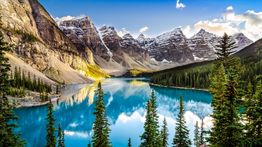
Canada in July: Weather, Destinations and More
July is peak season in Canada, with warm temp... read more
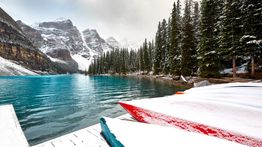
Canada in March: Weather, Crowds and More
Canada in March starts waking up from freezer... read more
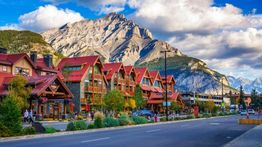
Canada in June: Weather, Tips and More
Canada stretches from the panoramic Atlantic ... read more
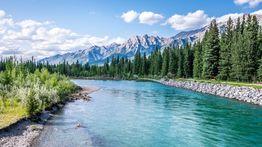
Canada in August: Weather, Crowds and More
August is a sublime time to take a trip to Ca... read more
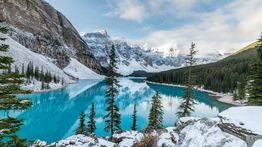
Canada in February: Weather, Tips and More
Snow, festivals, remote wilderness and plenty... read more
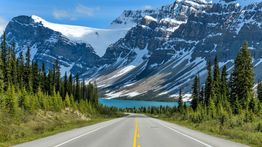
Canada in April: Weather, Places and More
Canada in April is a sight for sore eyes. Stu... read more
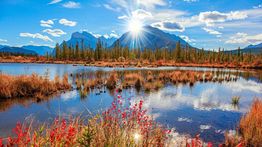
Canada in October: Weather, Events and More
Take a trip to Canada in October for breathta... read more
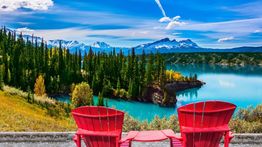
Canada in September: Weather, Destinations and More
September is a superb time to take a trip to ... read more
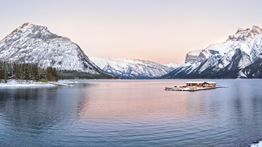
Canada in November: Weather, Rates and More
Canada in November sees the beginning of wint... read more
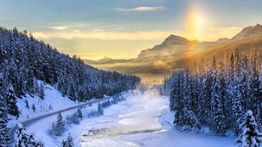
Canada in December: Weather, Festivals and More
Canada is a beautiful destination to visit al... read more
Related Categories
- Canada Activities
- Canada Itineraries
- Canada Travel Advice
- How Long To Stay In Canada
- Things To Do
- Top Canada Destinations
- When To Visit Canada
- Where To Go In Canada
Popular Destinations
- Europe Tours
- Everest Base Camp Trek
- Italy Tours
- Spain Tours
- Argentina Tours
- Sri Lanka Tours
- Chile Tours
- Antarctica Tours

These are the best times to visit Canada

Apr 29, 2024 • 5 min read
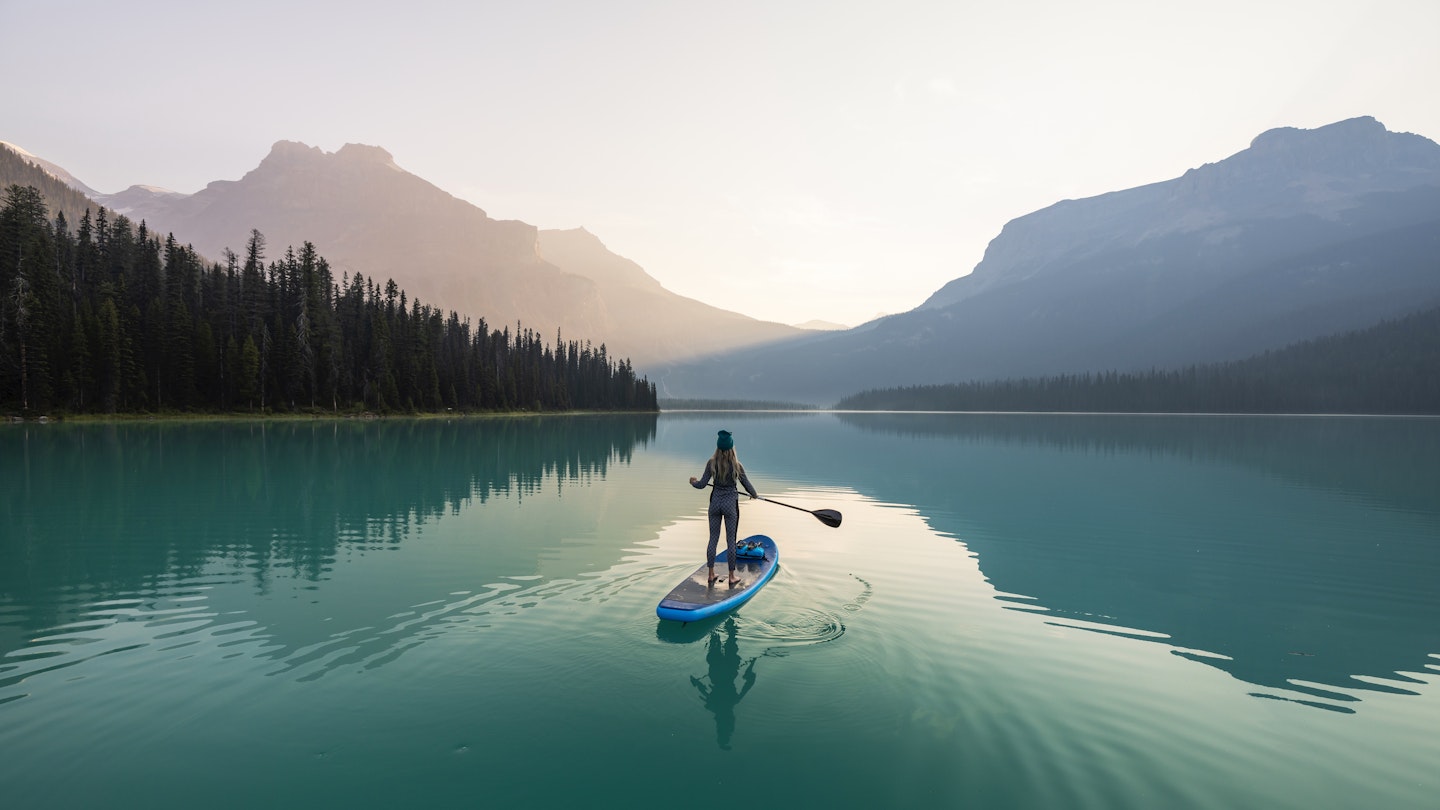
The summer months showcase the best of Canada – like Yoho National Park in British Columbia © Colton Stiffler / Getty Images
Stretching across six time zones and covering a land mass six times the size of Mexico, Canada defies easy categorization.
The weather is largely dependent on the time of year, location, altitude…and a little bit of luck. When Iqaluit is suffering chilly Arctic breezes, Vancouver residents might be enjoying a heat wave. When Halifax is doused in warm rain, Whitehorse – 4000 miles (6400km) away – may be calling up the snowplows. With its famous Chinook winds, Calgary can experience four seasons in one day. Pack for all eventualities – even in summer – then hope for the best.
In terms of outdoor activities, Canada is a two-season country. Summer, when the weather is at its best countrywide, is prime time for hiking, biking, surfing and kayaking. Winter is a bonanza for skiing and snow sports, especially in British Columbia and Québec , where you’ll find the lion’s share of the ski resorts.
The spring and fall shoulder seasons – namely April to May (outside Easter), and October to November – are a good time to visit the cities, when prices are more reasonable.
Here’s more of what you need to know as you consider the best time to visit the majestic nation of Canada.
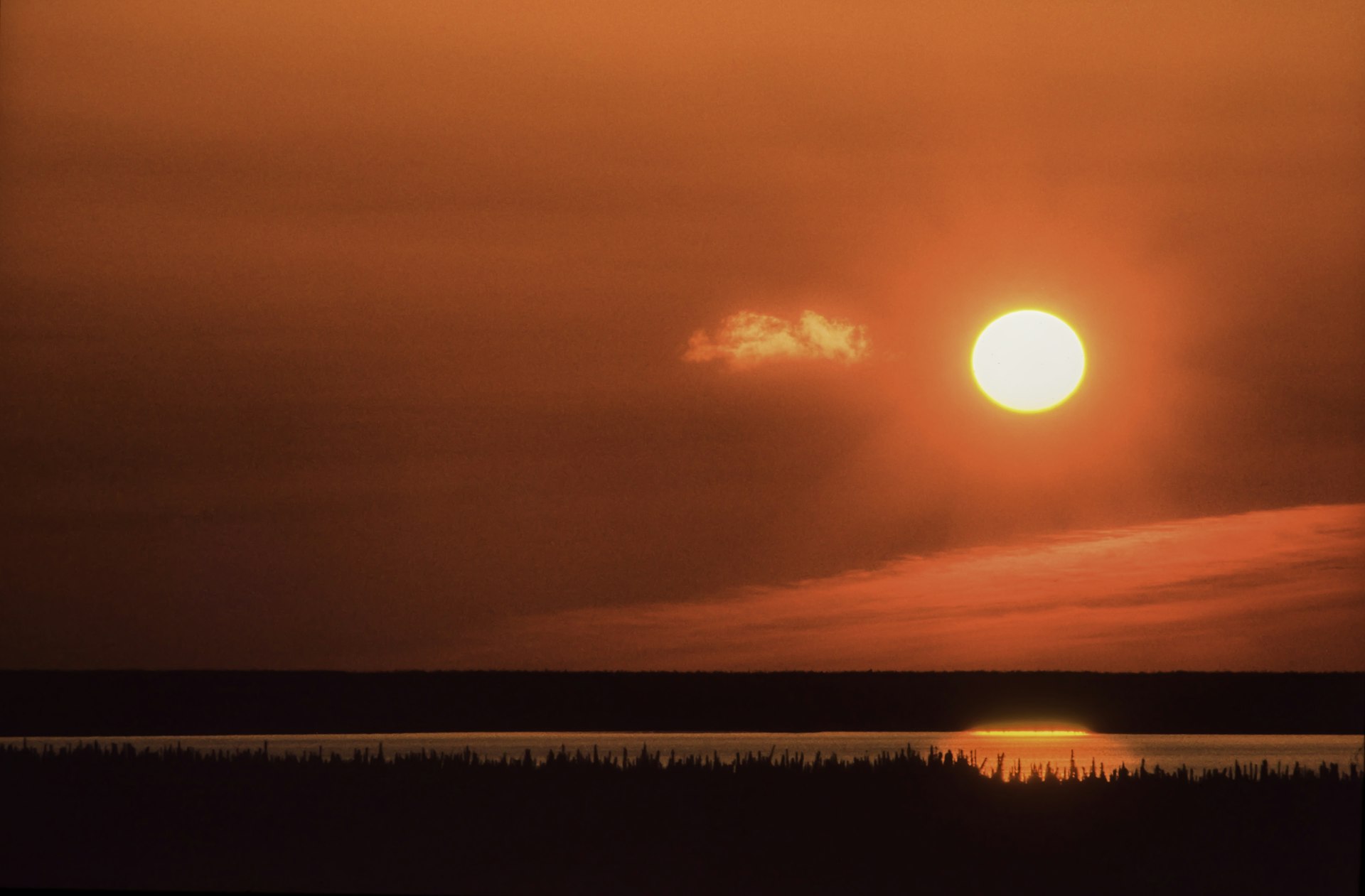
Come between June and August to see Canada at its best
Long days, warm weather, extended opening times and an abundance of summer festivities make June, July and August the three best months to visit Canada. You’ll have maximum options in volume and variety of things to do, and just about everything will be open.
You can see the midnight sun in Inuvik in the Northwest Territories , roam the high alpine slopes of British Columbia’s mountains without snowshoes and paddle in the calm, ice-free lakes of Ontario . Late June and early July is a superb time to visit the far north, where it rarely gets dark and the temperatures are – dare we say – pleasant, even in the Arctic. All over Canada, seasonal snow is usually gone by late June, although it can sometimes persist at higher altitudes until mid-July.
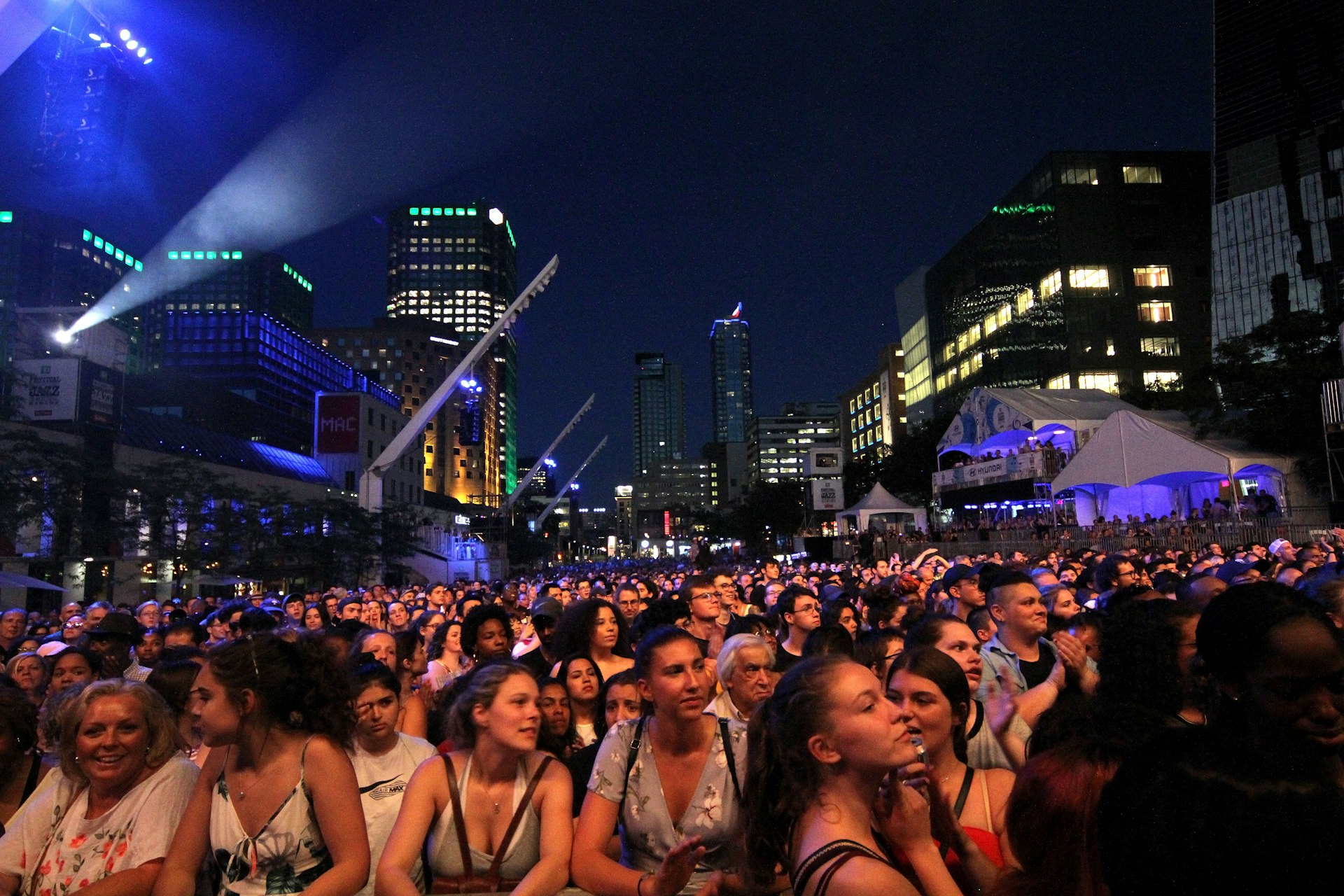
The peak season in Canada’s national parks is generally Victoria Day (the penultimate Monday in May) to Labor Day (the first Monday in September). This is also when the bulk of the country’s arts and cultural festivals take place, many of them in cities like Montréal (with jazz every June), Edmonton ( Fringe every August) and Toronto ( film every September).
Summer does come with a few caveats, however: chief among them, elevated prices and heavy crowds. Book rooms well in advance, develop a tolerance for lines and budget accordingly. While forest fires can happen any time between May and October, August is the most hazardous month. Mosquitoes are another nuisance. Peak bug-biting season varies by region and altitude, though late July and early August tend to be the itchiest times. Pack repellent.
Stick to lower-altitude hikes in April and May
Although the weather can stay warm and dry-ish by early spring, it can take until late May or even early June for the last stubborn patches of snow to shift at higher altitudes. Don’t plan any challenging alpine hikes in places like Banff or Whistler until mid-June. Mountain lakes de-ice around late May, allowing for kayaking and other boating activities.
While rain and cool temperatures can persist into spring, the risk of forest fires and heavy smoke is slightly lower at this time.
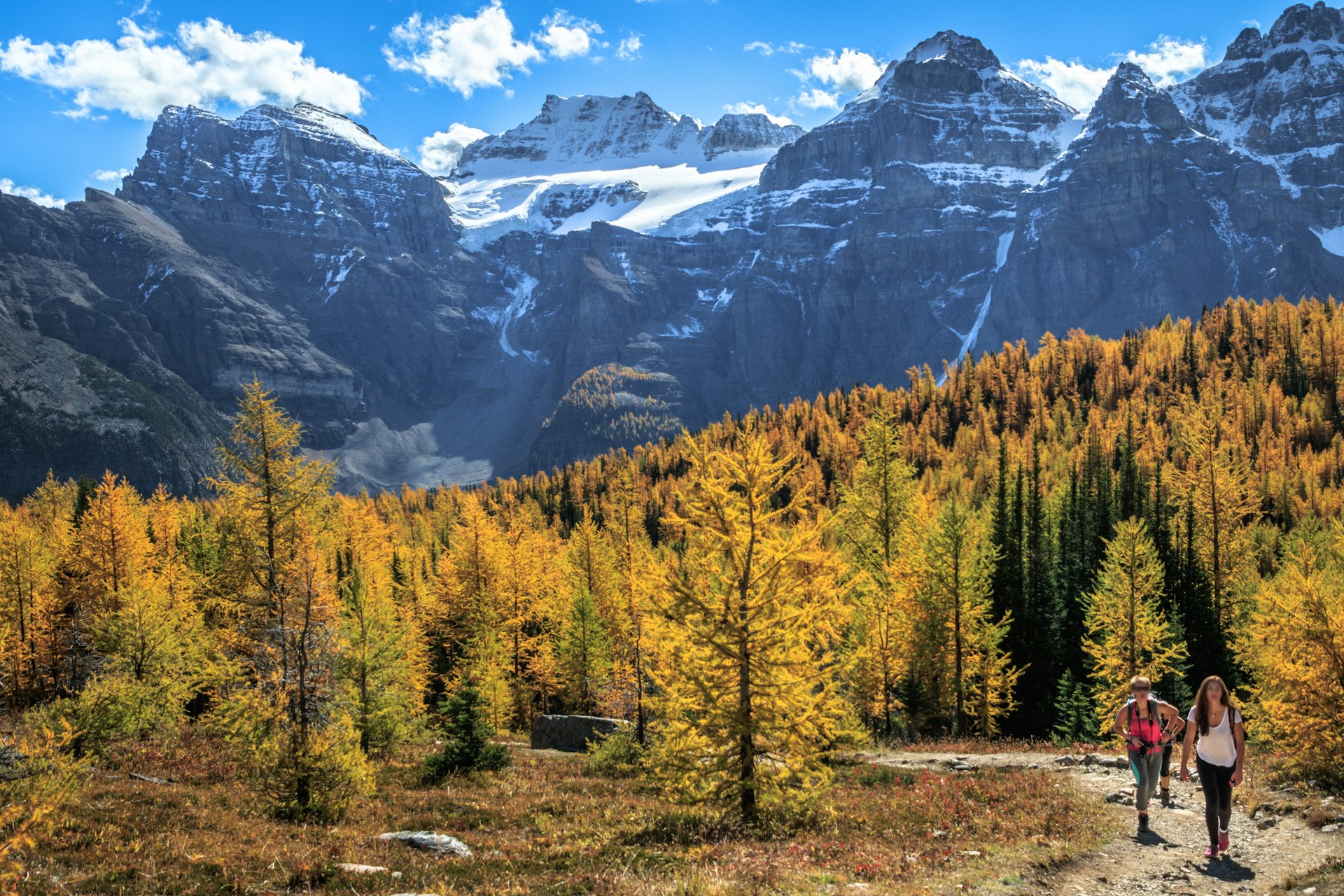
September to early October is the shoulder-season sweet spot
Early September is an excellent time for hiking in Canada , especially in many of the mountain parks. In the south and closer to the coast, the weather usually remains relatively mild into early fall, with snow rare before October. Crowds and prices tend to fall away after the Labor Day holiday, when the season can throw up some unheralded natural surprises – like the golden larch trees of Banff (best in early October). The only real disadvantages of this late summer–early fall window are the progressively shorter days and the bears who vociferously hunt for food in preparation for hibernation.
December to March is the best time for skiing and viewing the northern lights
In an ever-changing global climate, the start of Canada’s ski season is never written in stone. The last week in November is the most common opening date for bigger resorts like Whistler. Yet for the best conditions and snowpack, most people wait until after Christmas.
The length of the ski season is highly variable and depends on location and altitude. Even Banff National Park ’s three different ski areas log considerable variations, with Norquay usually closing mid-April, Lake Louise in early May and Banff Sunshine a week or so later.
If you can bear the cold temperatures, northern lights viewing is best enjoyed when the nights are longest in the winter. If you can’t stand the cold, come in September.
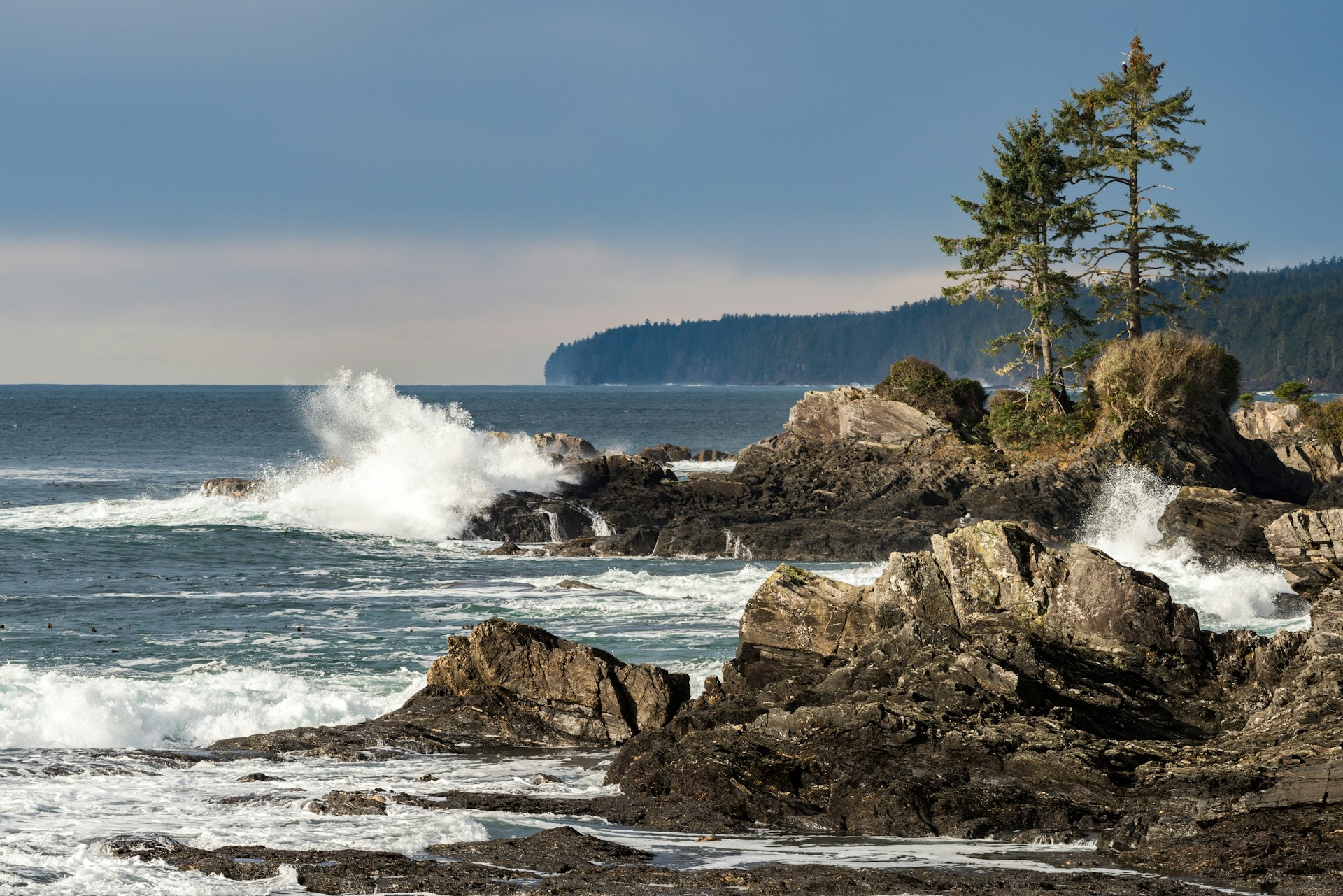
Visit from March to May and October to November to save – and enjoy a few surprises
Late March to early May and mid-October to late November are relatively slow periods for outdoor activities, when parks and resorts go through a transition as they shift between winter and summer infrastructures. Some facilities (like gondolas, trails and lodges) close temporarily during these periods, as ski runs are converted into bike parks and mountain trails are beset by unstable slushy snow and potentially dangerous “snow bridges.” If you can work around these limitations, however, room rates are up to 30% cheaper at these times.
Shoulder season is also a great time to consider a city break, with plenty of indoor options to ponder if the weather turns ugly.
Several spring and fall festivals are worth planning your trip around. Jasper in Alberta has an astronomically themed Dark Sky Festival in October, while Stratford in southwest Ontario hosts a prestigious Shakespeare festival in April. Tofino on Vancouver Island has developed into a fabulous storm-watching destination in recent years, with the wild Pacific tempests rolling in from November through February.
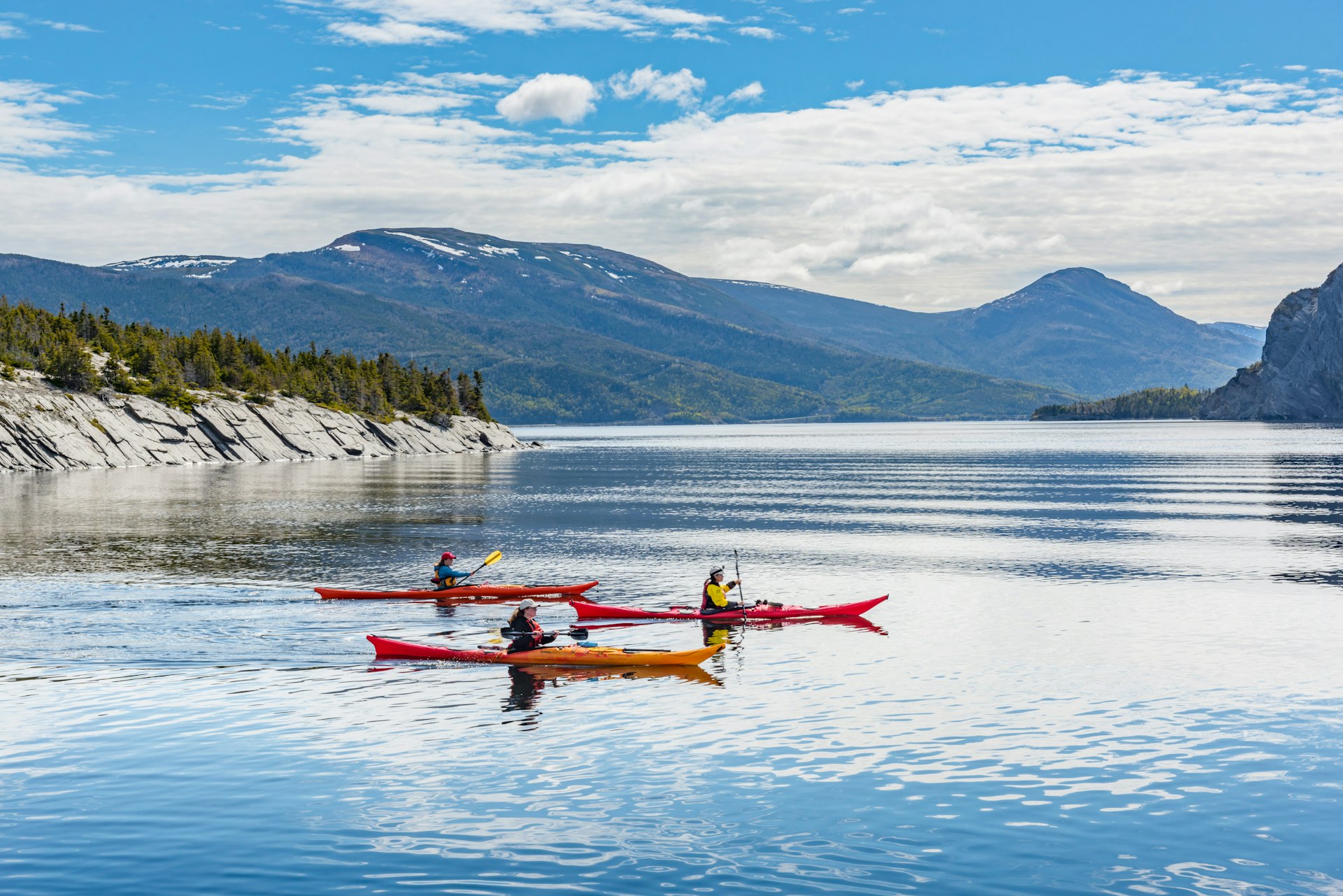
Keep planning your trip to Canada:
Tackle a few of Canada’s best hikes How to get around this continent-size country What you need to know before you set off Consider Canada’s stupendous national parks
This article was first published Mar 12, 2021 and updated Apr 29, 2024.
Explore related stories

Destination Practicalities
May 17, 2024 • 7 min read
Hikers, birders and 'berg hunters will find abundant adventures in Newfoundland. Make the most of a trip to this wild and rugged isle with these top tips.

May 16, 2024 • 12 min read

May 13, 2024 • 14 min read

May 11, 2024 • 9 min read

May 7, 2024 • 8 min read
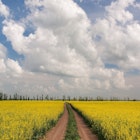
Apr 26, 2024 • 6 min read

Apr 19, 2024 • 10 min read
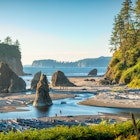
Apr 16, 2024 • 8 min read
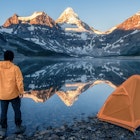
Apr 12, 2024 • 7 min read
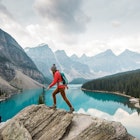
Apr 11, 2024 • 6 min read
Best Time to Visit Canada
When is the best time to go to Canada? It really depends on what you are looking for in a vacation. From coast to coast, Canada is a beautiful country that is fantastic to visit at any time of year, but every traveller has their own ideas of what they want from a trip.
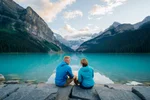
Some want Winter festivals or sports, others love to hike in nature looking at Fall colours, and some prefer exploring a city in the Summer. In this post, we'll give you an idea of when you'll get the best weather in Canada and the best times to travel to Canada for your own preferred interests and sights to see.

[ Explore: Trains Across Canada ]
Best season to visit canada.
Canada is a vast country whose climate varies extensively from the East to the West. Although many people favour Summer for their vacation, as they think it's too cold the rest of the year, the best time of year to visit Canada is between September and November for a number of reasons.
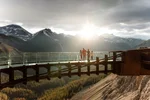
Some parts of Canada can get very hot during summer, so the weather can be much more comfortable during the fall months, with the fall foliage providing a beautiful backdrop to your visit. However, everyone has their preferences for weather, so we'll break it down by the seasons for you, looking at the best months to visit Canada.
1. Winter — December 21st to March 19th
January is the coldest month in Canada for most of the provinces. Although northern regions and the flatlands can experience temperatures as low as -4 degrees Fahrenheit during this time, inland cities like Vancouver are much milder, with lows of around 40 degrees. While snow can come as early as October and appear into April, but snowfall is heaviest from December through February. The month with the most snowfall is usually January. But don't let that discourage you — there is a lot to love about Winter in Canada.

This is an excellent time of year to visit Canada for winter sports such as skating and skiing. It's also the perfect time to observe the Northern Lights . Winter in Canada is the ideal time to visit a mountain lodge and spend a few days cozied up with your family, warming up by the fire after a day outside exploring. There are also many festivals during this season, so if you wrap up nicely for the cold, this can be a wonderful time for a visit.
A Winter train trip is a magical experience, where you can stay cozy in your private cabin and watch the snowy landscape roll by the window.
Travel across Canada on our Trans Canada by Rail in Winter train trip .

Keep reading or discover more travel inspiration in our brochure. This guide showcases our world-famous train journeys, with ideas for personalizing your Canadian vacation.
2. Spring — March 20th to June 20th
Springtime in Canada is still a little chilly, with temperatures not getting much above the mid-fifties Fahrenheit, and most parts of the country experience heavy rainfall in April, making it the rainiest month in Canada. That said, with all the plant life and flowers springing into life, it can be a beautiful time to visit, especially on the West Coast of Canada where the Spring come earliest. Spring can also be the best time for some wildlife viewing, with migrating birds and bears leaving hibernation.
#1 Travel tip: When to go bird watching
Canada offers some fantastic bird watching all-year round. For migrating birds, plan your trip for early Spring or early- thru mid-Fall. For breeding birds and chicks, aim for late spring and early summer. British Columbia has great winter birding in December.

If you're well-equipped for the weather, Spring can be an excellent time to book your trip, as this is when you can find the best deals on accommodation and travel. In addition, with the lengthening days leading up to the summer solstice, it's a great time to explore the glaciers and mountains of the Northern Territories.
[ Explore: The Canadian Train by VIA Rail ]
#2 travel tip: top bites.
Some of Canada’s signature foods are only available certain times of year. For example, lobster season generally occurs between April-June. Other iconic dishes, such as poutine, can always be found.

3. Summer — June 21st to September 20th
As in many other countries, Summer is the peak season for visitors to Canada. However, temperatures vary across the country, with highs between 70 and 95 Fahrenheit in Toronto and 65 to 80 in more temperate Vancouver. This gives plenty of opportunities to visit Canada's many sites of natural beauty. Generally, July is the hottest month in Canada.
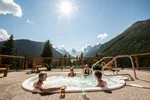
From July through August, school is out in Canada, so many families take their Summer holidays. It is also the peak season for outdoor festivals and celebrations, from the Calgary Stampede to the Canadian National Exhibition.
Train tours, such as our trips on the Rocky Mountaineer train , run primarily in the Summer and Fall, which may make these seasons the best time of year to trave to Canada if this is the vacation you are looking for.
Read more: Best Summer Festivals Across Canada
4. Fall — September 21st to December 20th
Fall is a spectacular season in Canada, making it one of the best times to visit Canada. During these month, there are comfortable temperatures, around 60 degrees in September in Toronto, steadily falling towards winter. Rain is common this time of year, although not as much as in April.
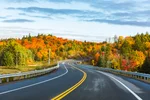
You can expect the first snow in November. Overall, Fall is a great time to travel in Canada , neither too cold nor too hot, with little in the way of extreme weather.
A major draw of visiting Canada in the Fall is the leaves changing colour, which creates vivid red, orange and gold landscapes. For this reason, many believe October is the best month to visit, when colours are at their peak.
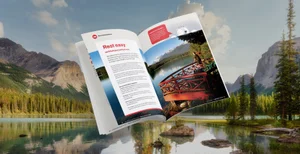
Download our Brochures and Mini Guides
Frequently asked questions, when is the best time to visit canada for wildlife watching.
If you are visiting Canada specifically for the wildlife, it's best to go between May and November. You'll have your best chances to see grizzly bears, polar bears, migratory birds and more than ten species of whales through this stretch of the year. The grizzly bear-watching season begins between May and June as they emerge from hibernation. At the same time, humpback whales are chasing herring as they migrate north. In July and August, you can visit the Arctic regions to see caribou, foxes, polar bears and whales off the coastal areas. September is the best month to see grizzlies at their most active, cramming in the food ready for hibernation and chasing wild salmon as they travel upstream to spawn. October and November are the best months for viewing polar bears as they gather near Churchill for the sea ice. Most Canadian wildlife will be hard to spot during winter as it either hibernates, hides from the cold or migrates to warmer climates.
When is the Best Time to Visit Canada for Festivals?
Canada has festivals all year round, from the Winterlude festival in Ottawa to Carnivale, the Canadian National Exhibition, and the Pride parade in Toronto in the Summer. However, most festivals occur in the Summer months, such as the Pacific National Exhibition in Vancouver, the Calgary Stampede, the Just for Laughs festival in Montreal and the Celebration of Light in Vancouver. All-in-all, Canada is a great place to visit for festivals at any time of the year.
When is the Best Time for a Winter Vacation in Canada?
Canada has fantastic Winter vacation options, such as skiing, dog-sledding, outdoor hot-pooling and sleigh rides. And the best part is Canadians are used to the cold weather, so the infrastructure doesn't grind to a halt. The best months for these activities are November and December, as the real cold bites hard in January and February. The northern lights are also awe-inspiring during this time with the long hours of darkness.
What is the Best Time to See Fall Colours?
In Ontario, the best place to see Fall colors, the best time to visit is from mid-September until mid-October. Other areas have beautiful displays too during this time, although the further north you travel, the earlier winter begins to set in. Across Eastern Canada and the Rockies all boast stunning Fall foliage.
What is the Best Time to Avoid Crowds?
The off-season in Canada lasts from November until April when the weather is particularly cold. During this time, you will find far fewer crowds—unless you're visiting a ski resort! January is the coldest and snowiest month, which also makes it the quietest month, which means you will get the best deals on travel and accommodation. However, it's best to remember that some areas are closed during this season, such as the maritime resorts in Nova Scotia, Prince Edward Island and Newfoundland, and northern parts, such as the Yukon.
If you want to avoid crowds and still be able to visit all these areas, October or May are probably your best bet. There are also hidden gems and tips for avoiding the crowds in the summer, which is the peak season.
Final Thoughts
While every season has its draws and much depends on what you want to do, our Canadian Insiders recommend Fall as the best time to go to Canada because of its ideal weather and reduced crowds. For those travellers looking to relax on a rail journey with Canadian Train Vacations , the Fall is also ideal, as both VIA Rail and Rocky Mountaineer offer trips at this time of year.
About the author: Athena McKenzie is the Content Manager at Fresh Tracks Canada. An experienced lifestyle journalist, she has written about travel, design, arts and entertainment. Her work has appeared in The Globe and Mail, Toronto Star, Zoomer Magazine, Elle Canada and... Read more
Related Content
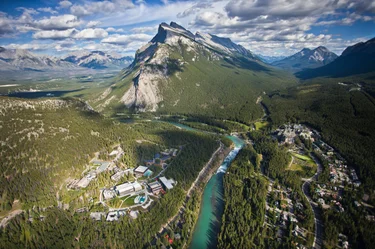
Travel Guide
Best Time to Visit Banff Canada
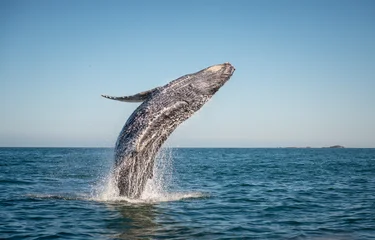
Best of Canada
Canadian Wildlife: All You Need to Know
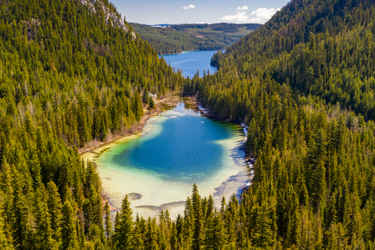
Amazing Hidden Gems in Canada
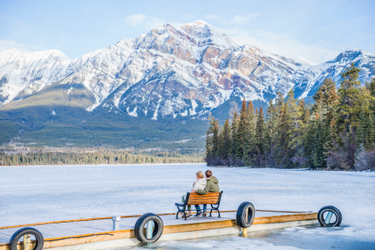
Best Winter Vacations In Canada
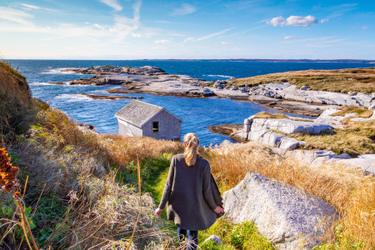
15 Best Places to Visit During a Summer Vacation in Canada
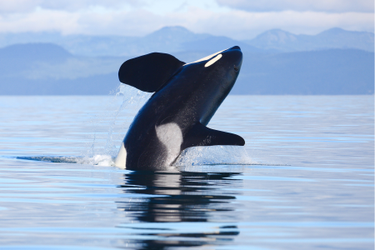
Whale Watching In Canada
Discover more.
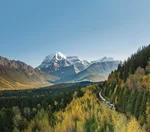
Discuss your Canadian train vacation with a local travel expert
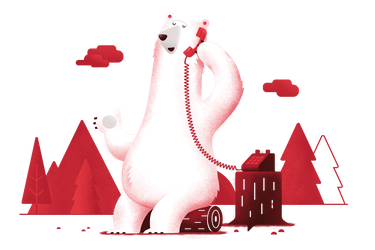
Or call us toll free
Current promotions
Sign up for special offers, monthly Canadian Insider tips, and vacation inspiration.

Best Time to Visit Canada: Month by Month Breakdown
Canada is a popular country to visit any time of the year, but it can be a very different travel experience depending on the season that you choose to visit.
Summer is peak season in Canada when the weather is at its best. Winter is cold, snowy and icy, but it’s the perfect time for skiing and snowboarding. Spring and autumn are lovely and come with fewer crowds, but the weather can be unpredictable.
The best time to visit Canada will depend on what activities you’re looking to enjoy, and how many other tourists you don’t mind sharing that experience with.
To help you to plan your trip, here’s our month by month breakdown of the best time to visit Canada.
Don’t leave home without: Lonely Planet Canada (Country Guide)
Table of Contents
Canada Summer Months
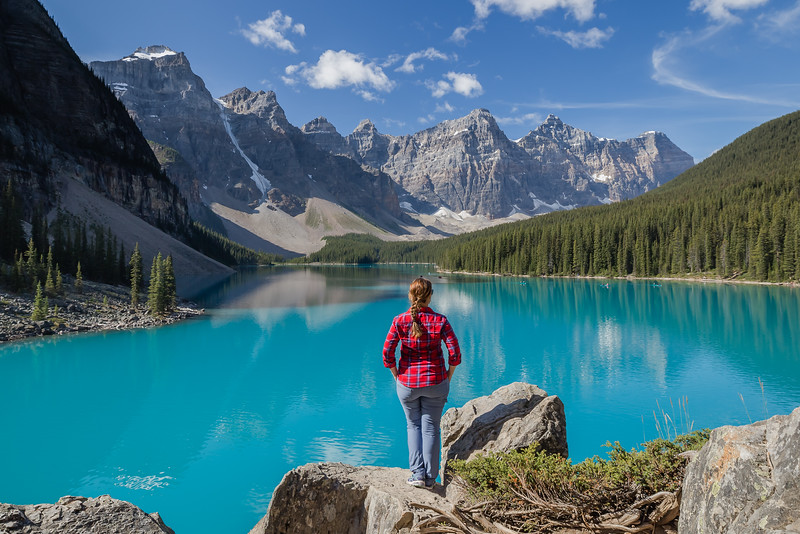
Summer is the most popular time of the year to visit Canada. For hikers and outdoor lovers, this is the best time to visit Canada, for the simple reason that you can guarantee the hiking trails will be open.
There are lots of festivals and events too in summer, and it’s a great time for a road trip.
Need to book a car for your road trip adventure? We use Discover Car Hire for comparing car prices to find the best deal. They search both local & international rental companies .
June in Canada
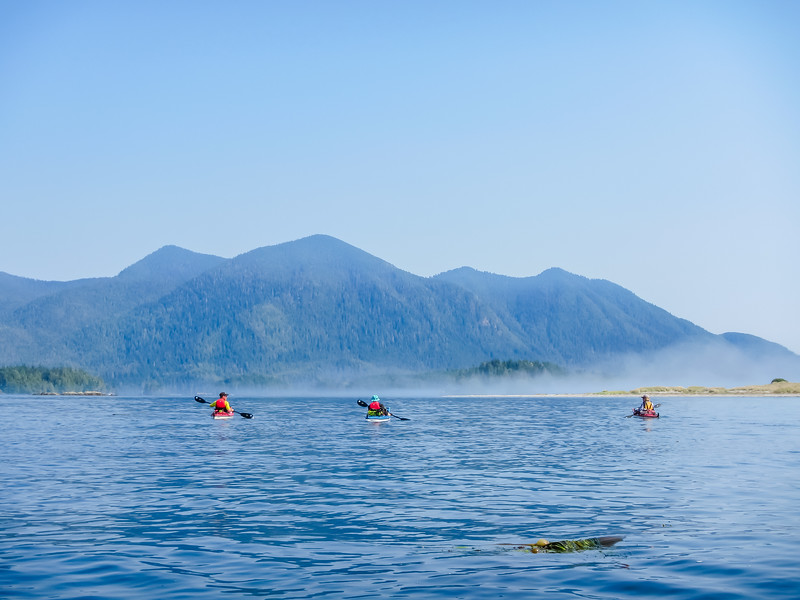
June is the start of the summer high season, and this is when Canada starts to get busy as tourists begin to flock in for road trips and to explore the national parks.
June is still a good time to avoid the worst of the crowds, which tend to arrive in July and August when many countries are in the midst of their school holidays.
In June, take to popular places like Banff and Jasper, and the wider Canadian Rockies and make the most of the newly opened hiking trails and the resurgent wildlife.
July in Canada
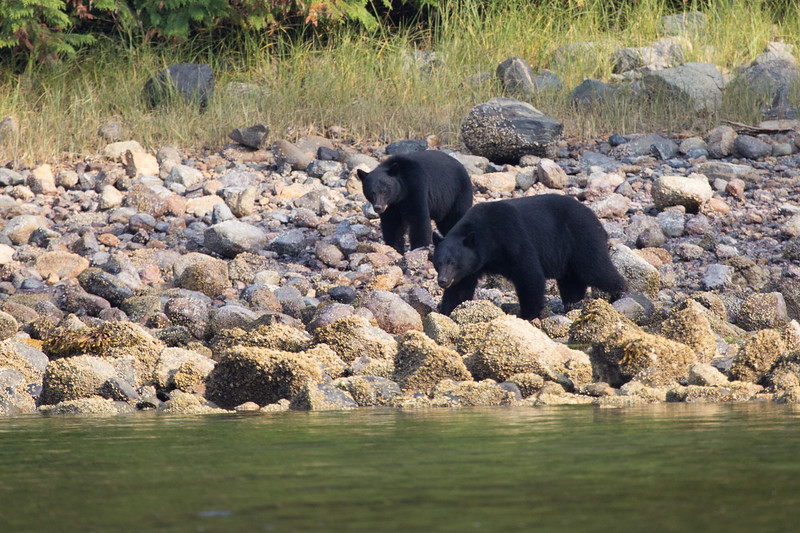
July is busy, but that’s because weather-wise this is the best time to visit Canada. In the far north, you can enjoy endless hours of sunshine in offbeat destinations such as Edmonton or Whitehorse.
While other travelers will head to the Canadian Rockies or Vancouver, in the Arctic Circle, you’ll find a fraction of the tourist numbers.
Get off the beaten track in July, and enjoy a unique experience without the crowds in the north.
July is also a great time for city hopping, like Montreal, Calgary and Toronto all throw big summer festivals through July to make the most of the sunshine.
August in Canada

August will be just as busy as July across the country, but again, weather-wise this is one of the best times to visit Canada.
The sun is still shining, and this is the last month of the year where you can guarantee the good weather before autumn arrives.
Go on a road trip in British Columbia, and take in the epic Sea to Sky Highway, or take the road more traveled and drive the Banff to Jasper Highway, along the Icefields Parkway.
But remember, that Canada is a vast country, and if you’re looking to travel off the beaten track and find secluded places, then it’s never too hard to do this away from the major tourist trails.
Head off hiking, climb mountain peaks and camp out in the wild through Autumn.
Canada Fall Months
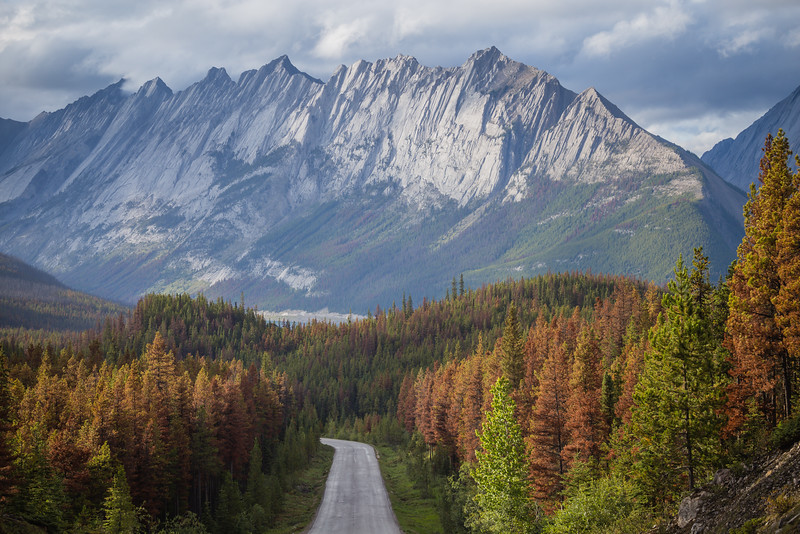
Fall is a shoulder season when it comes to the best time to visit Canada, but if you’re looking to escape the summer crowds then there isn’t a better time to visit.
Prices are lower and popular attractions aren’t nearly as busy, but the weather can be unpredictable.
September in Canada

Fall comes around all too quickly in Canada, but September will still see good weather across the country. Just be prepared for a bit of unpredictability.
On the plus side though, towards the end of September, the colors will be Autumnal, and the outdoors is still as beautiful as ever.
September is a good time to make the most of lower prices and smaller crowds after the summer rush has ended.
Vancouver is still positively hot if you’re looking for sunshine, and there are some great national parks nearby, as well as epic road trips from the west coast city and into the wilderness of British Columbia.
Visit top tourist sights such as Banff and Jasper, take the Rocky Mountain train, or gaze ina we at the crashing force of Niagra Falls from the Canadian side.
October in Canada
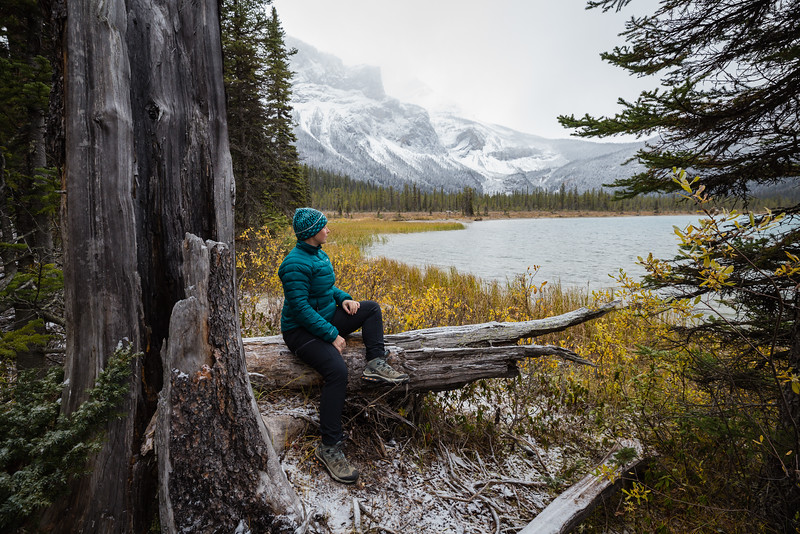
October is the middle of Fall, and it’s the best time to visit Canada if you’re in search of those golden, red and yellow shades of natural beauty.
It can rain a lot in October, so be prepared for wet weather, but in the moments of sunshine, the outdoors radiates gloriously.
Hiking trails will already start to close down in many destinations, but travel to British Columbia and you’ll find that the warmer climate keeps places open and busier for longer than other areas such as the Rockies.
November in Canada
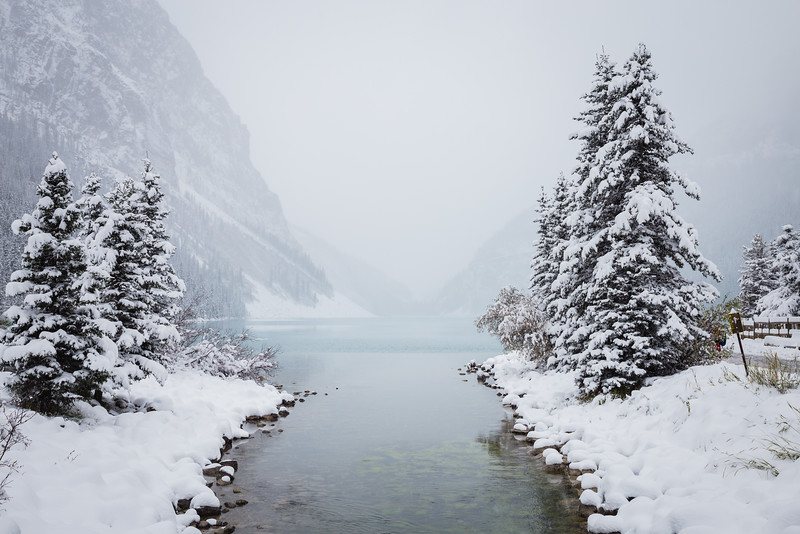
November is the last month of Autumn, but in many places, it will already feel as if it’s been winter for a long time.
If you’re after low prices and small crowds, then there isn’t a better time to visit Canada than in November.
The weather is bound to be unpredictable and in many places, it’s going to be snowing already.
You can catch early deals at ski resorts if there’s been enough snowfall. Or you can enjoy the best of Canada’s cities, and make the most of the museums and galleries while soaking up the culture in Toronto, Vancouver or Montreal.
Canada Winter Months

Winter is the time for snowsports across Canada because this is a country that gets very cold between December and February.
The ski resorts will be full over winter, with peak season falling over Christmas and through to the New Year.
December in Canada
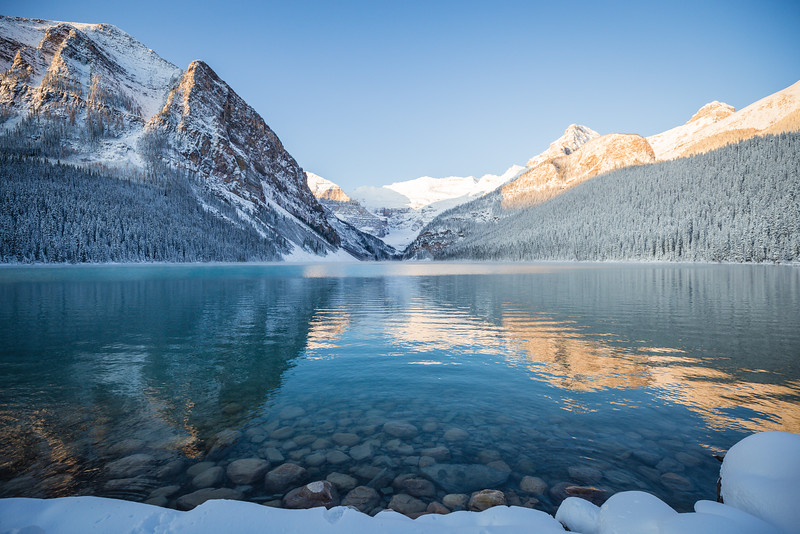
In December, it’s the real start of the ski season in popular destinations such as Whistler and Banff. With lots of snowfall and the Christmas holidays, this is a great time to be in Canada if you love festivities and snow sports.
If you want to go skiing though, then make sure that you book in advance, because this is peak season.
The cities hold Christmas events all through December, and with all the museums still open through winter, it’s a great chance to escape the cold and to explore urban Canada.
January in Canada

January is a cold time of the year to be in Canada, and you need to be prepared for the icy chill of the Canadian winter wherever you are.
After the Christmas rush, things slow down, so this is a good time to get a few good deals at the ski resorts, or least to hit the slopes without so many other tourists around.
If you are looking for a unique experience, then why not consider heading into the Arctic Circle?
The remote north of Canada is becoming more popular and more accessible, even in winter, and there are endless opportunities for dog sledding, husky safaris and seeing the colorful Northern Lights in the night sky.
Travel can be unpredictable in January, due to the weather, but heading north is well worth the effort if you have the time and patience.
February in Canada
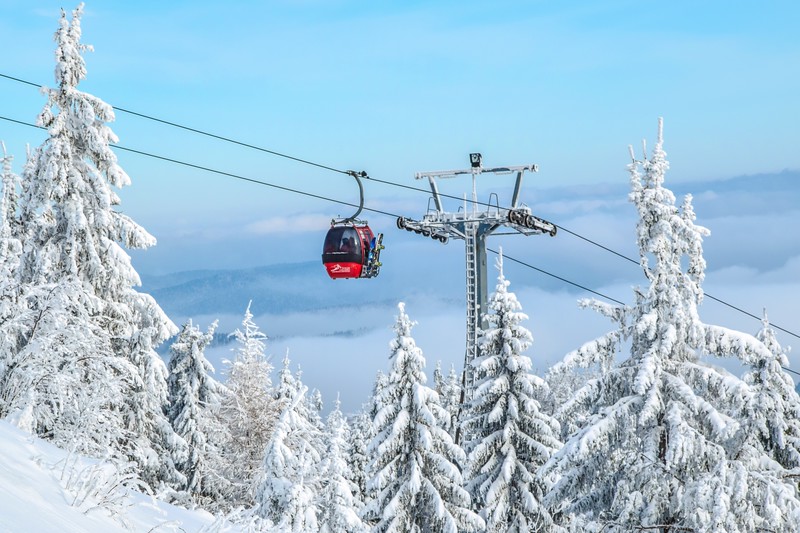
February is a great time for skiing in Canada, as the ski slopes will be in great shape by now.
It’s never too busy either, except on the weekends, and you’ll be able to get low season prices on both hotels and flights.
If skiing isn’t your thing though, then you can head north into the Arctic Circle to search for the Northern Lights.
Or you can stick to the cities and enjoy the warmth of Canada’s many great museums, bars, galleries, and restaurants instead of braving the chilly outdoors.
Canada Spring Months
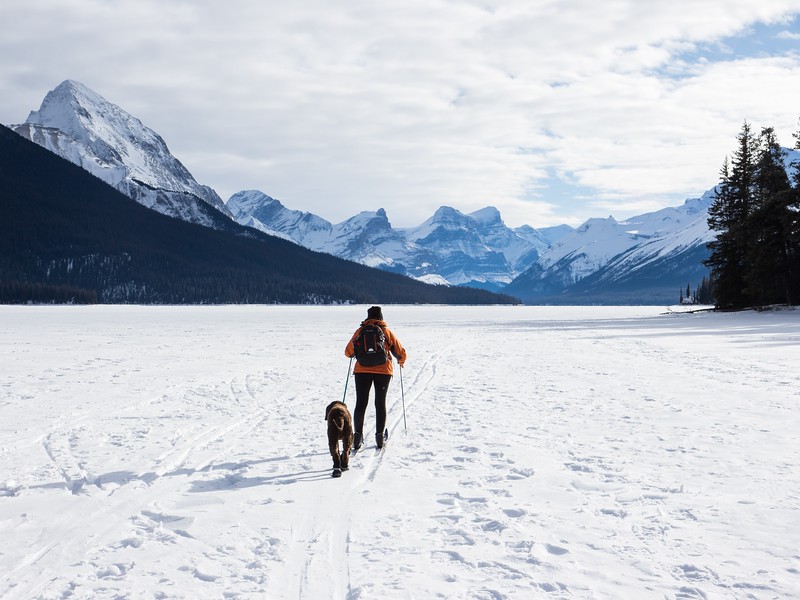
Spring is a slow starter in Canada, and winter can linger for a long time, particularly if you head further north.
The weather can be unpredictable, and it’s not a good time for hiking as many of the trails are still closed.
Life is returning to Canada though after a tough winter, and it can be a beautiful time for wildlife spotting.
March in Canada

March is a slow month when it comes to travel, but that does mean you can take full advantage of low prices and small crowds.
This is the start of spring, but it will still feel a lot like winter in many places, particularly if you travel further north.
Warmer locations such as Vancouver are beginning to bloom into life, while the national parks will have plenty of wildlife sightings as bears and other animals begin to slowly emerge.
April in Canada

April can be quiet, although there will be a mini-high season over the Easter Holidays.
The weather is unpredictable, but expect it to be cold in most locations, with the odd sunny day as summer begins to arrive – slowly.
April is quite often the last month of the ski season, so head to Whistler or the Rockies for more snowsport action before summer arrives and the snow melts.
May in Canada
May is when the weather will finally begin to turn for the better across Canada, and this can be a fantastic time to explore the country.
If you love your snowsports, then some ski resorts will still be open, and you can find some end of season deals.
If you love national parks, then many of the hiking trails and campsites are beginning to open – although this varies each year, so check in advance.
The best thing is, you miss the summer crowds in May and get those great low season prices!
Our Top Recommended Tours:
- Canadian Rockies Encompassed with G Adventures – 19 days
- Vancouver Island & Northern Rockies with G Adventures – 11 days
- Canadian Rockies Express with G Adventures – 8 days
- Discover the Canadian Rockies Westbound with National Geographic Journeys -12 days
- Canadian Rockies: National Parks Eastbound with G Adventures – 14 days
More on Canada:
- Kayaking Vancouver Island: 4 Days on the Clayoquot Sound
- 13 Epic Things to Do in Tofino BC
- 15 Epic Things to do in Squamish BC + Planning Guide
- Sea to Sky Highway Road Trip: Best Stops from Vancouver to Whistler
- 25 Incredible Things to Do in Banff National Park
- Best Time to Visit Banff: Month by Month Breakdown
- Bow Valley Parkway Road Trip: Best Stops from Banff to Lake Louise
- 20 Epic Things to Do in Lake Louise, Canada
- Icefields Parkway Road Trip Guide: Best stops from Banff to Jasper
- 18 EPIC Things to do in Jasper National Park
- Moraine Lake: Complete Planning Guide
- 9 Unreal Northern Lights Tours
Did you like this story? Share it!
Travel planning resources, about david stock.
I have always been an outdoorsman so becoming an adventure traveler was just the next natural step. I love nature, I love to get off the beaten path and I like to explore. I enjoy scuba diving and cars. And yes, Lina and I have a naked dog.
Leave a Comment Cancel reply

Canada Travel Tips
- travelinfo333
Canada in January: Travel Tips, Weather and Top Attractions
Canada is a unique and diverse country to visit and if you love winter and are ready to battle the ultimate cold, then it is the place for your next trip! Canada in January is extremely cold, yet absolutely stunning. This season offers a plethora of experiences for visitors seeking adventure and scenic views.
January is apparently the best time to visit Canada. Even individuals who are not keen on chilly weather discover plenty of reasons why winter is a wonderful time to explore. If you are unwilling to set your foot out below zero temperatures, you will be surprised to know that not all of Canada is chilly in the winter. From Quebec to Victoria in Western Canada, here is your ultimate guide to exploring Canada in January .
Weather in Canada in January
January is actually the coldest month in Canada. As you keep moving towards the north, the temperature keeps decreasing. You can expect heavy snowfalls in most places, but not all! The average temperatures usually hover around -15.5 degrees Celsius, however, it may vary according to where you are.
Take for instance, the east of Canada has average highs of 7 degrees Celsius and lows of -6 degrees Celsius whereas the coastal regions are warmer than inland.
Vancouver also records average highs of 6 degrees Celsius and lows of around 2 degrees Celsius.
Toronto, on the other hand, is an inland city and has a minimum temperature of 8 degrees Celsius and a maximum of -1 degrees Celsius.
Canada in January: Best Places to Visit
Canada is a nation that has very assorted seasons. It boasts everything from the majestic mountains to stunning shorelines, woodlands, forests, and vibrant urban areas. While these seasons may change between locals, January gives you tons of the best places to visit in Canada during winter. Below is a list of some of the must-visit places for you:
Niagara Falls

This icon of Canada is the ultimate sensation that you don’t want to miss in January. The cascade draws thousands of visitors not just during summer but also in winter consistently. During the winter Niagara Falls freezes and you get to witness the most stunning characteristic ice models ever! There are also several happenings during this season including the famous Winter Festival of Lights. This is a staggering light show that stretches over five km covered in lit presentation. It also has firecrackers over the falls and the sky, kids’ exhibitions, and concerts.
Rideau Canal
Located in the heart of the city, Rideau Canal is recognised as a UNESCO World Heritage Site. It is one of the most popular attractions in Ottawa and Canada spreading over 7.8 km long. So what’s the fun part? During winter, this canal transforms itself into the biggest natural skating arena on the planet. This is the best means of transport ever! Skaters love to skate from one place to another amid surge hour. If you love skating, you will also love exploring the city of Ottawa and ending the day by eating at one of the warmest and most stunning eateries.
Quebec City

Deepened with culture and diversity, Quebec is one of the best places to visit in Canada in January. Covered in a blanket of snow, this city pulls locals as well as tourists to explore and appreciate the occasion vibe. A stunning snowcapped castle overlooking the icy Saint Lawrence River and the beautiful cobblestone streets create a dreamy land. You can visit Old Quebec, one of the most picturesque locations in North America and Le Chateau Frontenac, and also engage in various activities such as snowboarding and snowshoeing.
Calgary is the place to experience magical winters. This city makes your vacation complete with fun encounters such as cross-country skiing and ice fishing. Moreover, it is also home to Banff National Park, one of the best national parks in Canada . The national park is a popular attraction in winter and is a one-stop destination highlighting ice sheets, glorious wildlife, beautiful turquoise lakes, and valleys. In January, you are offered to experience open-air exercises such as skiing, sleigh rides, ice walking, snowmobiling, and helicopter visits.
Winnipeg is a unique multicultural city enriched with culture and changed history. The engineering and neighbourhoods of Winnipeg reflect the significant character of this prairie town. Today, you can see its transformation into a chic cosmopolitan city with first-class eateries, gorgeous attractions, and expensive boutiques. Winnipeg is the best place to make the most of your winter vacation in Canada. While here, you can also visit attractions like the Forks and FortWhyte Alive.
Best things to do in Canada in January
Indulge in Ice Hockey: Plaster Rock
Winter and Ice Hockey are the two epic things in Canada. This is a sport for which Canada is known. The small town of Plaster Rock hosts the World Pond Hockey Championship. People from all over Great Britain, Canada, and the United States, come here to enjoy this beautiful town and compete against each other.
Meet the adorable Polar Bears: Churchill
Churchill is a popular attraction in Canada not just because of its natural beauty, but you can also meet the adorable local residents – Polar Bears! The other things to do here include bird watching and Northern lights visibility.
Explore the local seafood: Vancouver
Vancouver is one of the best places to enjoy local seafood in Canada. It is home to great restaurants that serve a variety of dishes packed with mouth-watering aromas and flavours. You can also indulge in outdoor sports activities and explore shopping streets.
Wildlife and hot springs tour
Winter brings stunning sights which also brings thriving wildlife to explore. The best national parks in Canada are home to some of the beautiful animals of which you can catch a glimpse during winter. And after a long day of watching these, you can simply dive in one of many natural hot springs that will soothe your body and soul.
Witness the spell-binding northern lights
Canada is one such place where you can enjoy skiing all day long and at night, you will be left speechless by the stunning sights of northern lights. It is a one-in-a-million experience.
Visit the Abraham Lake
Abraham Lake in Canada in winter typically freezes and you get to see the ice bubbles trapped in the ice. It is a popular attraction in Alberta which you should not miss in winter.
Travel tips for Canada in January
What to pack?
We have listed a few items to pack your trip in January to Canada:
Sweater or knit dresses and skirts for indoor events and activities.
Warm leggings and snow pants.
Long sleeve tops and t-shirts are great for layers.
Warm and waterproof parka
Warm accessories such as gloves, beanies, and scarves.
How to get around?
The best way to get around during winter in Canada is by car. This is because public transport during winter becomes unreliable due to changing weather conditions.
If you are planning on renting a car, get your winter tires and an emergency kit always with you.
Driving in Canada in winter can be a real struggle. Make sure you are well-prepared before heading out.
Canada looks no less beautiful than a dreamy land during winter. As the country turns into a magical winter wonderland, you are rewarded with loads of things to do and see. So why wait? Grab your Canada tourist visa and get ready to experience the most memorable winter vacation ever!
Recent Posts
Canada visa information for Indian passport holders From the UAE
How Long Does it Take to Get an ETA Visa for Canada from Dubai
Solo Travel Tips for Canada
- Skip to main content
- Skip to "About this site"
Language selection
Search travel.gc.ca.
Help us to improve our website. Take our survey !
COVID-19: Travel, testing and borders
Return or travel to canada.
For all travellers entering Canada by air, land or marine mode:
- Proof of COVID-19 vaccination is not required
- Pre-board testing is not required
- COVID-19 pre-entry and arrival tests are not required
- Quarantine after you enter Canada is not required
- to save time at the border, you can use Advance Declaration in ArriveCAN to submit your customs and immigration declaration before flying into Canada
- Pre-boarding tests for cruise passengers are not required
- As always, travel documents are required
- Health checks to board planes and trains are not required
- It's strongly recommended that you wear a well-constructed and well-fitted mask or respirator while you travel
If you have symptoms of COVID-19 , you shouldn't travel to Canada.
If you feel sick or experience any symptoms of COVID-19 during your travel to Canada or upon arrival, you should:
- inform the flight attendant, cruise staff or a border services officer upon arrival. You may be referred to a Quarantine Officer for a health assessment and further direction.
- avoid taking public transportation
- check provincial or territorial requirements for what you need to do if you’re symptomatic or have tested positive for COVID-19
Travelling in and out of Canada
- International travel advice and advisories
- COVID-19 and international travel
- Proof of vaccination
- Find out if you need a visa
Wearing masks on planes and trains in Canada is not required.
- It's still strongly recommended that you wear a high quality and well-fitted mask or respirator while you travel
Situation in Canada
- COVID-19 guidance, vaccines, limiting the spread
- Summary data about travellers, testing and compliance
The Government of Canada will continue to monitor the situation. See the COVID-19 border measures backgrounder .
You will be redirected to your dashboard shortly. We will also call you back in 24 hrs .
- 15 Best Places To Visit In Canada In Winter 2024 For Experiencing The True Beauty Of Snow
23 Mar 2023
Popular as the Great White North, Canada looks no less than a beautiful picture taken right out from a fairy tale book. And the country turns into a magical land when the snow starts settling down. There are fun-festivals, world-class ski resort, beautiful snowy cities to enjoy across this mesmerizing country. From ice hockey to skating on the frozen lakes, there is something for everyone on their winter vacation in Canada.
If you love skiing, the winter slopes in Canada poses many excellent opportunities to dash through the snow and also watch rare and exotic wildlife in winters. It is definitely colder, cheaper, and prettier. Don’t believe us? Scroll through these best places to visit in Canada in winter, which will convince your heart completely!
15 Best Places To Visit In Canada In Winter
Are you wondering about places to go in Canada in winter? Here is the perfectly curated list of the places one must explore in Canada to have an amazing winter trip. Take a quick look and pick the best to have a memorable holiday!
- Rideau Canal: Skate Away
- Plaster Rock: Indulge In Ice Hockey
- Churchill: Enjoy The Beauty Of A Winter Wilderness
- Vancouver: Explore Local Seafood
- Ontario : The Dazzling Niagara Falls
- Charlottetown : The Winter Wonderland
- Halifax: For Maple Treats
- Newfoundland: Labrador For Unique Experiences
- Toronto: For One-Of-Its-Kind Experiences
- Grouse Mountain: For An Incredible Winter
- Calgary: To Experience The Mystical Winters
- Quebec City: Stay In An Igloo
- Winnipeg: Enjoy Skating At The Forks
- Ottawa: Indulge In Winter Camping
- Whistler: Go Ice Climbing And Skating
1. Rideau Canal: Skate Away

Canadian winter experience is incomplete if you haven’t skated on Ottawa’s Rideau Canal’s skateway, one of the best places to visit in Canada in winter. There are many places to visit in Ottawa , but this one is not be missed. Every year over 1 million people gather here during winters and skate away on this world’s largest skateway; equivalent to 90 olympic size skating rinks. This skateway stretches in front of the Parliament Building and Chateau Laurier hotel. You can enjoy skating here from January to mid-March, and enjoy hot delicious food from the standing stalls nearby.
Tourist Attractions: Skating Experience Best Place To Stay: Novotel Ottawa City Center Hotel Things To Do:
- Enjoy skating
- Witness Winterlude; annual seasonal celebration
Must Read: Go Glacier Kayaking In Canada & Live Your Craziest Fantasy Ever!
2. Plaster Rock: Indulge In Ice Hockey

Winter and Ice Hockey are synonymous with Canada; and the small town of Plaster Rock is the perfect example of it. Plaster Rock town hosts the World Pond Hockey Championship. People from Canada, the United States, and Great Britain come here to this beautiful town and compete against each other amidst the beautiful backdrop of forests and snowfall. This is easily the best places to visit in Canada in winter if you are looking for some icy fun!
Tourist Attractions: Ice Hockey championship Best Place To Stay: Settler’s Inn & Motel Things To Do:
- Witness the snowfall, and beautiful forests
- Take part in Ice Hockey
3. Churchill: Enjoy The Beauty Of A Winter Wilderness
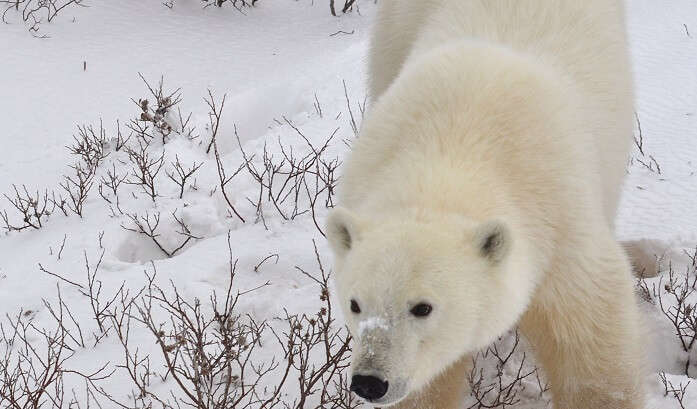
Churchill is one of the best places to visit in Canada places to visit in Canada during winter for those who enjoy the peace of winters. The highlight of this small town located on the shores of Hudson Bay is polar bears and Northern Lights. Get a chance to see the powerful polar bears in the wild.
Tourist Attractions: Polar bears, seasonal bird watching and chance for wintertime Northern Lights visibility Best Place To Stay: Iceberg Inn Things To Do:
- Play with curious Beluga Whales
- Watch the Northern Lights dance
- View polar bears in the wild
Suggested Read: 10 Vancouver Hotels For Luxury And Budget Travelers
4. Vancouver: Explore Local Seafood

Popularly known for its physical beauty, Vancouver is one of the best winter places to visit in Canada . The gorgeous city is famous for being one of the world’s most liveable cities. It is a great place to get away if you’re looking for a break from the snow right here in Canada. Have the best shopping and dining experience as well as visit renowned museums.
Tourist Attractions: Local seafood, shopping experience, outdoor sport and adventure Best Place To Stay: Fairmont Hotel Vancouver Things To Do In Vancouver :
- Try local seafood
- Indulge in outdoor recreational sports
- Build an igloo
5. Ontario: The Dazzling Niagara Falls

Image Credit: 70154 by Pixabay
While the humongous falls are an absolute delight in summers, the frozen falls in Canada winter look equally bewitching. The sheer beauty of the frozen falls is difficult to express in the words. A spectacular dazzler is as close as you can come to describe the mystical falls in the winter. You can see the chilling mist rising above the falls looks so mystical. It is definitely one of the best places to visit in Canada in winter. But, Niagara fall is not the only attraction that the city has to offer, you can explore one of the gorgeous places to visit in Ontario in winter at Algonquin Provincial Park, a sightseeing attraction of hazy mountains with a background of dense forest.
Tourist Attractions : An ice-wine festival is organized every year in Niagara town which you ought to attend if you like sweet dessert-style wine. Best Places To Stay: The Inn At Cobble Beach Things To Do:
- See the Capital
- Drink the wine
- Hike a trail
Suggested Read: Museums In Vancouver: An Encounter With The Past Of The Seaside City!
6. Charlottetown: The Winter Wonderland
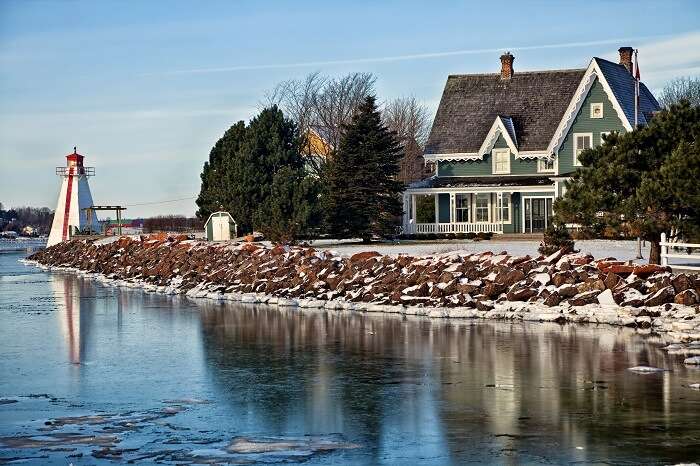
Despite being the smallest province in the country, this city situated in the Prince Edward Island is one of the best places to visit in Canada in winter . From cozy places for staying to fun things to do in Canada in winter, this place lets you make the most of the colder months.
Tourist Attractions: Enjoy tobogganing and snowshoeing in Brookvale Winter Activity Park, a fun destination for families. Best Place To Stay: The Holman Grand Hotel Things To Do:
- Ice skating
- Snowshoeing
- Downhill skiing
- Building a snow fort
- Attending the music week
7. Halifax: For Maple Treats

Situated in Nova Scotia, this city is another top place to visit for enjoying the Canada winter . Be it indulging in a sleigh ride at Hatfield Farm or tobogganing on the Citadel Hill, there’s a lot to do and see in the city irrespective of how low the temperature drops. Nova Scotia is also a place that offers mountaineering in Canada .
Tourist Attractions : Halifax is famous for maple syrup and other treats. Enjoy a delicious brunch made of sweet Maple syrup and taa hikeike in the woods afterwards. Best Place To Stay: The Prince George Hotel Things To Do:
- Eat at the Brooklyn Warehouse
- Indulge in downhill skiing at Ski Martock
- Explore the Point Pleasant Park
Suggested Read: Temples in Canada: 9 Places That Are A Testament To This Country’s Diverse Culture
8. Newfoundland: Labrador For Unique Experiences
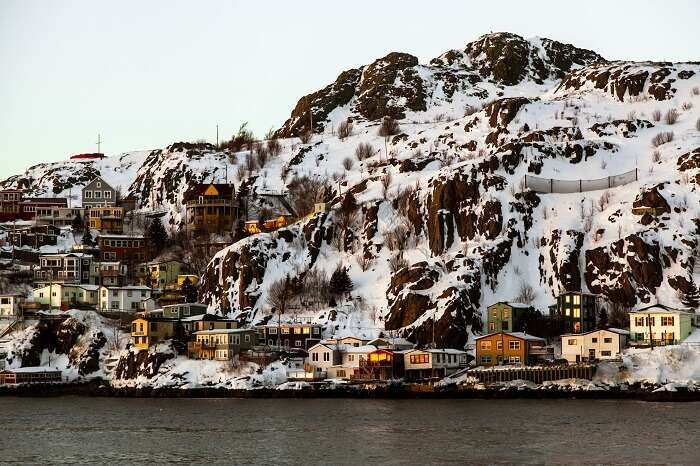
The Marble Mountain is what makes Newfoundland a perfect place to visit for your winter vacations in Canada . From offering the best of Canada winter sports in the eastern region to spectacular views, every day here is packed with unique experiences. This is amongst the best places to visit in Canada in winter.
Tourist Attractions : Spend a week at Gros Morne National Park which has more than 50 km of skiing trails and is considered to be one of the best all year round park in Canada. Best Place To Stay: Fogo Island Inn Things To Do:
- Indulge in snowmobiling
- Cross country skiing
- Snowboarding
9. Toronto: For One-Of-Its-Kind Experiences
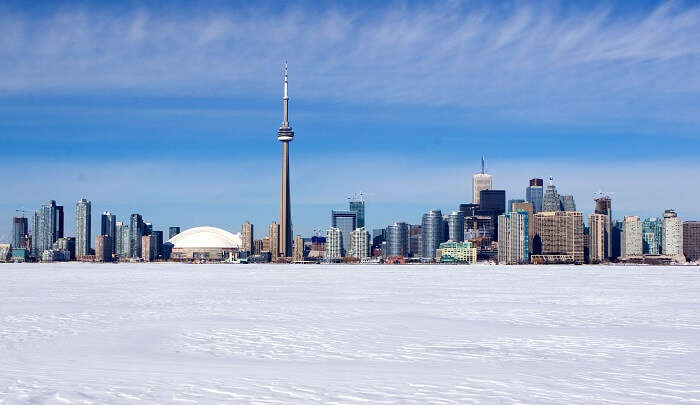
If you embrace the winter season as much as the country does, then Toronto is the best to visit in Canada in winter . The long, cold days and nights can be best enjoyed here by indulging in one-of-its-kind experiences like fat biking, taking a tour of the trails in the Don Valley, or witnessing the icebreaker installations at the waterfront. You can visit Casa Loma, one of the famous places to visit in winter in Toronto that offers a castle-structured mansion in the heart of the city.
Tourist Attractions : Toronto hosts a food festival called Winterlicious where you can treat yourself with winter gourmet delights, definitely one of the best things to do in Canada in winter. Best Place To Stay: The Ritz Carlton Things To Do In Toronto :
- Be a part of Winterlicious – the best food festival
- Attend a game of hockey
- Indulge in skiing and ice skating
Suggested Read: Festivals Of Canada: 10 Unmissable Extravaganzas That Will Give Celebration A New Meaning!
10. Grouse Mountain: For An Incredible Winter
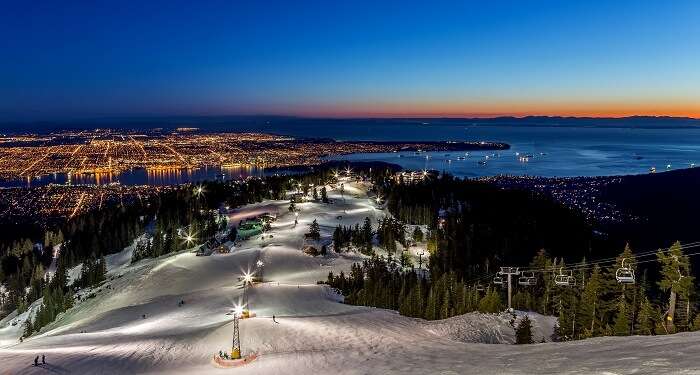
Of all the places to visit in Canada in December , Grouse Mountain in British Columbia is absolutely worth visiting. Winter in Canada not only takes you away from the crowd but also lets you have an incredible time in the snow with your loved ones!
Tourist Attractions : Watch movies at Peak’s Chalet Theatre in the Sky after you have experienced the exhilarating winter activities.
Best Place To Stay: Grouse Mountain Lodge Things To Do:
- Mountain ziplining
- Mountain-top skating
11. Calgary: To Experience The Mystical Winters
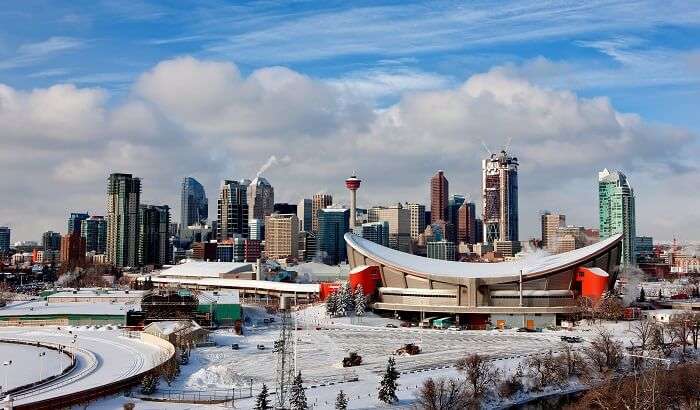
To see what magic looks like, you need to visit Calgary in Alberta during the winter months. Being one of the best places to visit in Canada during winter, it makes your holiday a little less of a cliche by offering fun experiences like ice fishing and cross-country skiing. Irrespective of whom you visit here with, you’re sure in for a great time at one of the best places to visit in Canada in winter.
Tourist Attractions : Visit the Fish Creek National Park, a free winter destination in Calgary, and track and guess the foot prints in the snow. Best Place To Stay: Hyatt Regency Calgary Things To Do In Calgary :
- Dog sledding around the city
- Visit the Banff National Park
- Cross-country skiing
- Ice fishing
Suggested Read: Canada Travel Tips: For A Perfect Holiday In The Largest Country Of North America
12. Quebec City: Stay In An Igloo
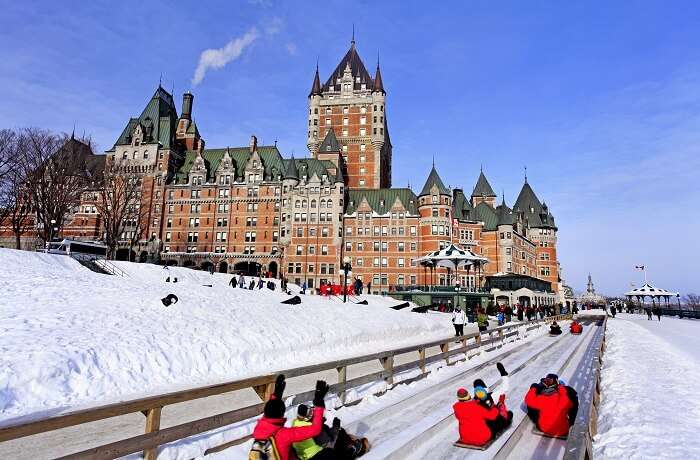
Are you still confused where to visit in Canada during winter to enjoy the snow activities? Then, visit the Quebec City to take part in the snow baths, ice canoe races, have a luxurious stay in an igloo, and the famous Quebec Winter Festival which makes this city a prime choice for experiencing the Canada winter at its best. If not with family or friends, you must definitely consider visiting here with your partner!
Tourist Attractions: Celebrate the ‘Quebec Winter Carnival’ and make massive snow sculptures. Also, check out the Ice Hotel carved entirely out of ice and decorated with neon lights. Best Place To Stay: Hotel de Glace Things To Do:
- Attend the Quebec Winter Carnival
- Indulge in snowsliding
- Stay in the ice hotel
13. Winnipeg: Enjoy Skating At The Forks
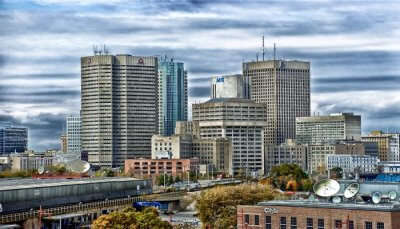
Image Credit: 12019 by Pixabay
From letting you party outside like a Voyageur, and skating on the longest naturally frozen trail to warming up indoors, Winnipeg is the best place for enjoying your Canada winter holidays . When here, make sure you also visit attractions like FortWhyte Alive and The Forks!
Tourist Attractions: Enjoy Thermea, an open-air Scandinavian spa in the forests of Fort Garry, just 10-minutes drive away from the city. Best Place To Stay: Delta Hotels by Marriott Winnipeg Things To Do:
- Attend the Festival du Voyageur
- Go for skating at The Forks
- Enjoy a bonfire at FortWhyte Alive
- Visit the Assiniboine Park Zoo
Suggested Read: Hanging Hotel In Canada: Free Spirit Spheres Are Here To Satiate The Wanderlust Of Free Souls!
14. Ottawa: Indulge In Winter Camping

Boasting the largest outdoor skating rink in the world, Ottawa is amongst the best places to visit in Canada in December , and a paradise for people who love Canada winter. After skating for long hours on the Rideau Canal, you can explore the city and end the day on a warm note by dining at any of its gorgeous restaurants. There are a lot of guest houses in Ottawa wherein you can enjoy your stay; comfortably and affordably.
Tourist Attractions: Enjoy gorging on ‘beavertails’, a local delectable treat which has become an addiction for Canadians, even President Obama couldn’t resist. Best Place To Stay: Fairmont Chateau Laurier Things To Do In Ottawa :
- Go for skating on the Rideau Canal
- Visit the Gatineau Park for cross country skiing
- Indulge in winter camping
15. Whistler: Go Ice Climbing And Skating
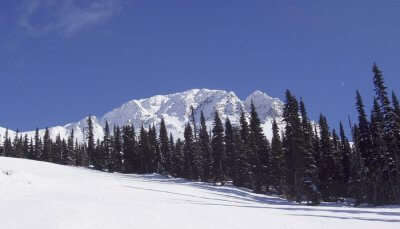
Image Credit: ArtTower by Pixabay
This winter wonderland is the ideal place to visit, especially with your family if you wish to experience the best winter vacations in Canada . Situated in British Columbia, this ski capital of the country offers more fun adventures than just skiing, and cuts down the confusion of ‘ where to go in Canada in December ‘.
Tourist Attractions: Embark on the Peak 2 Peak Experience where you will get to witness numerous famous peaks from a prime spot. Best Place To Stay: Four Seasons Resort and Residences Whistler Things To Do:
- Dog sledding
- Ice climbing, and Ice-skating
- Snowmobiling, and snowshoeing
- Sleigh rides, and Ice fishing
Tips For Visiting Canada In Winter

- Pack a pair of gloves, jackets, a warm cap, a woolen scarf, and sturdy shoes
- Make sure you pack clothes, keeping your trip itinerary or activities in mind
- Pack a good moisturizer, lip balm, and sunscreen to keep your skin hydrated
- Keep a regular check on the weather forecast while leaving for Canada, and even when you’re traveling in the country from one place to another
- Wear multiple layers of clothing so that it’s easy to adjust to the change in temperature
- Make sure you don’t skip your meals, especially your breakfast
Further Read: 12 Honeymoon Places In December In India: Top Mountains, Beaches
Excited to have fun in the snow already? Unfortunately, you will have to wait for a few months more. Until then, have a look at the best places to visit in Canada in winter for an absolutely thrilling international holiday. Plan a trip to Canada and have the best time of your life.
For our editorial codes of conduct and copyright disclaimer, please click here .
Please Note: Any information published by TravelTriangle in any form of content is not intended to be a substitute for any kind of medical advice, and one must not take any action before consulting a professional medical expert of their own choice.
Frequently Asked Questions About Canada In Winter
How long are winters in Canada?
Usually winter weather in Canada begins from November and goes all the way through to late March or early April. Usually, winter seasons can last between 3-6 months with December and January being the coldest months.
Where should I go for a Christmas vacation in Canada?
Toronto, Quebec, Montreal, and Vancouver are some of the best places to spend Christmas in Canada.
Which cities in Canada are not too cold?
Victoria, Vancouver, Toronto, Abbotsford, and Halifax are some of the cities in Canada that have fewest frozen days and are relatively less cold than the other cities.
What you need to survive a winter in Canada?
Here are a few survival tips for winters in Canada: 1. Dress in layers- Start with a base layer like thermal leggings and wear snow pants on top of them 2. Cover your entire body including your face 3. Don’t stay outside for too long 4. Check the weather forecast 5. Make proper arrangements for staying warm indoors
Which city in Canada is the coldest?
Winnipeg is the coldest Canada’s city where most often temperature drops to -30 degrees Celsius (-22 degrees Fahrenheit) or below and it is least likely to have a day above freezing during winter.
What is the best time of year to go to Canada?
In many ways, the fall months, particularly September and October, are the best time to travel, as the weather is frequently very pleasant, the crowds have dispersed, and accommodation prices are lower than summer. If you are looking for value, spring is another good time to visit Canada.
Which are some fun places to visit near Toronto this winter?
Harrison Park for ice skating, Atelier Arboreal for winter camping in a tipi, and Georgian Hills Vineyards for a snowshoe tour are some of the fun places to visit in and around the city this winter.
Which are the best places to visit in Canada in winter with family?
Whistler and Quebec City are the best places to holiday in Canada in winter with family. Both these places offer adventure-packed experiences that are enough to make it the most memorable vacation.
Which Canadian cities worth visiting in winter?
In Canada, Victoria, British Columbia is the best city to explore during winters where the average temperature is around 10 degrees Celcius.
Which province is best to visit in Canada in winter?
Toronto is one of the best city to visit in Canada in winter that offers loads of snow activities along with prominent landmarks.
What is the warmest province in Canada in winter?
Victoria, British Columbia is the warmest city in Canada that usually have 10-degree celsius temperature on an average and goes lowest to 4 degree celsius.
People also read :
Places To Visit In Winter In India Places To Visit In Europe In Winter Places To Visit In France In Winter
Recent Posts

Must See Rivers in Vietnam For A Complete Vietnamese Experience

Picnic Spots In Surat: Escape From The City Noises And Pamper Yourself With Stunning Destinations

5 Must-Visit Destinations On The Delhi To Udaipur Road Trip
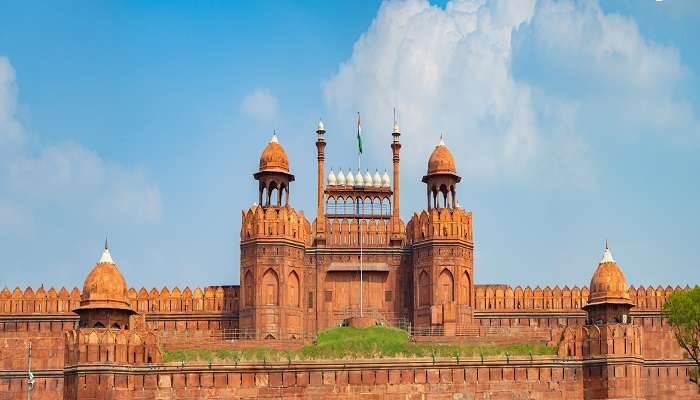
Top 10 Places To Visit Near Red Fort Delhi Within 200 Km
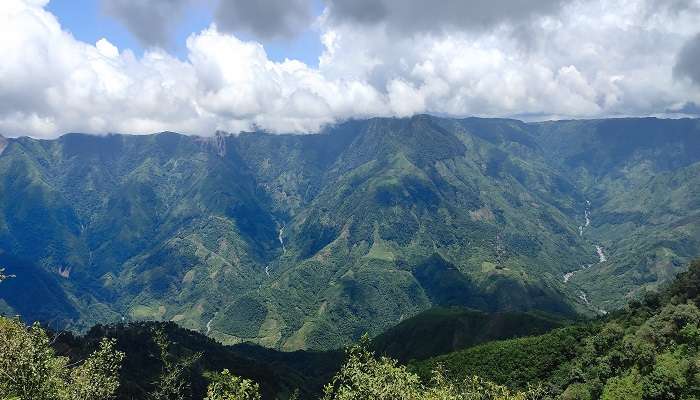
Picnic Spots In Meghalaya: Absolute Paradise For Unwinding During Weekends

Offbeat Places In North Goa That Are Worth Visiting For A Wholesome Travel Experience
Trending Blogs

20 Mysterious Places In India To Visit In 2023 More Bizarre Than The Bermuda Triangle

10 Scariest Roads In India That Are A Driver’s Nightmare

101 Places To Visit In India Before You Turn 30 in 2024

35 Exotic Places To Visit In December In India 2024 To Enjoy A Surreal Vacation

60 Best Honeymoon Destinations In India In 2024

95 Best Honeymoon Destinations In The World In 2023 For A Romantic Escape!
Best Places To Visit In India By Month
Best places to visit outside india by month.
- TravelTriangle
- International
- Winter Travel »
- Tour Packages
- Honeymoon Packages
- Family Packages
- Budget Tour Packages
- Luxury Tour Packages
- Adventure Tour Packages
- Group Tour Packages
- Maldives Tour Packages
- Bali Tour Packages
- Dubai Tour Packages
- Singapore Tour Packages
- Thailand Tour Packages
- Europe Tour Packages
- Sri Lanka Tour Packages
- Tour Packages From Delhi
- Tour Packages From Mumbai
- Tour Packages From Bangalore
- Tour Packages From Chennai
- Tour Packages From Kolkata
- Tour Packages From Hyderabad
- Tour Packages From Ahmedabad
- Thailand Tourism
- Bali Tourism
- Singapore Tourism
- Maldives Tourism
- Mauritius Tourism
- Dubai Tourism
- Europe Tourism
- Hotels in Thailand
- Hotels in Maldives
- Hotels in Mauritius
- Hotels in Bali
- Hotels in Dubai
- Hotels in Singapore
- Hotels in Sri Lanka

Canada travel requirements 2024: What travelers need to know
We aim to keep this post updated about Canada travel in 2024 with official Canada travel restrictions, requirements, and health and safety guidance. Our goal is to help you make informed decisions so you can travel confidently, safely, and responsibly in this new post-pandemic world of ours.
As restrictions vary based on the traveler’s citizenship, we will focus primarily on rules affecting U.S. citizens.
Last update: January 28, 2024. Originally published: September 2021.
Disclosure: This post contains some affiliate links. If you make a purchase through one of our links, we may receive a small commission, at no additional cost to you.
Photo credit: Kelly January 2024: “Canada is an extremely diverse and safe Country to visit at all times of the year. Travel and daily life is back to normal, however, many employees continue to work remotely and employers continue to have a difficult time finding staff If travellers fall ill while visiting Canada, there are plenty of walk-in clinics and emergency rooms in every Canadian city, making healthcare easily accessible. However, it is still wise for travellers to purchase health insurance prior to visiting.” – Kelly of Just One Passport , resident of Canada
At the end of the post, we share more on-the-ground perspectives from local residents and travelers to Canada so you can get a true sense of what to expect.
Table of Contents
Is Canada open for travel? Can I travel to Canada right now?
As of October 2022, Canada travel restrictions for all travelers entering Canada by air, land or sea include:
- Proof of COVID-19 vaccination is not required
- COVID-19 pre-entry and arrival tests are not required
- Quarantine is not required
- ArriveCAN is not required
- Pre-boarding tests for cruise passengers are not required
- Health checks to board planes and trains are not required
- Wearing masks on planes and trains is not required but strongly recommended
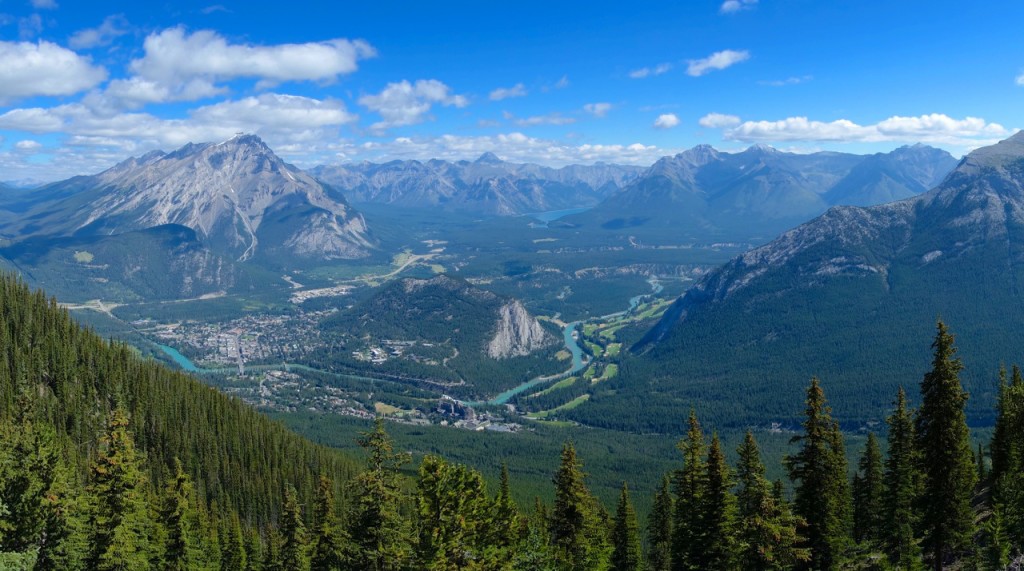
Quarantine rules in Canada: What happens if I get Covid?
Foreign tourists who test positive for Covid while in Canada should self-isolate immediately. Travelers may be required to cover costs of quarantine accommodations.
Those with severe symptoms are advised to call 911 or the local emergency number in Canada.
Canada Proof of Vaccination Requirements for Dining, Travel, and other services
You might be wondering: Do I need a vaccine certificate or Covid test to enter restaurants, public transit, and other services in Canada?
As of June 2022, proof of vaccination is no longer required to board a plane, train or cruise ship when traveling within Canada. Generally it is not required to enter businesses or restaurants.
Each province or territory has the authority to require a proof of vaccination each situation.
Can I travel to Canada in May 2024? Can I travel to Canada this Summer?
Travel to Canada in May is possible for foreign travelers. Read on for details and check back for updates.
What is it like to fly to Canada right now? YYZ Toronto Pearson International Airport? YVR Vancouver International Airport? Masks are no longer required but still strongly recommended. The airports are using enhanced cleaning procedures and hand sanitizer is available throughout the terminals.
As of October 2022 , all persons arriving in Canada will no longer be subject to randomized testing at airports .
Using ArriveCAN is now optional for travelers flying into international airports to submit an Advance CBSA Declaration to save time upon arrival in airports like Toronto, Vancouver or Montréal.
What is it like to drive into Canada right now? Travelers can enter Canada during open hours at land borders . Required documents must be shown at the border.
Check Canada-US border wait times here.
Do I have to quarantine when traveling to Canada? No. Quarantine upon arrival is no longer required in Canada. Persons who test positive for Covid in Canada are asked to quarantine. See above for details.
Does Canada check COVID-19 symptoms of incoming travelers? No. Health screening procedures are no longer required to enter Canada.
Does Canada require a negative Covid 19 test for travelers? No. Covid pre-entry tests and arrival tests are no longer required.
Does Canada require a proof of Coronavirus vaccine for travelers? No . Proof of vaccination is no longer required in Canada.
Do I still need to provide a negative Covid test or quarantine if I have been vaccinated? No. Travelers are no longer required to provide a negative Covid test or quarantine to enter Canada.
Is a booster shot required for travel to Canada? At this time, booster shots are not required in Canada. There is currently no expiration period set for the validity of vaccinations.
What Covid testing options are available for travelers in Canada? U.S. citizens can obtain a COVID-19 test from provincial health authorities or private facilities in Canada.
The cost for private testing varies depending on the location and can exceed $300. Rapid tests for $60 with results in 30 minutes are available by appointment near Toronto Airport .
What healthcare options are available to travelers in Canada who get the virus? Canada hospitals and clinics are open. Canada’s universal healthcare does not pay for visitors.
Testing centers are also available for foreign visitors in some provinces and territories in Canada.
For travel insurance that covers Covid, check out Nomad Insurance by Safety Wing >
What service businesses and restaurants are open in Canada? Essential services, restaurants, bars, and retail shops are open in Canada. Some limitations, such as proof of vaccination requirement, may still be implemented in some provinces.
Check here for restrictions in each province.
Are face masks required in Canada? Wearing of face masks is no longer required in Canada but still recommended.
Are buses running in Canada? Public transportation is available throughout Canada.
Will Canada impose new Covid restrictions? What’s next is difficult to predict. Historically, most countries impose COVID-19 restrictions when strains on the health care system might become unsustainable. Canada has been relatively proactive and “strict” on preventive Covid measures.
How has the Coronavirus impacted Canada?
The coronavirus pandemic has caused a recession and increased unemployment in Canada. Tourism was hit especially hard.
Canada experienced a surge in cases with the Omicron variant. Many provinces reintroduced restrictions. As the situation came under control, Canada started easing travel restrictions.
As of October 2022, Canada ended all travel, testing, and border requirements and restrictions related to COVID-19.
Canada initially started reopening for tourism in summer 2021. As of September 2021, fully vaccinated foreign travelers have been allowed to visit the country without undergoing quarantine.
Canada began COVID-19 vaccination in December 2020. Currently, more than 3/4 of the total population has been fully vaccinated.
For the current situation in Canada, including: total COVID-19 positive cases; total cases in Canada; and COVID-19 testing in Canada, please see the Government of Canada website .
What should you pack for safely traveling in Canada?
😷 Face Masks – Face coverings are recommended in crowded public places. Find N95 masks at Bona Fide > or designer options at Vida >
💊 Medicine – Bring enough prescription and over-the-counter medication for your entire trip to avoid trips to the clinic.
💳 Vaccine Card Holder – Protect that paper CDC card when traveling abroad (if your country doesn’t offer a digital version). Get a simple plastic protector > or Vegan leather clippable > or Leather passport + card combo holder >
👃 Covid self-test – The most studied rapid antigen self-test with FDA emergency authorization. NOT valid to enter countries. Use for your own peace of mind. Order from CVS > or Walmart >
💧 Sealed water bottle – Make sure your reusable water bottle has a lid that’s not exposed to the air. We use one of each of the following: Shop insulated water bottles with protective lid > Shop water bottles with purification filter and protective lid >
✈️ Travel insurance that covers Covid – We’ve started using Nomad Insurance by Safety Wing for affordable evacuation, international medical, and trip coverage.
What do Canada locals and recent travelers say about visiting Canada now?
What is it like to visit Canada right now? It’s our goal to provide regular updates here from real people on the ground, to help potential visitors know what to expect.
The following are subjective opinions only. Official travel guidance can be found above.
September 2023 – Ryan of WaylessTravelers , Canadian: “The current state of tourism is back to normal, like during pre-Covid times. The multiple summer and fall festivals have returned to Montreal, including F1 weekend, Just for Laughs, Jazz festival etc… Restaurants are also very lively and full.
All the local attractions, restaurants, concerts, malls are back to normal operations. No restrictions (masks/gloves/testing) are imposed.
We do recommend to reserve activities and restaurants ahead of time as we have noticed that they do book up usually a few days in advance. We believe this is because a lot of Canadians are preferring to travel more locally due to still some hesitancy of traveling abroad.”
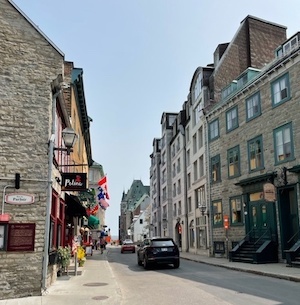
May 2023 – Nick Rosen of The World Overload , American visitor: “I flew to Quebec City and Montreal for a one week vacation in May 2023. There are currently no travel restrictions but some locals and visitors continue to follow Covid guidelines including masks and safe distances. There is easy access to healthcare and testing.
All attractions and food services continue to operate for tourism. Hours may vary depending on day/weekend. Please check ahead when scheduling. Be aware that summer is the time when most construction and repairs are done by the cities you will be visiting.”
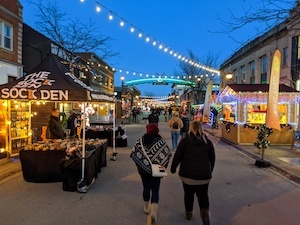
January 2023 – Melissa from My Beautiful Passport , Canadian: “Tourism in Ontario is picking up overall, with most events & festivals resuming in 2023, if they didn’t already resume in 2022.
Canada appears ready to welcome tourists back into the country. Niagara Falls and other popular Canadian destinations are lively, restaurants and attractions are open, and people are ready to explore again, wearing masks indoors as encouraged. Hospitals are not currently overwhelmed.”
September 2022 – Michelle, Intentional Travelers, US citizen: “We flew from the US to Canada for a conference in Montreal, Quebec. I submitted our ArriveCAN information a couple days before the flight using the website. It was pretty simple to input our passport number, vaccine dates, and upload a photo of our CDC vaccine cards. Then there was a form for trip details. There was a quick Covid self-assessment form asking about fever, cough, or difficulty breathing. Confirmation included a six-digit code and QR code that we printed and brought to the airport.
After all that, we had more online processes to complete for both airlines on our itinerary (United and Air Canada), including uploading our CDC vaccine cards again. Air Canada’s site did not accept our vaccine card image, but it wasn’t a problem, I guess because we had ArriveCAN done.
To board the flight from US to Canada, we only had to show our passport and ticket. On arrival in Montreal, we only ‘flashed’ our ArriveCAN confirmation to an agent on our way to the machines where we scanned our passports and completed immigration questionnaires, which included just one question about having any Covid symptoms, and took a picture. Arriving around midnight, the process took less than 15 minutes.
We were fortunate all our bags arrived. The baggage claim looked like a luggage graveyard with hundreds of unclaimed suitcases everywhere!”
May 2022 – Mayuri of Canada Crossroads , Canadian resident: “In my province (Alberta, home to the Canadian Rockies) domestic tourism has been flourishing. All the sightseeing spots are open, but some have restricted hours.
Since February (in Alberta, and from April nationwide) things are open, no restrictions in terms of social distancing, masking, access to medical care, restaurants, stores and hotels. In fact many airports are busier than usual (including the country’s busiest Toronto airport – just flew last week). I feel we need to be a little more prepared for summer tourism as many international visitors are wanting to explore Canada.”
March 9, 2022 – Samantha of Continuous Roamer , Canadian resident: “Domestic travel in Canada is straightforward since there are no extra requirements once you have entered the country. However, mask wearing is necessary and some provinces still require a vaccine passport.
The vaccine passport has been removed in Ontario in March. Capacity in Ontario restaurants is now at 100% so it is easier to get a table. Although, free antigen covid tests are extremely difficult to access at pharmacies in Ontario. British Columbia still requires the vaccine passport, therefore lines are longer to enter some establishments while your pass and ID are checked.”
January 20, 2022 – Haley Blackall Travel , Digital Nomad: “My partner and I visited family and worked online in Kelowna BC for 2.5 months from mid-November 2022 to end of January 2022. Tourism in this region of Canada is low, due to winter conditions especially for international visitors. Make sure you have all the required documentation upon arrival, because airline personnel are doing proper checks. If you arrive in Canada from an international destination and are unvaccinated, there is a smooth running process for a mandatory Covid-19 test at the airport upon arrival, and the ArriveCAN app is easy to navigate in which the government keeps a close eye on contact tracing and quarantine requirements. Canadians have quick access to healthcare, including testing for antigen and PCR. After restaurants offering takeout and delivery services only at the beginning of the pandemic, dining in is becoming more popular. Besides the use of masks, life is getting back to normal in Canada.”
January 2022 – Mary from Brbymary, French traveler: “I flew to Vancouver for a week [from Ireland] to visit my partner’s family. Everything was well organised through ArriveCan app. Testing at the airport was easy although a bit behind and people respected rules in general. Plan some additional time to do tests at the airport and to do tests on arrival even if you have an appointment.”
December 2021 – Federica of Globetrottoise , Canadian nomad: “I would say Canada is a pretty safe destination at the moment, especially outside the big cities. I’ve been road tripping around the Yukon, British Columbia and Alberta in the past few months and always felt safe and able to enjoy most attractions, from museums to national parks. Canada is open to vaccinated travellers only and health regulations are in place in most public places. Masks are mandatory inside almost everywhere and in some provinces the access to cafes restaurants, movie theaters, libraries, etc is possible only with a valid proof of vaccination. Attractions are mostly open everywhere and access to covid testing is pretty easy (but quite pricey).”
November 12, 2021 – Nicole of Traveling BC , Canadian citizen: “While businesses are still operating under restrictions, in general, many rules have lifted and now it’s ‘full steam ahead’ in the tourism industry. Some touristy areas (the coasts and the Rockies) even became quite busy over the summer, since everyone wanted to go on a much-needed vacation. If you visit, you’ll have to show a negative COVID test and be required to wear a mask, socially distance, and show your vaccination passport!
Most people and businesses follow the restrictions and around 75% of people are fully vaccinated, although compliance with restrictions and vaccinations varies between provinces and cities. Accessing COVID testing is easy and quick, although you’ll have to pay for the test if you’re traveling. A lot of healthcare has moved to online appointments, and some hospitals are still overwhelmed in areas with lots of COVID cases. Businesses are open to tourists, but many operate under reduced hours, lower capacities and may have halted certain services/activities due to COVID. You will often have to book activities online or by phone, and make sure to wear a mask and bring proof of vaccination, or businesses will deny you entry.”
November 2021 – Chris, American digital nomad: “I flew to Newfoundland for one month in October and November of 2021. Everything seems to be open again, though every place where you would take off a mask (such as a restaurant) requires you to show proof of vaccination. People seem very respectful and friendly, happy to show you around. There is voluntary contact tracing check-ins at a lot of locations. There don’t seem to be long lines anywhere. Testing is free and readily available.”
October 9, 2021 – Nicole, Go Far Grow Close , Vancouver BC, Canadian resident: “Visitors are very much welcome. There are strict regulations for visitors to enter Canada (fully vaccinated) so we know that they are as safe or safer than the locals. So long as they follow the rules – wear masks indoors – no one cares. I feel that we are very travel ready in Canada. If you feel ill, there are free drive through covid testing sites. Hospitals are available. Local attractions, food services, and all amenities are open so long as you wear masks indoors (or when you get up in a restaurant), social distance and follow whatever other rules might be in place. Restaurants are still not at full capacity but getting there. Movie theatres are open. We eat out regularly, go to movies, and do not feel restricted.”
September 2021 – Kathy, American traveler: “We planned to spend two months in British Columbia, Canada. We had to show proof of vaccination and have a negative COVID test within 72 hours of crossing. We managed to get a test at a local CVS pharmacy (for free) and got our results in about 36 hours. Whew! There is another place to get a test in Seattle with guaranteed results but they cost $165 each. We also had to go to the website ArrivCan.com and answer questions and download our vaccine cards. Finally, in the early morning hours of August 9th we arrived at the Canadian Border just south of Vancouver, BC at around 4:30 a.m. There were approximately 20 cars/trucks in two lines. Unfortunately, the line we picked took forever so when it finally turned 6:00 a.m. another agent opened a new gate and we were there and across the border in about 10 minutes. We have now been in BC Canada for over a month. There are very few U.S. citizens here but lots of traveling Canadians. In fact, their COVID numbers have spiked so it is now a requirement to wear masks in stores/grocery stores and entering and leaving restaurants. No problem. We feel safe doing that and know that even though there is some resistance, most Canadians are fully vaccinated. In fact, as of August 13th restaurants and bars and other certain businesses now require that people show proof of vaccination to enter. I am in complete support. We feel grateful we were able to spend some of our summer in this beautiful country.”
Planning a trip to Canada?
Check out our other Canada travel resources: – The Scenic Route: Kelowna to Banff – The Best of Banff on a Budget – Kelowna: British Columbia’s Hidden Gem – Montreal, Quebec Summer Trip Guide
– 5 Awesome Things to Do in Vancouver, BC in Summer
If you have questions or updates about travel to Canada during the Coronavirus crisis or post-pandemic, please let us know in the comments below.
~ Pin this post for later or share with friends ~
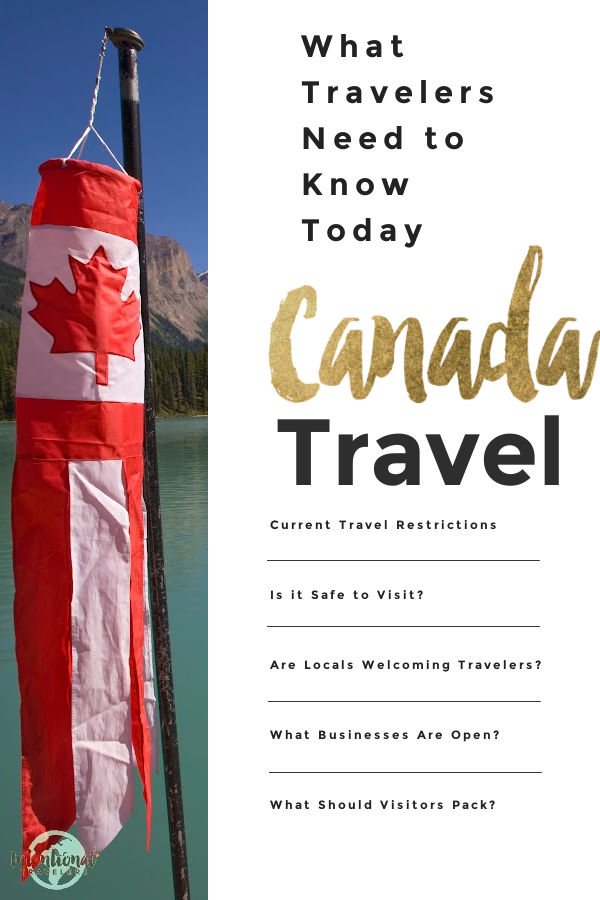
Disclaimer: Please note, travel restrictions change frequently. Readers must take responsibility for verifying information through official sources like the State Department and CDC, in respect to their specific situations. No responsibility can be accepted by Intentional Travelers for action or inaction as a result of information provided through IntentionalTravelers.com. Any information provided here is issued as general information only.
Similar Posts
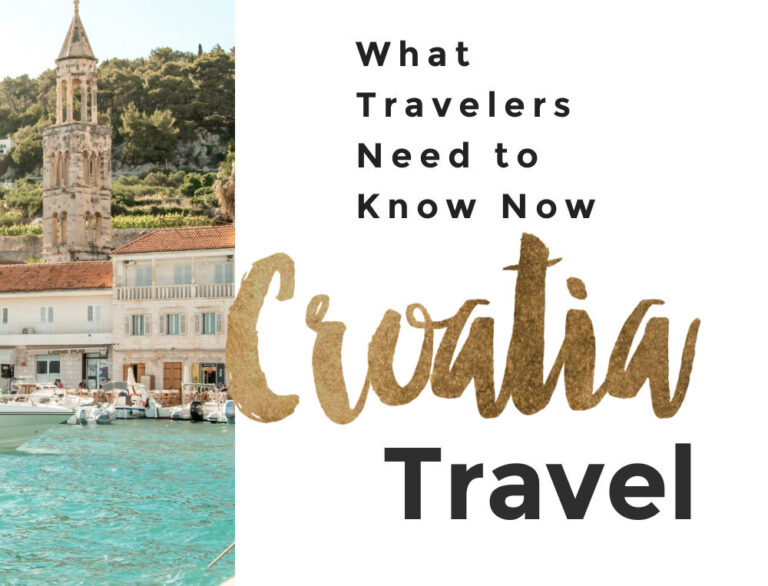
Croatia travel requirements 2024: What travelers need to know
We aim to keep this post updated about Croatia travel in 2024 with official Croatia travel restrictions, requirements, and health and safety guidance. Our goal is to help you make informed decisions so you can travel confidently, safely, and responsibly in this new post-pandemic world of ours. We lived and worked from Croatia in winter…

Should I reschedule my trip in 2022?
Should I cancel my 2022 trip? Should I reschedule my 2022 travel plans? Ever since we created our regularly-updated pandemic travel articles for certain destinations, I have received questions like these from readers again and again. In this post, I’ll share my answer – which applies regardless of the destination – as well as our…
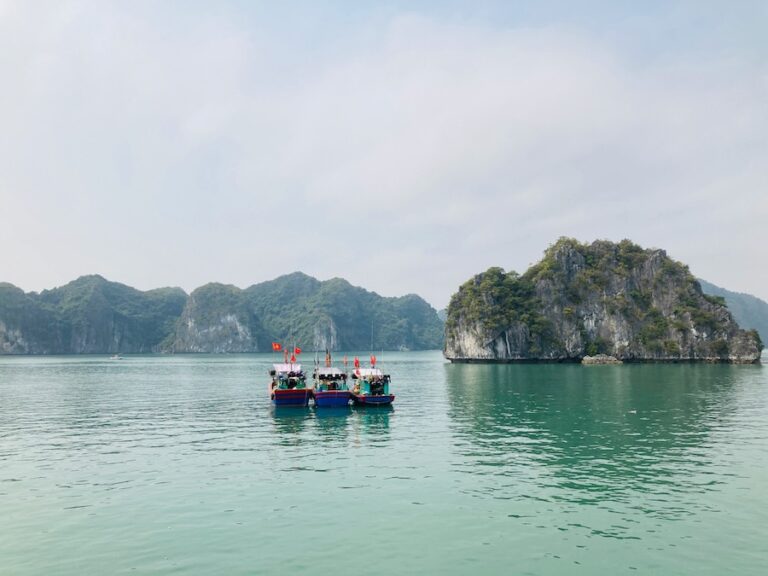
Cat Ba Island – Lan Ha – HaLong Bay Cruise Review + Tips
What is the best value for your money and time on a HaLong Bay cruise? These are our tips and full HaLong Bay cruise review to help you make the best choice. In this post, we share what we learned from our experience on Venezia Cruises 3-day 2-night Lan Ha Bay itinerary and from extensive research…
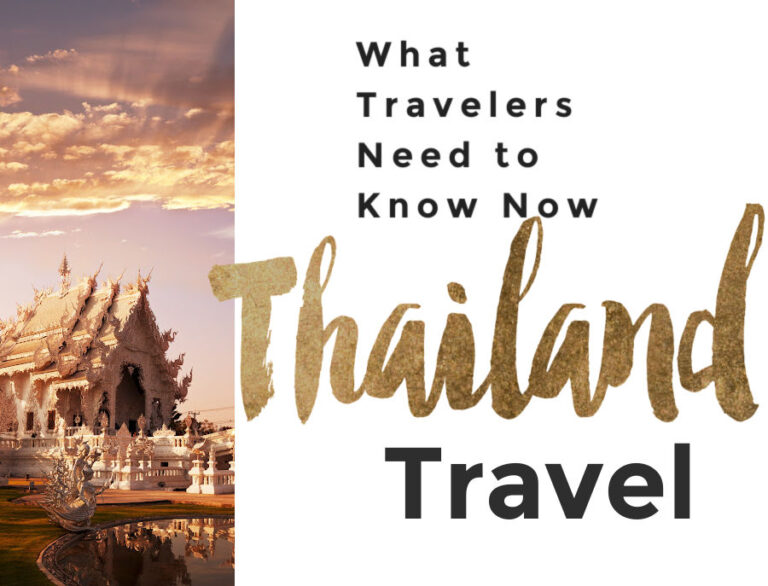
Thailand travel requirements 2024: What travelers need to know
We aim to keep this post updated about Thailand travel in 2024 with official Thailand travel restrictions, requirements, and health and safety guidance. Our goal is to help you make informed decisions so you can travel confidently, safely, and responsibly in this new post-pandemic world of ours. Since travel restrictions can vary by citizenship, we…
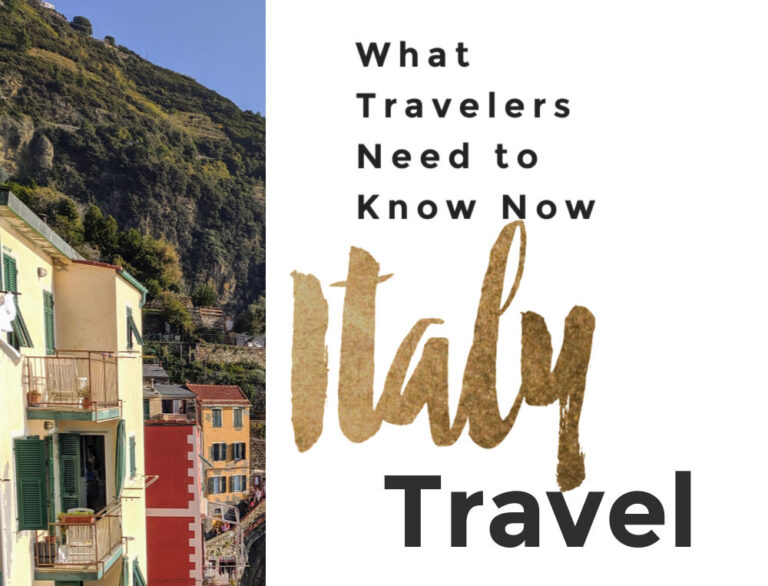
Italy travel requirements 2024: What travelers need to know
We aim to keep this post updated about Italy travel in 2024 with official Italy travel restrictions, requirements, and health and safety guidance. Our goal is to help you make informed decisions so you can travel confidently, safely, and responsibly in this new post-pandemic world of ours. Italy has a special place in our hearts,…
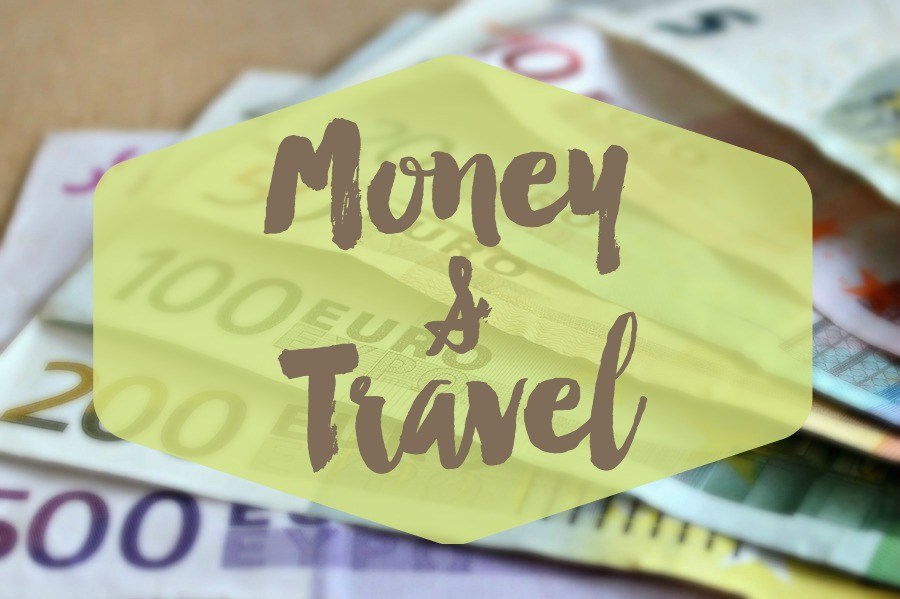
Unofficial Guide to Cash, Credit Cards, and ATMs for International Travel
How much money should I bring when I travel? Should I exchange currency before I go overseas? What’s the best way to carry cash when I’m abroad? What ATM cards or credit cards are best for international travel? In this post, we’ve put together our best tips for money and travel. Note: These tips are…
Canada is still requiring a negative covid test 72 hours before embarkation when on a cruise ship entering any Canadian ports. This has not been changed. The change is for land ,and air and sea other than a cruise ship
Thank you for this clarification. We have updated our post to better reflect requirements for cruise ships.
Leave a Reply Cancel reply
Your email address will not be published. Required fields are marked *
This site uses Akismet to reduce spam. Learn how your comment data is processed .

- Skip to main content
- Skip to "About this site"
Language selection
- Français
- Search and menus
Search The Daily
Travel between canada and other countries, january 2022, archived content.
Information identified as archived is provided for reference, research or recordkeeping purposes. It is not subject to the Government of Canada Web Standards and has not been altered or updated since it was archived. Please " contact us " to request a format other than those available.
This page has been archived on the Web.
Released: 2022-03-23
January 2022

(12-month change)
The number of international arrivals to Canada increased year over year in January 2022, but remained well below levels before the COVID -1 9 pandemic.
While residents of overseas countries made more than twice the trips to Canada in January 2022 than in January 2021, it was under one-quarter (21.8%) of the number of trips recorded in January 2020.
Likewise, US residents made two and a half times more trips in January 2022 compared with the same month in January 2021, yet less than one-fifth (18.2%) of those in January 2020.
Compared with the same month in 2021, Canadians made almost three times the number of trips home from visiting abroad in January 2022, but this was just over one-quarter (26.0%) of the number of trips recorded in January 2020.
Border restrictions return
In late November 2021, the World Health Organization declared a new variant of concern, Omicron, prompting Canada to re-implement some travel restrictions. On December 15, the Government of Canada advised Canadians to avoid non-essential travel outside Canada and, on December 21, required all travellers entering Canada to provide a negative COVID -1 9 molecular test.
As of January 15, 2022, certain groups of foreign nationals who had been exempt from this requirement must be fully vaccinated to enter Canada. This includes essential service providers, such as truck drivers, as well as individuals travelling to reunite with family.
Overseas visitors up in January
The number of residents arriving in Canada from overseas countries was 79,700 in January 2022. While more than two times the number in January 2021, it was still less than one-quarter (21.8%) of overseas residents who entered Canada during the same month in 2020.
The number of visitors from Canada's major markets increased with European visitors jumping from 10,800 in January 2021 to 33,400 in January 2022 and those from Asia increasing from 13,600 to 18,900 over the same period. Both remained below January 2020, before the pandemic, as did arrivals from other overseas countries.
More US residents crossing into Canada
In January, US residents took 218,600 trips to Canada, over two and a half times as many as in January 2021 (86,500) but less than one-fifth (18.2%) of the 1.2 million such trips taken in January 2020.
Of the total arrivals in January, 157,300 were by automobile, with just over half (50.6%) same-day returns (79,600), a jump from the total of 73,900 in 2021. However, the January 2022 total was less than one-fifth (18.1%) of the 867,200 such arrivals before the pandemic in January 2020.
Canadian trips to US increasing
Canadian residents returned from 690,200 trips to the United States in January 2022, more than two and a half times the trips in January 2021 (265,000), but far below the 3.1 million such trips in January 2020.
Of the total returning Canadian trips, 422,800 were by automobile, with over half (56.9%) being same-day.
In January, while the number of return air trips by Canadian residents rose more than three and a half times from 2021 to 261,100 in 2022, this was over one-quarter (27.9%) of such trips from the same month in 2020, before the pandemic.
More Canadians return from overseas
In January, 463,700 Canadian residents returned from visiting overseas, almost three times the number in January 2021 (160,500), but just over one-third (34.1%) of the 1.4 million returning Canadians observed in January 2020.
Note to readers
The Frontier Counts program has undergone a redesign, impacting the scope of this release.
Statistics Canada's Frontier Counts program uses administrative data from the Canada Border Services Agency on all international travellers who have been cleared for entry or re-entry into Canada.
Starting with this January 2022 release, all estimates including those in Table 1 are based on unadjusted counts only but seasonally adjusted data continue to be available online in Table 24-10-0051-01 and Table 24-10-0054-01 .
Seasonally adjusted data from January to December 2021 have been revised. No revisions were made to data that were not seasonally adjusted.
Elements of Statistics Canada's Frontier Counts program have recently been modified. For example, travellers arriving by commercial air with a trip duration of a year or more and workers are now excluded from the visitor counts. Although these changes should not have a significant impact on total estimates, readers are encouraged to review the concepts, definitions, data sources and methods for Frontier Counts as well as the explanatory notes for the online tables, especially when making historical comparisons and examining specific regions.
Overseas countries refer to countries other than Canada or the United States.
A Canadian resident visitor is a Canadian resident traveller whose trip purpose outside Canada is related to tourism and whose trip duration is less than one year.
A non-resident visitor is a traveller to Canada whose country of residence is not Canada, whose trip purpose is related to tourism and whose trip duration is less than one year.
Contact information
For more information, or to enquire about the concepts, methods or data quality of this release, contact us (toll-free 1-800-263-1136 ; 514-283-8300 ; [email protected] ) or Media Relations ( [email protected] ).
Create an account
- Gain access to free articles
- Daily free newsletter(s)
- Ability to comment on most articles
- Build your 3D avatar and gain points
- Everything in the Free plan
- Ad-free reading and browsing
- Unlimited access to all content including AI summaries
- Directly support our local and national reporting and become a Patron
- Cancel anytime.
Forgot password
Please enter your email and we'll send you a new password request code.
Please complete your profile to unlock commenting and other important features.

This is a Pro feature.
Time to level up your local game with narcity pro..
Canada issued travel advisories for these 8 popular tourist spots and here's what to know
Be aware of these risks and updates before you travel. 🇨🇦

Canadian passports. Right: The Eiffel Tower in France.
Planning a trip? Before you jet off to Europe or South America, you may want to take note of the Government of Canada's latest travel advisories.
Canada has issued travel advisories for several popular vacation spots, advising travellers of security risks, new visa requirements , natural disasters and more.
Knowing what to expect can make all the difference on your trip, and the travel advice may even impact your plans.
Before you get going, here are eight travel advisories issued by the government that you'll want to know.
Volcanoes in Indonesia.
Siraphat | Dreamstime
Risk Level: Exercise a high degree of caution
Details: The Government of Canada updated its travel advisory for Indonesia with information about a recent eruption.
According to the advisory, since April 16, 2024, Ruang Volcano in the North Sulawesi province has erupted multiple times.
The government warns that further eruptions may occur and tsunami warnings could be issued, and that transportation and access to essential services are disrupted in the affected area.
Those travelling in affected areas are advised to take official warnings seriously and respect exclusion zones, monitor local media to stay up-to-date on developments and volcanic activity levels, and follow the advice of local authorities, including evacuation orders.
Government of Canada website
United Arab Emirates
The Dubai marina in Dubai.
Ashraf Jandali | Dreamstime
Details: On April 16, 2024, heavy rainfall and strong winds caused severe flooding in the UAE, resulting in significant damage to buildings and infrastructure.
According to the Associated Press , the desert nation experienced the heaviest rain ever recorded in the country in the span of hours as it flooded out portions of major highways and Dubai’s international airport.
Canada's travel advisory for the UAE warns that there may be disruptions to services including transportation, power distribution, water and food supply, telecommunications networks, emergency services and medical care.
Those near the affected areas are advised to exercise caution, monitor local news and weather reports, contact their airline or tour operator to check the status travel plans, and follow the instructions of local authorities, including evacuation orders.
The Taj Mahal in India.
Photo by Julian Yu | Unsplash
Details: The Government of Canada has updated its travel advisory for India amid general elections in the country.
"General elections are scheduled to take place between April 19 and June 1, 2024. Demonstrations could occur before, during and after the elections," says the advisory.
Polls opened on April 19, according to CNN , in the first and largest phase of India’s election, which will be the biggest in the world.
The travel advisory warns that disruptions to traffic and public transportation may occur, and curfews may be imposed without notice.
Those travelling to India during this time are advised to avoid areas where demonstrations and large gatherings are taking place, follow the instructions of local authorities, and monitor local media for information on ongoing demonstrations.
Victoria Harbour in Hong Kong.
Andres Garcia | Unsplash
Details: The Canadian government updated its travel advisory for Hong Kong with information on new national security laws recently passed in the country.
According to the advisory, the 2024 Safeguarding National Security Ordinance and the 2020 National Security Law have broadened the range of national security offences in Hong Kong.
A statement from Global Affairs Canada issued last month expressed concern about the new law and its impacts on human rights, saying that its "broad definitions of national security offences and national security threats raise concerns about the potential for enforcement overreach."
According to the government, under the new law, national security offences could include activities that are not considered illegal in Canada and that occurred outside of Hong Kong, and could include social media posts.
"If you are suspected of endangering national security, you could be detained without charge for up to 16 days and denied access to a legal representative for up to 48 hours," says the advisory .
Canadians travelling or even transiting through Hong Kong are advised to exercise a high degree of caution in the country due to "the risk of arbitrary enforcement of local laws."
Rio de Janeiro, Brazil.
Renato Machado | Dreamstime
Details: Canada recently updated its Brazil travel advisory to include new information for Canadians about the country's entry requirements.
As of April 10, 2025, Canadian passport holders will be required to obtain a visa for tourist visits to Brazil.
Currently, tourist visas are not required for stays of up to 90 days in the country. Previously, the visa requirement was set to be implemented on April 10, 2024, after being postponed in January .
Once the visa comes into effect, Canadians looking to travel to the country will have to request an electronic visa from Brazil's e-visa website and pay a fee of US$80.90 (CA$110.64) to visit the country as a tourist.
The Government of Canada's travel advisory for the country warns Canadians to exercise a high degree of caution in Brazil due to high crime rates and regular incidents of gang-related and other violence.
The advisory warns that crime rates are highest in urban centres, particularly in areas adjacent to the neighbourhoods of Rio de Janeiro, Sao Paulo, Brasilia, Recife and Salvador.
Those travelling in the country should exercise a high degree of caution at all times, avoid travelling alone, especially at night, and be aware of their surroundings at all times.
Petra, Jordan.
Brian Kairuz | Unsplash
Details: Canadians travelling to Jordan are advised to exercise a high degree of caution due to the threat of terrorism, civil unrest and demonstrations.
According to the Canadian government, since October 13, 2023, protests related to the ongoing conflict in Israel, the West Bank and the Gaza Strip have been taking place regularly at various locations across Jordan.
Major gathering places have included places of worship, especially certain mosques in Aman.
While most protests have been peaceful and contained by security forces, the government says that "isolated incidents of minor clashes with security forces" have been reported.
The government warns that authorities in Jordan may employ enhanced measures to respond to demonstrations, including deploying additional security forces, using crowd dispersal methods and establishing checkpoints and roadblocks.
Those in or near affected areas are advised to expect heightened security measures, avoid demonstrations and gatherings, and follow the instructions of local authorities.
Paris, France.
Bogdan Lazar | Dreamstime
Details: Canadians are advised to exercise a high degree of caution when travelling to France due to the elevated threat of terrorism in the country.
Paris will be hosting the Olympic and Paralympic Games from July to September 2024. According to the government, public events will take place across France starting on May 8 and will continue until the opening ceremony.
Canadians are advised to plan their travel accordingly, and should expect major disruptions to traffic and movement, large crowds and public gatherings.
They should also expect to see an increased presence of security forces during this time. Earlier this year, France activated its " Vigipirate plan ," a set of measures established by the French government to prepare and protect the population, infrastructure and institutions in the event of a terrorist attack.
According to the advisory, terrorists may target government buildings, exhibition galleries, museums, concert halls and theatres, or public areas such as tourist attractions.
The government advises travellers to always be aware of their surroundings when in public places and be particularly alert during public gatherings and demonstrations.
A beach in San Blas, Panama.
Niels van Altena | Unsplash
Risk Level: Take normal security precautions
Details: The Government of Canada has updated its travel advisory for Panama to include regional risk information for the country.
While Canadians are advised to take normal security precautions in Panama in general, they'll want to "exercise a high degree of caution" when travelling in Colón and some areas of Panama City due to "high levels of crime."
The advisory for Panama City includes the areas of Calidonia, Curundú, El Chorrillo, Panama Viejo, Rio Abajo, San Miguelito, Santa Ana, Veracruz and 24 de Diciembre.
Canadians are also advised to avoid all travel to areas south of Metetí in Darién Province to the border with Colombia due to "extremely high levels of violent crime."
"Organized crime groups, including human and drug traffickers, are active in this area," says the government.
They should also avoid all travel to the Mosquito Gulf, from Boca de Río Chiriquí to Coclé del Norte, due to the "high level of illegal activity such as drug smuggling and human trafficking."
Before you get going, check out our Responsible Travel Guide so you can be informed, be safe, be smart, and most of all, be respectful on your adventure.
- 10 tips for Canadians travelling to Europe in 2024, from visa requirements to tipping culture ›
- Canada's Mexico Travel Advisory Warns Tourists To Avoid Visiting This Popular Vacation Spot ›
- 9 countries Canadian passport holders can visit visa-free for up to a year ›
- Canada updated its Mexico travel advisory and here's what the latest safety advice says - Narcity ›
Already have an account? Log in
Create an account to keep reading.
1. choose a plan.
Limited access to free articles
Unlimited access to all content, AI summaries, ad-free browsing and directly support our reporting by becoming a Patron 🙏. Cancel anytime.
2. Create your account
8 canada travel advisories to know about if you're flying abroad that could affect your trip, canada has issued travel advisories for these 7 holiday hot spots & it could affect your trip, canada has issued travel advisories for these 8 popular vacation spots ahead of spring break, new canada travel advisory says to 'avoid all travel' to haiti & canadians should leave asap, canada updated its mexico travel advisory and here's what the latest safety advice says, canada's mexico travel advisory warns tourists to avoid visiting this popular vacation spot, 7 things to know if you're a canadian travelling internationally this week, canada travel news: travel advisories, all-inclusive vacations & more you may have missed, canada issues new travel advisory for brazil amid severe weather & says to 'exercise caution', 8 tips for canadians travelling to mexico in 2024, from entry rules to tipping etiquette, canada travel news: visa exemptions, the best places to visit in 2024 & more you need to know, 11 countries that canadian passport holders will have to pay to visit in 2024.
Language selection
- Français fr
Travelling for Victoria Day or U.S. Memorial Day? The CBSA gives tips for a smoother trip
From: Canada Border Services Agency
News release
Date May 14, 2024 Ottawa, Ontario
The Canada Border Services Agency (CBSA) reminds travellers of what to expect when crossing the border over the upcoming Victoria Day and the U.S. Memorial Day long weekends.
Every day, the CBSA works hard to protect Canadians, support the economy and ensure the safe and efficient movement of people and goods across our borders. In 2023, we welcomed over 86M travellers and intercepted more than 72,200 kg of prohibited drugs, cannabis, narcotics, and chemicals, representing an increase of close to 30% from 2022.
The CBSA dedicates significant efforts to planning and preparing for peak periods, including long weekends and summer months. We monitor traveller volumes and plan to minimize border wait times at land ports of entry and at international airports, without compromising safety and security.
Here are some tips to help you plan for your trip:
- Plan ahead, expect delays and check border wait times . Travellers crossing the border by land are encouraged to cross during non-peak hours such as early mornings. The Monday of a holiday long weekend tends to be the busiest, with longer border wait times.
- Looking for a port of entry’s hours of operation? Always best to check the official CBSA Directory of Offices and Services . If you are using a GPS application (such as Google Maps, Apple Maps or Waze) to direct you to a port of entry, consider checking different navigation options (such as fastest and shortest routes) to determine the preferred route of travel. In many instances, there are alternative ports of entry within close proximity.
- Have your travel documents handy. Whether travelling by land, air or water, you can help speed up processing times by always coming prepared with your travel documents.
- Save time with Advance Declaration . You can make your customs and immigration declaration up to 72 hours in advance of your arrival into Canada at the Toronto, Vancouver, Montreal, Winnipeg, Halifax, Québec City, Ottawa, Billy Bishop, Calgary, and Edmonton international airports. Data shows that using this tool can reduce time at a kiosk or eGate by up to 50%.
- When travelling with children , it is recommended that the accompanying adult have a consent letter authorizing them to travel with the child if they share custody or are not the parent or legal guardian. Border services officers are always watching for missing children , and in the absence of the letter, officers may ask additional questions.
- Know your exemption limits. Returning residents who make purchases or pick up online purchases across the border should be aware of their personal exemption limits, including alcohol and tobacco. You are encouraged to use the CBSA duty and taxes estimator to help calculate your monies owed on goods purchased abroad.
- Cannabis: Don’t bring it in. Don’t take it out. Bringing cannabis across the border in any form, including oils containing tetrahydrocannabinol (THC) or cannabidiol (CBD), without a permit or exemption authorized by Health Canada is a serious criminal offence subject to arrest and prosecution, despite the legalization of cannabis in Canada. A medical prescription from a doctor does not count as Health Canada authorization.
- Be prepared to declare. All travellers must declare their goods upon entry into Canada. For returning residents, have your receipts readily available for goods purchased or received while outside of Canada. Travellers should be aware of everything that is inside their vehicle and are responsible for its contents. You are encouraged not to travel with firearms , but if you choose to do so, be sure to check the rules on importing firearms and other restricted and prohibited goods, which includes pepper spray and certain knives.
- Boaters planning to travel in or near Canadian waters, or enter Canada by boat should review Reporting requirements for private boaters before making travel plans. All travellers entering Canada by boat must report to the CBSA without delay.
- Bringing fireworks into Canada? Consult Importing, exporting and transporting fireworks to ensure that the ones you are bringing in are authorized.
- Declare any food, plants, or animals . Consult the Automated Import Reference System (AIRS) on the Canadian Food Inspection Agency website before bringing any food, plant, and animal products into Canada.
- Bringing poultry across the border? Poultry products must be for human consumption, retail packaged and labelled as a "Product of the USA." Homemade food or leftovers containing poultry cannot be brought into Canada. Check the latest Information for travellers: Restrictions on poultry and birds from the United States before bringing these products across the border.
- Travelling with medication? Make sure you understand your responsibilities .
- Coming to Canada to go camping? Bringing firewood from outside of Canada is not permitted as invasive insects and diseases could exist in it. Help protect our forests. Buy local and burn local.
Not sure? Ask a CBSA officer. The best thing you can do to save time is to be open and honest with the CBSA officer. If you are not sure about what to declare, don't hesitate to ask. Our officers are here to help and keep everyone safe.
For more information, visit the CBSA Website or call us at 1-800-461-9999.
Associated links
- Plan your trip across the border
- Residents returning to Canada
- Border reminder checklist
- Advance Declaration video
For more information or to schedule an interview with a CBSA representative, please contact:
Media Relations Canada Border Services Agency [email protected] 1-877-761-5945
Page details
Real ID deadline is rapidly approaching, what to know about the new flight requirement

The really real deadline to make your state-issued identified card, or driver’s license Real ID compliant will be here before you know it.
And you won’t be fly domestically after 2025 without it. The government has been trying to make Real IDs a thing for a while, initially passing The Real ID act in 2005 in an attempt to set “minimum security standards” for state-issued identification documents.
The law was set to take effect in 2020 but was pushed back by the Department of Homeland Security over “backlogged transactions” at MVD offices nationwide as a result of the COVID-19 pandemic, according to USA TODAY reporting .
The May 2025 extension was necessary, DHS says, as state driver’s licensing agencies worked to address the mountains of paperwork, which in turn impacted the MVD’s ability to make any real progress on the Real ID rollout.
“Following the enforcement deadline, federal agencies, including the Transportation Security Administration, will be prohibited from accepting driver’s licenses and identification cards that do not meet these federal standards,” DHS said in 2022.
Learn more: Best travel insurance
That means every every traveler, 18 or older, must have a compliant form of identification in order to travel.
Here’s what to know.
When does Real ID go into effect?
The Real ID “full enforcement date” is Wednesday, May 7, 2025, according to DHS.
When will a Real ID be required to fly?
You or your loved ones need to have a Real ID compliant document, driver’s license or identification card, by May 7, 2025.
If you have another form of identification that is TSA-approved, like an up to date passport or a permanent resident card then you probably don’t need a Real ID compliant document.
Here are a couple TSA-approved alternatives, if you’re on the fence about getting a Real ID.
- State issued enhanced driver’s license
- DHS trusted traveler cards (Global Entry, NEXUS, SENTRI, FAST)
- U.S. Department of Defense ID, including IDs issued to dependents
- Border crossing card
- An acceptable photo ID issued by a federally recognized Tribal Nation/Indian Tribe
- HSPD-12 PIV card
- Foreign government-issued passport
- Canadian provincial driver's license or Indian and Northern Affairs Canada card
- Transportation worker identification credential
- U.S. Citizenship and Immigration Services Employment Authorization Card (I-766)
- U.S. Merchant Mariner Credential
- Veteran Health Identification Card (VHIC)
How long does it take to get a Real ID?
It will take about two weeks , or 15 business days to get your Real ID or Enhanced Driver’s License from your state's Motor Vehicle Department.
Enhanced driver’s licenses, which are only issued in a couple of states, including Washington, Michigan, Minnesota, New York and Vermont, are considered acceptable alternatives to REAL ID-compliant cards, DHS says.
How do I know if I have a Real ID?
All Real IDs will have a stamp on the right hand corner to show that the identification document meets federal standards set forth by The Real ID Act of 2005.
The symbol stamped on your Real ID card will vary, depending on which state you obtain your new identification card from.
What does a Real ID look like?
Your Real ID will have most, if not all of the information that’s included on your driver’s license.
The only difference is the seal included in the right-hand corner.
- Share full article
Advertisement
Supported by
Frugal Traveler
Taking the Long Way Home From Alaska
On an epic road trip, a family plots a course from Alaska to the Lower 48, passing through some of Canada’s most spectacular scenery. The tally: 2,200 miles, five national parks, numerous hot springs and one excellent reindeer hot dog.

By Elaine Glusac
Elaine Glusac is the Frugal Traveler columnist, focusing on budget-friendly tips and journeys.
Within months of the Pearl Harbor bombing on Dec. 7, 1941, the United States, in cooperation with the Canadian authorities, set out to build a highway from British Columbia to Alaska, then a territory and viewed as vulnerable to attack by Japan. The original 1,685-mile road took more than 10,000 soldiers less than nine months to complete.
An upgraded version opened in 1948 and has been continually resurfaced and rerouted; It now measures just shy of 1,400 miles from Dawson Creek, British Columbia, to Delta Junction in Alaska, according to “ The Milepost ,” a guidebook to the drive.
The highway formed the heart of a family road trip I took last September from Alaska to Idaho, passing through the Yukon, British Columbia and Alberta, in Canada, along the way.

territories
Wrangell-St. Elias
National Park &
Liard River Hot Springs
Provincial Park
Kluane National
Park & Reserve
Dawson Creek
Kootenay National Park
Radium Hot Springs
united states

Relying on Google Maps won’t get you far on this drive, where cellphone service is sparse. In preparation, my son found a 1972 road map of western Canada and eastern Alaska that has remained fairly accurate.
The route, which takes motorists through some of the most stunning landscapes in North America, lends itself to a budget trip. We spent about $300 on fuel for the whole trip in a medium-size S.U.V. We often camped and ate picnic meals, starting in coastal Valdez, Alaska, where we overnighted on a 32-foot powerboat listed on Airbnb ($68 a night) with a great blue heron and a harbor seal as neighbors.
May and September, the start and end of the high-season months for traffic along this route, are also good times to see wildlife that is often pushed to lower elevations by snow.
Lessons in patience
From Valdez, we made our way to Wrangell-St. Elias National Park & Preserve (free), the largest U.S. national park, and then joined the Alaska Highway at Tok , a small town about 90 miles from the Canadian border that plays a large role in servicing sparsely populated eastern Alaska with its grocery stores, gas stations and restaurants.
We planned to drive deep into the Yukon on Day 1, but even with just 10 vehicles ahead at the border checkpoint, it took two hours to reach the lone agent, who asked us a few questions — mostly concerning firearms and hunting — and sent us on our way.
It was the first slowdown of many caused by stretches of unsealed road, construction detours and spots where the blacktop had pitched above frozen ground.
Yukon wilderness
Nearly 600 miles of the Alaska Highway traverse the Yukon.
From the border, the road travels southeast, passing yawning valleys with snaking streams and long glacier-fed lakes en route to Kluane National Park and Reserve , home to 19,551-foot Mount Logan, the highest mountain in Canada, and more than 2,000 glaciers. It, along with neighboring Wrangell-St. Elias and other parks, forms a UNESCO World Heritage site that enshrines the largest ice fields outside of the polar caps.
“This is how the Rockies would have looked years and years ago,” said Fitz McGoey, the visitor experience product development officer for the park, about 80 percent of which is covered by snow and ice.
Losing daylight, we opted for the first campground we could find north of the park. Quiet Lake Creek (20 Canadian dollars, or about $15, a night) offered riverside camping where we made quesadillas over a fire and fell asleep to the sound of a hooting owl while clutching cans of bear spray.
After days of driving and camping, and one excellent reindeer hot dog from a gas station in Haines Junction , we stopped in Whitehorse , the capital of the Yukon and the only major city on the highway, which was on the 52 Places to Go in 2024 list as a destination for northern lights tourism.
Across the 350 forested acres of the nearby Yukon Wildlife Preserve , a three-mile trail linked the habitats of 12 tundra species, including thinhorn sheep, arctic fox and Canadian lynx (admission 19 dollars).
Checking into the Raven Inn (284 dollars), we explored Whitehorse’s walkable downtown and splurged on dinner at Belly of the Bison (bison Bolognese, 34 dollars). Afterward, our waitress directed us to the ’98 Hotel lounge for “a real taste of Whitehorse.”
It was open-mic night in the bar, which was decorated in animal skins and antique rifles, and free mugs of Molson beer arrived whenever someone rang the bell above the bar to buy the house a round.
The M.C. encouraged reluctant talent by reminding the crowd, “There is no tomorrow if you don’t live today.”
Yukon kitsch
For the most part, the Alaska Highway is free of roadside kitsch with one enormously engaging exception: Signpost Forest in Watson Lake, Yukon (free).
Roughly 270 miles southeast of Whitehorse, a forest of poles displays innumerable road signs posted by motorists since 1942 when a homesick American soldier named Carl K. Lindley erected a sign with the mileage to his hometown, Danville, Ill.
Now license plates and tributes constructed of everything from flip-flops to a toilet seat compete with the signage.
“We call it the largest public display of stolen property in North America,” said Chris Irvin, the mayor of Watson Lake, in a phone interview, who estimated there are about a million signs in the forest.
In British Columbia, springs and safaris
In Alaska and the Yukon, we’d spotted bear and moose. But the wildlife in northern British Columbia, which we entered shortly after the Sign Post Forest, felt like a safari.
We saw black bears emerging from the woods and frequently stopped to view caribou grazing or herds of wood bison on the highway shoulder. A family of thinhorn sheep licking salt from the road nearly collided with our vehicle, their hooves skittering on the pavement.
Reassuringly, our next stop, Liard River Hot Springs Provincial Park , offered camping behind an electric bear fence (26 dollars a night). Campers have unlimited access to the springs, reached via a boardwalk — the original was built in 1942 by American forces — over a warm-water swamp and a boreal forest so unusual in nurturing species like orchids that it was originally named Tropical Valley.
With mossy banks, rubble bottoms and temperatures that ranged from about 108 to 126 degrees, the park’s natural pools stayed open around the clock, and we found solitude both at night while stargazing and the next morning in the fog of dawn.
The highway flattens as it nears its origin in Dawson Creek , a British Columbia town of 500 that grew virtually overnight to roughly 10,000 when highway construction began. Black-and-white photos of servicemen working on the road, sitting atop a truck mired in mud and bathing in a river filled the hallways at our hotel, the no-frills George Dawson Inn (174 dollars, including breakfast).
The highway’s much-photographed Mile Zero marker neighbors a former grain elevator that has been restored as the Dawson Creek Art Gallery (free).
The gallery’s back stairway exhibits a collection of photos, letters and tributes called “The Road.” It included this anecdote: When the Indigenous people of Canada’s north questioned the speed of the road’s construction, they were told about Hitler’s plan for world domination, to which one replied, “What’s he want all that land for? He will surely die someday like everyone else.”
Alberta’s parks
From Mile Zero, the most direct route to the Lower 48 crosses into Alberta and transits two marquee attractions of the Canadian Rockies: Jasper National Park and neighboring Banff National Park .
In view of rising mountains, immense river valleys and herds of elk, we drove 280 miles, primarily on Highway 40, to Jasper National Park (22 dollars per family or group). Its main road follows the glacial blue Athabasca River to the town of Jasper, where we checked into HI Jasper hostel (306 dollars for a four-bed private room).
Rising early, we beat the tour buses to the park’s Maligne Canyon to peer into a river-carved chasm, following the flow from a cliff-top trail that descended with the river to rapids and pools.
Connecting Jasper and Banff over roughly 145 miles, the Icefields Parkway offered spectacular views of waterfalls and peaks winking in and out of the clouds. We picnicked on the rocky shores of the Athabasca and skipped tourism developments like the glass Columbia Icefield Skywalk , where admission starts at 41 dollars.
A double rainbow arched across Highway 93 as we entered Banff, the popular Canadian mountain town. We stayed just outside the busy city center at the Juniper Hotel (317 dollars) and used its free shuttle service to hit the town center for a round at Three Bears Brewery and Restaurant (pints 8.95 dollars) and stock up on picnic supplies at Wild Flour Bakery .
A quiet alternative
On a sunny morning, as Banff flexed its magnetism, framing mountain views down seemingly every lane, we backtracked about 18 miles to rejoin Highway 93 as it takes a southwestern swing into Kootenay National Park (22 dollars per family or group).
In Kootenay, we had Marble Canyon, a 200-foot gorge with marble walls polished by a roaring river, to ourselves. Seven bridges allowed us to cross the narrow gap as ruby-crowned kinglets sang from the pines.
We found Kootenay’s crowds at Radium Hot Springs (17.50 dollars). Surrounded by forested slopes, the large pool lacked the aura of a wilderness hot springs, but with family-friendly shallows and a stinging cold plunge, it was a great diversion.
From Kootenay National Park, the U.S. border lies about 140 miles south on uncrowded roads that follow rivers and lakes, skirting the British Columbia ski town of Kimberley , where we spent our last night at its new boutique hotel the Larix (rooms from 155 dollars, including breakfast).
The tiny former lead-, silver- and zinc-mining town is now an outdoorsy destination with three golf courses, a downhill ski area and over 60 miles of bike trails. Restaurants and breweries in the pedestrian center included Hourglass , serving cocktails, charcuterie and cheese plates (from 22 dollars). “We do pack a lot into this little town,” said Breanna Fast, a co-owner.
Just over an hour from the border, Kimberley made a fitting finale to a trip so packed with sights that I never cracked the novel I brought.
Follow New York Times Travel on Instagram and sign up for our weekly Travel Dispatch newsletter to get expert tips on traveling smarter and inspiration for your next vacation. Dreaming up a future getaway or just armchair traveling? Check out our 52 Places to Go in 2024 .
Open Up Your World
Considering a trip, or just some armchair traveling here are some ideas..
52 Places: Why do we travel? For food, culture, adventure, natural beauty? Our 2024 list has all those elements, and more .
Mumbai: Spend 36 hours in this fast-changing Indian city by exploring ancient caves, catching a concert in a former textile mill and feasting on mangoes.
Kyoto: The Japanese city’s dry gardens offer spots for quiet contemplation in an increasingly overtouristed destination.
Iceland: The country markets itself as a destination to see the northern lights. But they can be elusive, as one writer recently found .
Texas: Canoeing the Rio Grande near Big Bend National Park can be magical. But as the river dries, it’s getting harder to find where a boat will actually float .

Largest tourism trade show in Canada is in Edmonton this week
The largest tourism trade show in the country, Rendez-vous Canada, is in Edmonton this week for its annual conference, connecting tourism partners from across Canada and the world.
From May 14-17, more than 1,500 people in the tourism industry will descend on the Edmonton Convention Centre, creating partnerships for Canadian tourism for the next few years. Explore Edmonton’s vice-president of destination development and marketing, Paul Hawes, discussed the importance of the event and what it means for Edmonton tourism.
“This is really one of those once-in-a-decade opportunities to showcase the destination,” said Hawes.
What is Rendez-vous Canada
Rendez-vous Canada is a trade show for the tourism industry. It’s a joint venture between Destination Canada and the Tourism Industry Association of Canada (TIAC).
Destination Canada works to market Canada as a four-season destination for visitors within the country and abroad. The group identified a few key areas of the world where Canada’s tourism is an attractive option for travellers, including those from Australia, China, France, Germany, Japan, Mexico, South Korea, the United Kingdom and the United States.
The Tourism Industry Association of Canada is the nation’s largest national tourism advocate established in 1930.
RVC runs annually, but it’s been 10 years since Edmonton last hosted the event, which Explore Edmonton is looking forward to capitalizing on. In the last decade, Hawes discussed how much Edmonton has changed, highlighting the Downtown core and the Ice District as two shining examples.
Over the next few days, Edmonton will be home base for a broad range of tourism-affiliated people and businesses, putting the city in a strong position to not just reap the direct economic benefits of the show estimated at $5.3 million, but also set the course for long-term tourism attraction for years to come.
“It’s a much longer story than just the immediate impact,” said Hawes.
While Edmonton may get some of the benefits this week, RVC is mostly about tourism buyers and sellers.
- Explore Edmonton granted one-time $6 million cash infusion from reserve funds
- Photos: Explore Edmonton launches Indigenous Tourism Development Strategy
The buyers could be from Canada or another country. With more than 1,500 people attending, there is a wide variety of countries represented in the buyer pool. The buyers, Hawes said, are a mix of product managers and travel agents.
Their jobs include assembling itineraries and travel packages for customers. Some may be assembling packages for tourism within Canada, while others might be looking to create an experience for visitors from another country.
Over the last few days and running until the end of the show, RVC offers familiarization tours for buyers.
“We want these buyers to experience products and experiences first hand,” said Hawes.
The sellers
The sellers are nominated by the TIAC, Destination Canada, and tourism industry partners. Essentially, the sellers offer everything that the buyers need to put together a travel package. From hotels to airlines or restaurants to experiences, the sellers have it all.
International buyers come and go frequently, but Hawes said that the benefit of an event like RVC is that it gets everyone in the same room at the same time.
With 917 sellers to choose from, Hawes said there were already more than 50,000 meetings set up between the buyers and sellers.
“Tourism speed dating is the best way to describe it,” Hawes said.
Effects on Edmonton
Apart from the direct revenue injected by attendees of the shows — as the buyers and sellers come and go, creating partnerships for future tourism, Hawes said that Edmonton sits at the center of it, both literally and figuratively.
While here, Hawes highlighted the Edmonton river valley, Fort Edmonton Park and the Alberta Art Gallery as a few key attractions within the city that tourists can take in. But he also said that Edmonton can benefit by acting as a “harbour” for some of Alberta’s other attractions.
As the buyers head to and from their tours, they will be going through Edmonton. As such, Hawes said they get the chance to see not just what Edmonton has to offer, but the access it offers to other places like Banff and Jasper, which would put Edmonton in a central arterial role in Alberta tourism.
RVC will wrap up with a social night on Thursday in the Ice District while the Oilers battle against the Vancouver Canucks , showcasing the changes in the city from when the show was last in Edmonton 10 years ago.
Twitter/X: @ZacharyDelaney


IMAGES
VIDEO
COMMENTS
The average temperature in Canada in January is -15.5°C (59.9 F). However, temperatures can vary depending on which part of the country you're visiting. Wildlife in Banff winter. For example, if you're planning to visit Toronto during this time, the average temperature is -4.9°C (23.18 F).
For example, Québec City in eastern Canada, not far inland, has an average minimum January temperature of 7°F (-14°C) and a maximum of 21°F (-6°C). Toronto, which is further inland but on one of the Great Lakes (Lake Ontario), has a minimum January temperature of 18°F (-8°C) and a maximum of 30°F (-1°C).
8. Whistler In January. January is a fantastic time to check out Whistler, one of the top ski resorts in Canada. The snow is typically excellent around this time, so by mid-January, both mountains are fully open for skiing, along with all alpine lifts and backcountry access gates.
Canada In January 2024: 7 Best Places To Visit. Canada is a nation with assorted scenes and climate; it has everything, from mountains to woodlands, shorelines and energetic urban areas. The environment changes between locales; however weather in Canada in January lets you explore some the world's ideal and greatest winter celebrations.
The average temperature in Toronto, Canada's biggest city, hovers around 0c in January and February. Atlantic Canada: The provinces of Atlantic Canada (New Brunswick, Nova Scotia, PEI and Newfoundland) are regularly hit by winter storms from the Atlantic, bringing heavy snowfall and plenty of minus temperatures.
Visiting Quebec City in January is like entering a real-life winter wonderland. The city's snow-covered beauty, combined with its festive atmosphere, offers an experience that's both enchanting and unforgettable. From the charming streets of Old Quebec to the exhilarating winter activities and delectable cuisine.
As of November 30, 2021, travellers need to be fully vaccinated to travel within Canada with very few exceptions. There is a limited period, until January 14, 2022, during which individuals in specified exempt groups can continue to enter the country if unvaccinated or partially vaccinated, as well as take a connecting flight to their final ...
The Government of Canada's official source of travel information and advice, the Travel Advice and Advisories help you to make informed decisions and travel safely while you are outside Canada. Check the page for your destination often, because safety and security conditions may change. See Travel Advice and Advisories - FAQ for more ...
Toronto, on the other hand, lies further inland and has a minimum temperature of -8°C and a maximum of -1°C in January. Western Canada with places such as Calgary is also cold and sees temperatures generally a bit colder than Toronto. For a seasonal overview of weather in Canada, take a look at our guide on the best time to visit Canada.
Long days, warm weather, extended opening times and an abundance of summer festivities make June, July and August the three best months to visit Canada. You'll have maximum options in volume and variety of things to do, and just about everything will be open. You can see the midnight sun in Inuvik in the Northwest Territories, roam the high ...
1. Winter — December 21st to March 19th. January is the coldest month in Canada for most of the provinces. Although northern regions and the flatlands can experience temperatures as low as -4 degrees Fahrenheit during this time, inland cities like Vancouver are much milder, with lows of around 40 degrees. While snow can come as early as ...
January in Canada. January is a cold time of the year to be in Canada, and you need to be prepared for the icy chill of the Canadian winter wherever you are. ... Travel can be unpredictable in January, due to the weather, but heading north is well worth the effort if you have the time and patience. February in Canada. February is a great time ...
Today, the Government of Canada announced new rules on international travel, in addition to the multi-layered approach on COVID-19 already in place. The government and Canada's airlines have agreed to suspend all flights to and from Mexico and Caribbean countries until April 30, 2021. This will be in effect as of January 31, 2021.
Canada is a unique and diverse country to visit and if you love winter and are ready to battle the ultimate cold, then it is the place for your next trip! Canada in January is extremely cold, yet absolutely stunning. This season offers a plethora of experiences for visitors seeking adventure and scenic views.January is apparently the best time to visit Canada. Even individuals who are not keen ...
Proof of COVID-19 vaccination is not required. Pre-board testing is not required. COVID-19 pre-entry and arrival tests are not required. Quarantine after you enter Canada is not required. Using ArriveCAN is not required, but. to save time at the border, you can use Advance Declaration in ArriveCAN to submit your customs and immigration ...
Winnipeg: Enjoy Skating At The Forks. Ottawa: Indulge In Winter Camping. Whistler: Go Ice Climbing And Skating. 1. Rideau Canal: Skate Away. Canadian winter experience is incomplete if you haven't skated on Ottawa's Rideau Canal's skateway, one of the best places to visit in Canada in winter.
January 20, 2022 - Haley Blackall Travel, Digital Nomad: "My partner and I visited family and worked online in Kelowna BC for 2.5 months from mid-November 2022 to end of January 2022. Tourism in this region of Canada is low, due to winter conditions especially for international visitors.
Canada - weather in January. January is the central month of winter in Canada, and it is the coldest of the year in most of the territory, except in the maritime Arctic regions and on the eastern coasts (see New Brunswick, Nova Scotia, Newfoundland and Labrador), where it is often February. The average temperatures are below freezing in almost ...
In January 2023, there were 851,900 return trips taken by Canadian residents overseas, up by more than 388,200 trips from the same month in 2022. Overseas trips in January 2023 recovered just over three-fifths (62.6%) of the same level observed in 2020, slightly higher than in December 2022 (61.9%). Table 1Travel between Canada and other ...
In January, US residents took 910,600 trips to Canada, up 5.1% from the 866,700 trips taken during the same month in 2023 and reaching 75.8% of the pre-pandemic level observed in January 2020 (1.2 million). In January 2024, almost three-quarters (72.4%) of US residents visiting Canada arrived by automobile (658,800 arrivals), and over half (58. ...
Climates to travel World climate guide ... January in Canada is on average a freezing cold month, with a minimum temperature of -20.9 degrees Celsius (-6 degrees Fahrenheit), a maximum of -11.9 °C (11 °F), and therefore a daily average of -16.4 °C (2 °F).
Canadian residents returned from 690,200 trips to the United States in January 2022, more than two and a half times the trips in January 2021 (265,000), but far below the 3.1 million such trips in January 2020. Of the total returning Canadian trips, 422,800 were by automobile, with over half (56.9%) being same-day.
Canada has issued travel advisories for several popular vacation spots, advising travellers of security risks, new entry requirements, natural disasters and more. ... 2024, after being postponed in January. Once the visa comes into effect, Canadians looking to travel to the country will have to request an electronic visa from Brazil's e-visa ...
7. Unaware of Bears. Bears are common in Canada, so protect yourself and be aware of your surrounding. Make some noise when hiking in the mountains, and for protection, carry bear spray if ...
The Canada Border Services Agency (CBSA) reminds travellers of what to expect when crossing the border over the upcoming Victoria Day and the U.S. Memorial Day long weekends. Every day, the CBSA works hard to protect Canadians, support the economy and ensure the safe and efficient movement of people ...
1:54 Canada's tourism industry fights wildfire related cancellations. WATCH: As warmer weather returns, Canada prepares for its busiest season for tourism. But it seems news of wildfires and ...
It will take about two weeks, or 15 business days to get your Real ID or Enhanced Driver's License from your state's Motor Vehicle Department. Enhanced driver's licenses, which are only issued ...
On an epic road trip, a family plots a course from Alaska to the Lower 48, passing through some of Canada's most spectacular scenery. The tally: 2,200 miles, five national parks, numerous hot ...
The largest tourism trade show in the country, Rendez-vous Canada, is in Edmonton this week for its annual conference, connecting tourism partners from across Canada and the world. From May 14-17 ...